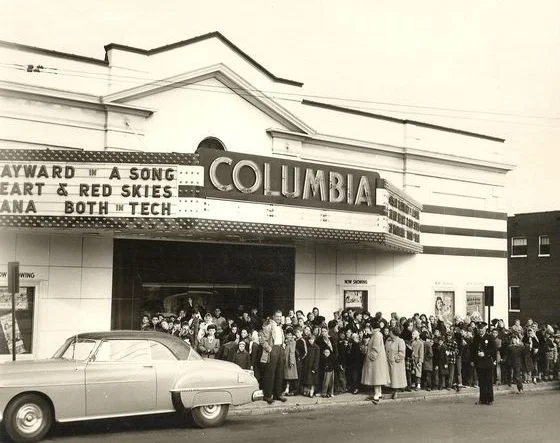The Hill is a St. Louis neighborhood located south of Manchester, north of Southwest and Columbia, west of Kingshighway and east of Hampton:
The Hill showed a loss of 6% of its residents from 1990-2000 for a total of 2,692 people counted. 95% white, 3% black, 1% Asian, 1% Hispanic/Latino. There were 1,486 housing units: 93% occupied and 66%/34% split owner/renter. The decade between 2000-2010 saw another 8% loss of population: with nearly the same racial makeup. 2010-2020 was looking better with a 2% lift of residents and minor racial changes: 90% white, 3% Black, 1% Asian, 2% Hispanic/Latino and a large bump in mixed races. The Hill has 21 fewer total housing units, but saw a 4% decrease in vacant housing.
My original posts for The Hill, Central West End and Downtown were wiped of all photos. I’m not sure how they were lost, but they were all deleted.
Thankfully the fine folks at NextSTL have a backup, so here’s a link to the original post:
The Hill Neighborhood circa 2010
This neighborhood has become one of my favorites. It is arguably the last truly ethnic neighborhood in St. Louis. It has retained its feel, yet improved over the last ten years. The walkability is nearly unmatched and the housing is general on the smaller, denser end than most neighborhoods on the South Side.
The Italian heritage is still alive and kicking with bocce, Italian-inspired food and markets, delis, bars and the strong Catholic identity & community around St. Ambrose.
I love the small, no front yard - steps to the porch from the sidewalk, downstairs apartment shotgun homes. These are very rare in St. Louis, but all over the Hill. A truly unique feel will hit you on the Hill.
There are bocce clubs and taverns. Milos was built by the Busch family and still remains one of the most South City, “the Hill” places you can go.
Some residents build bocce courts in their yards!
The market, tavern, restaurant, coffee shop, etc. on nearly every corner is still alive and kicking with some new additions to old favorites expanding offerings for repeat visits.
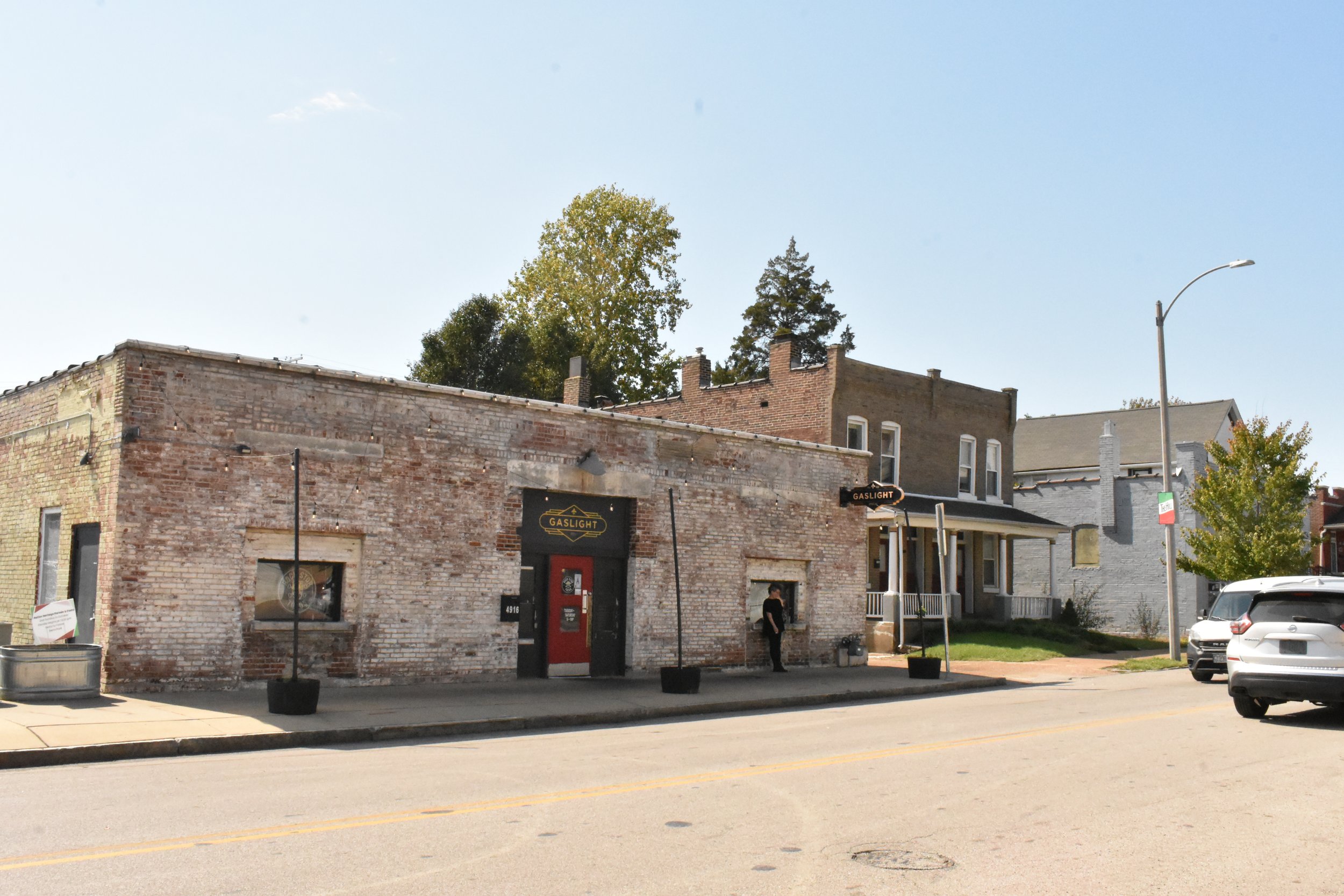
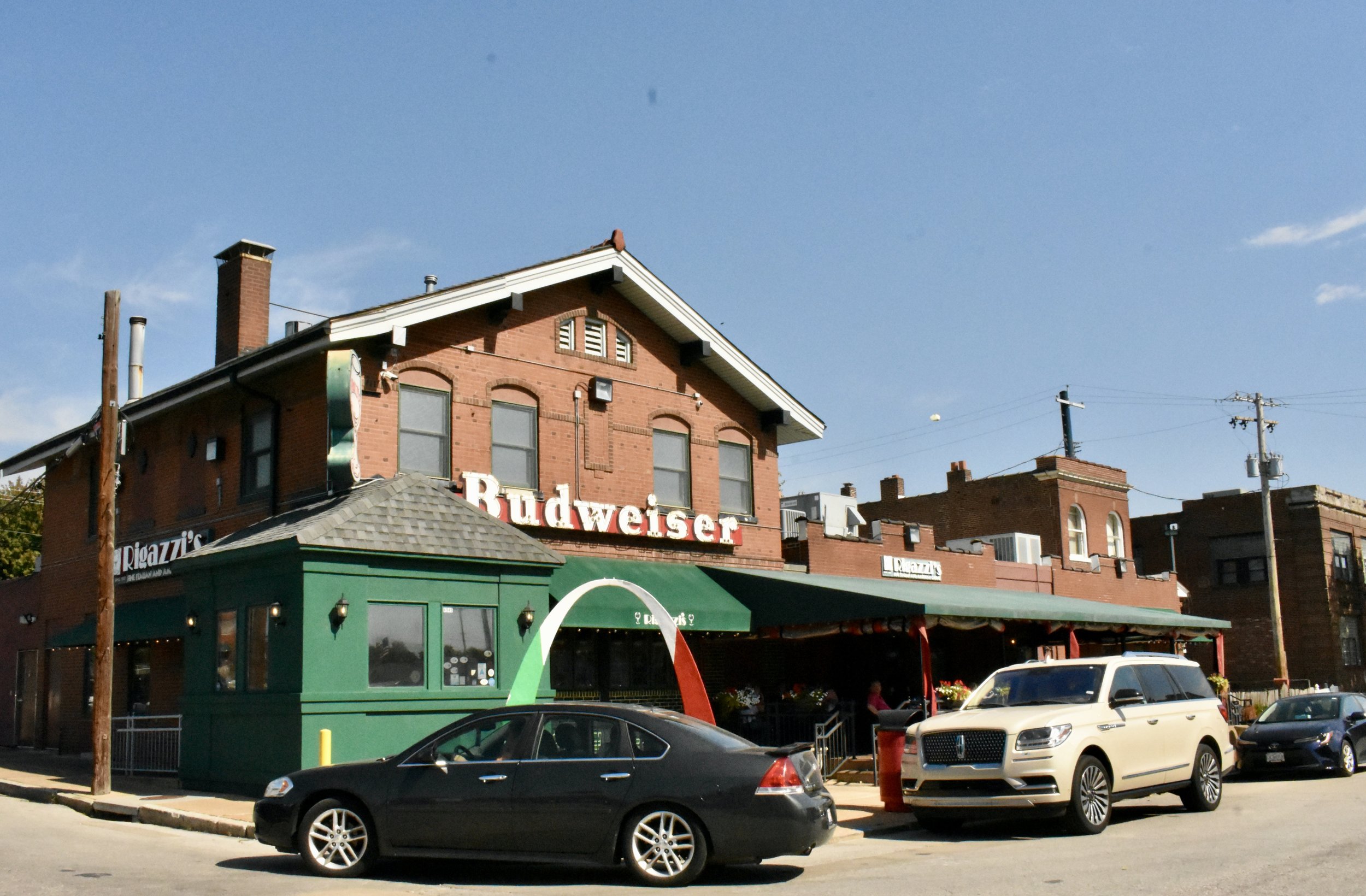
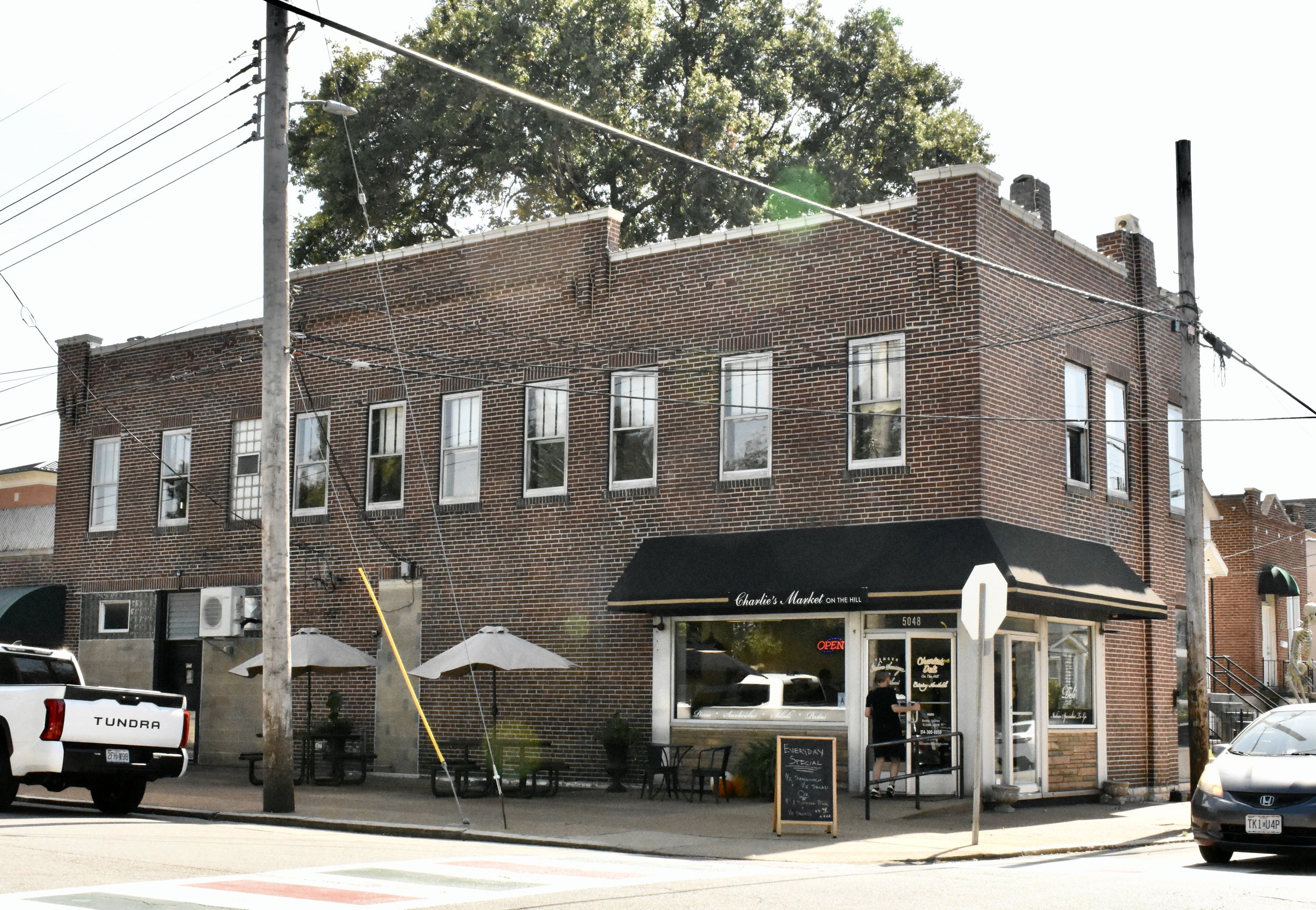
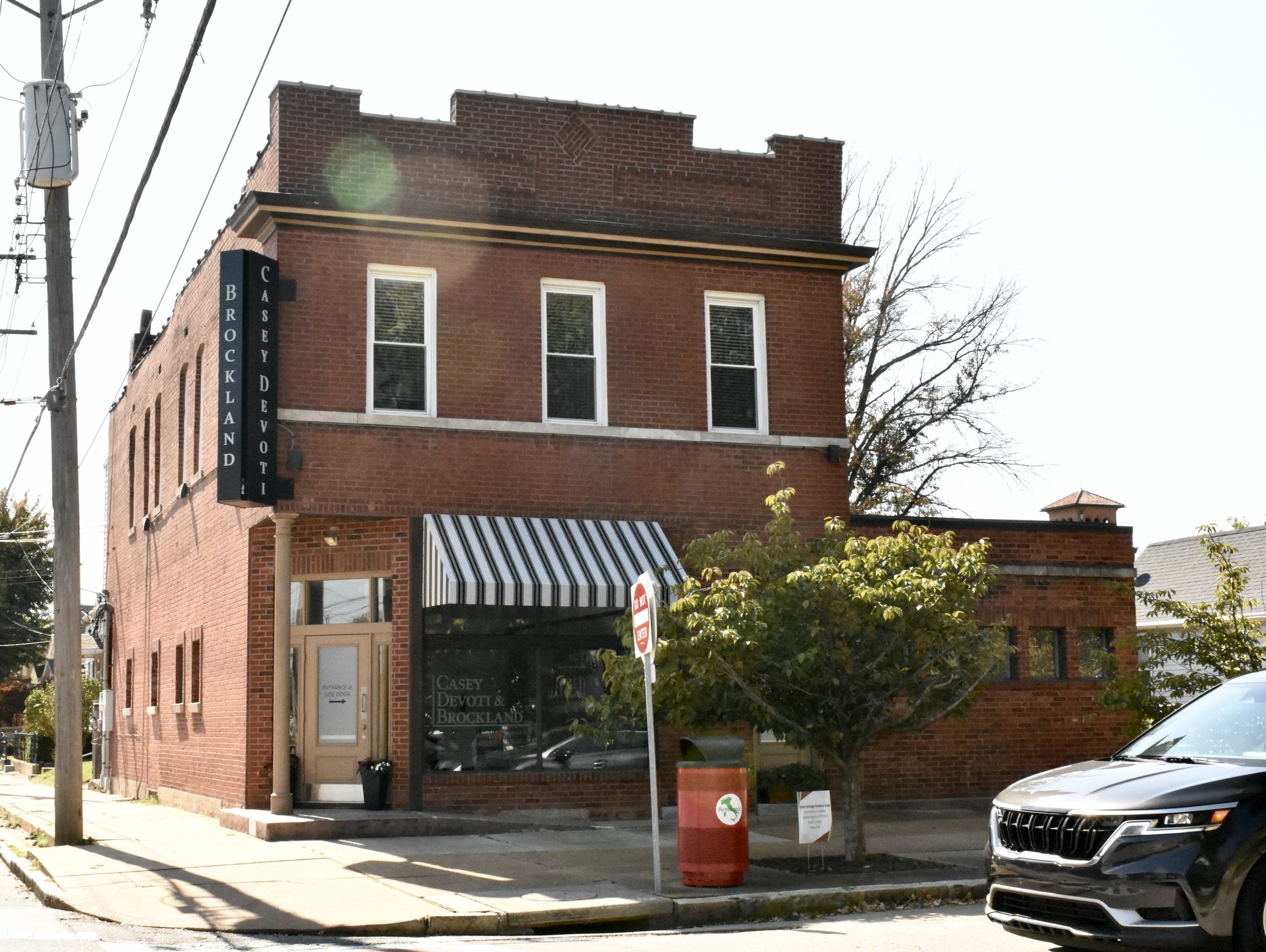
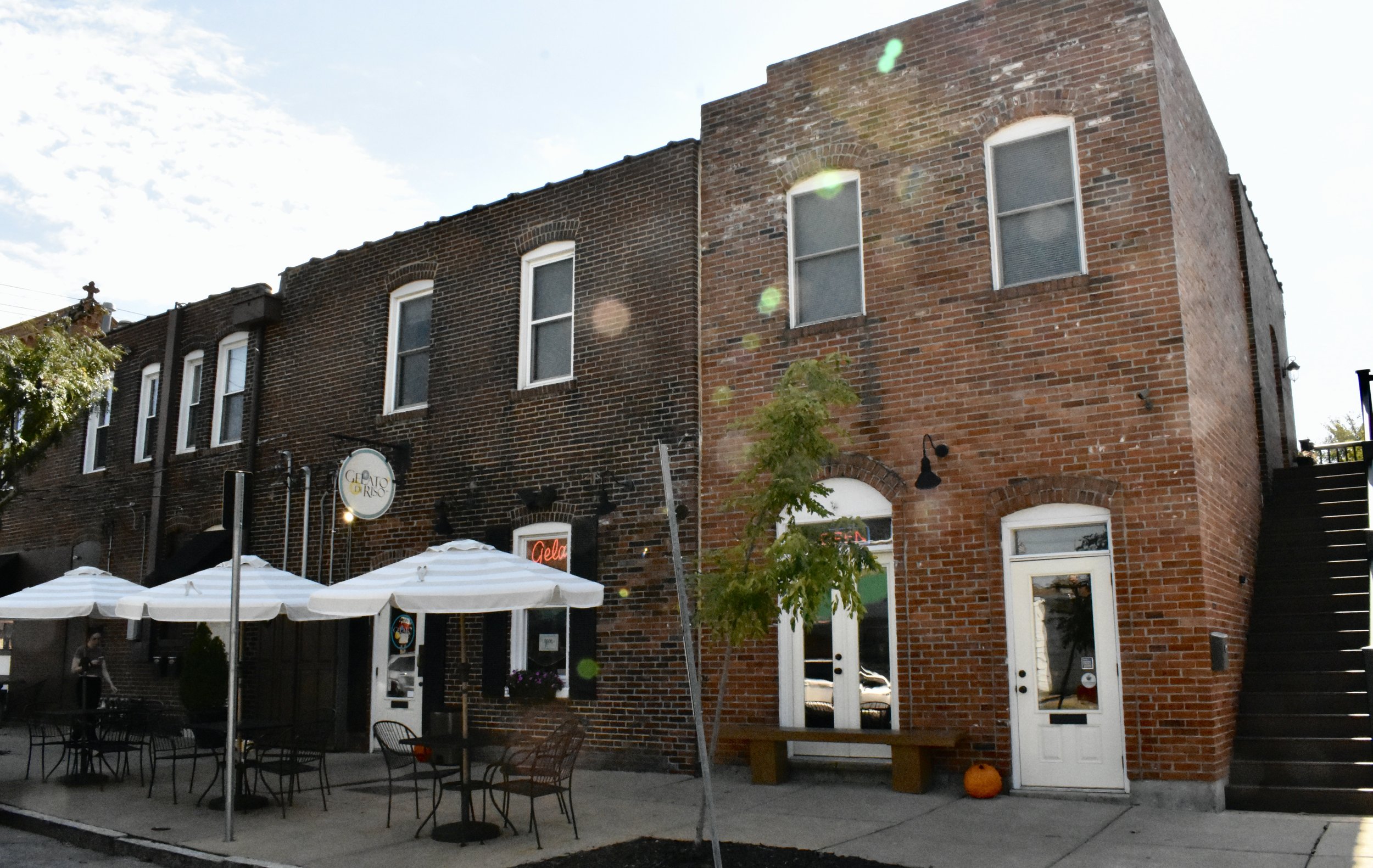
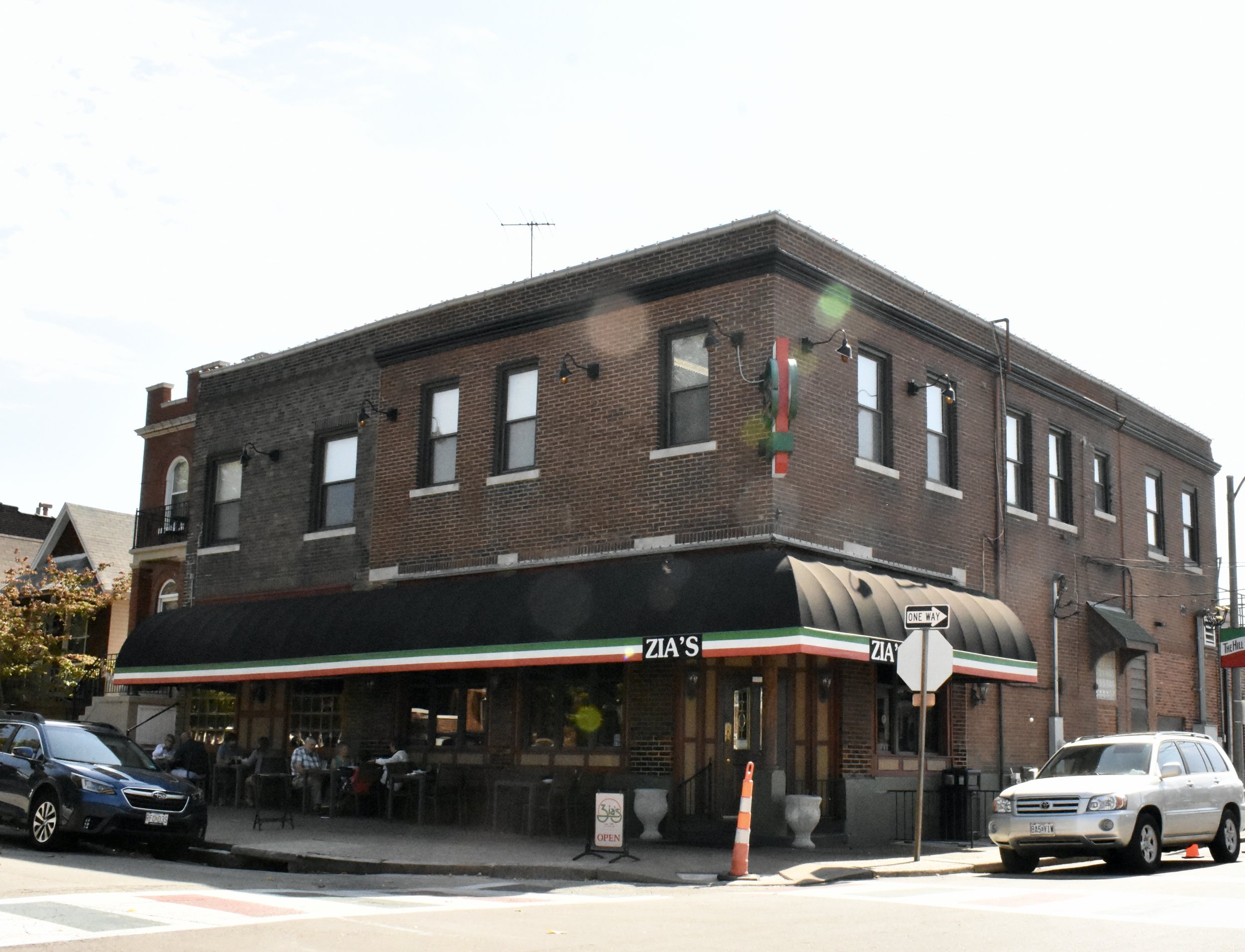
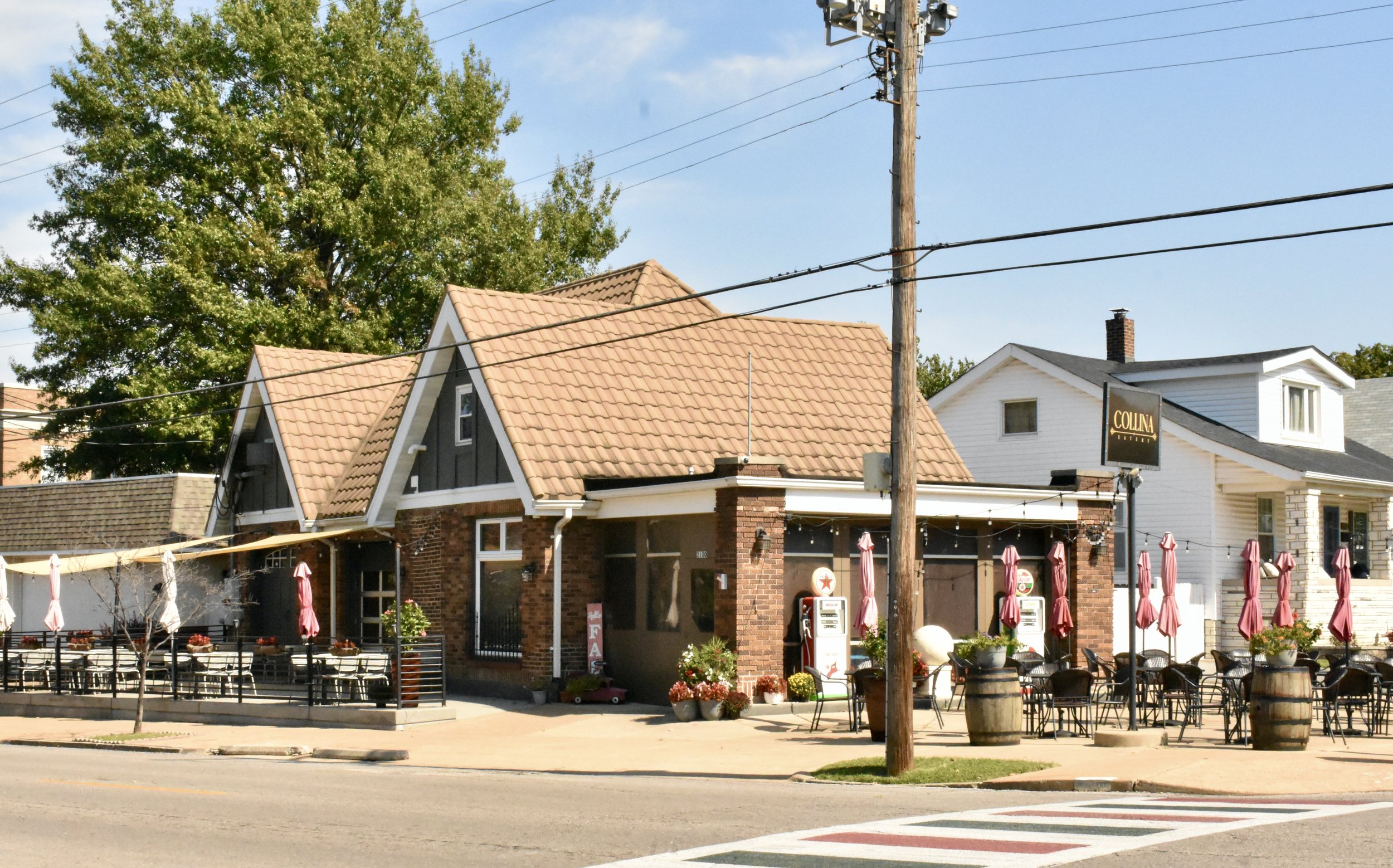
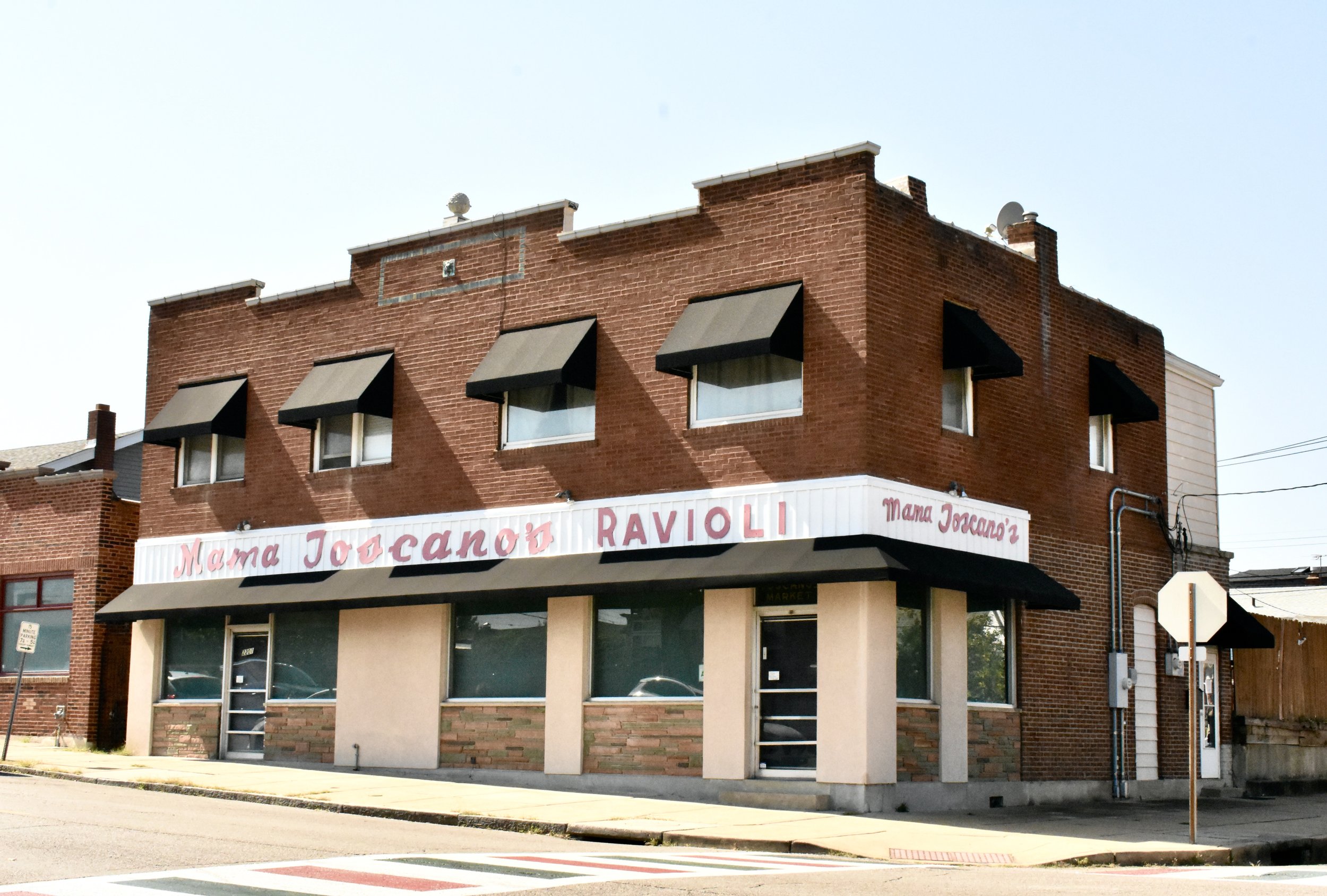
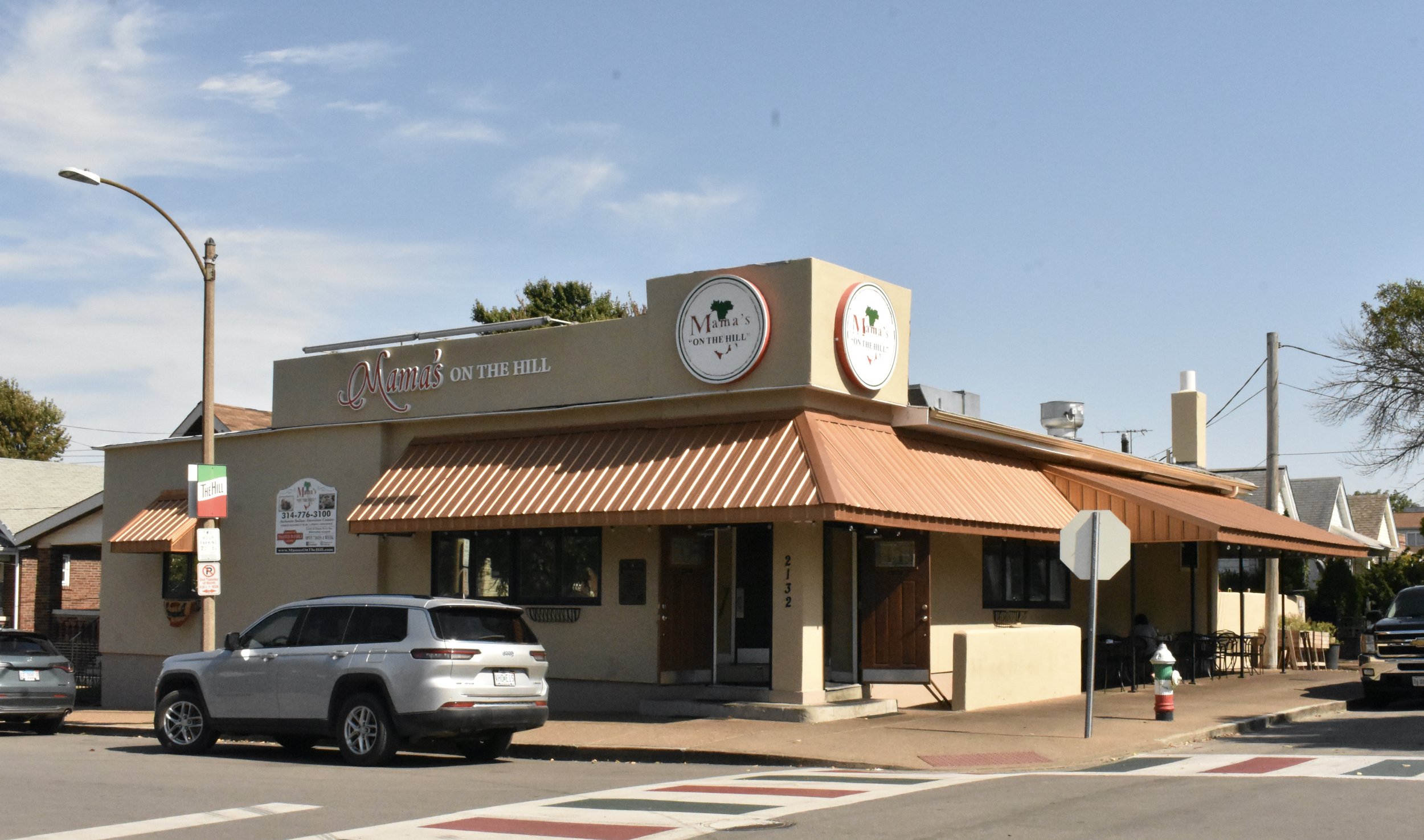
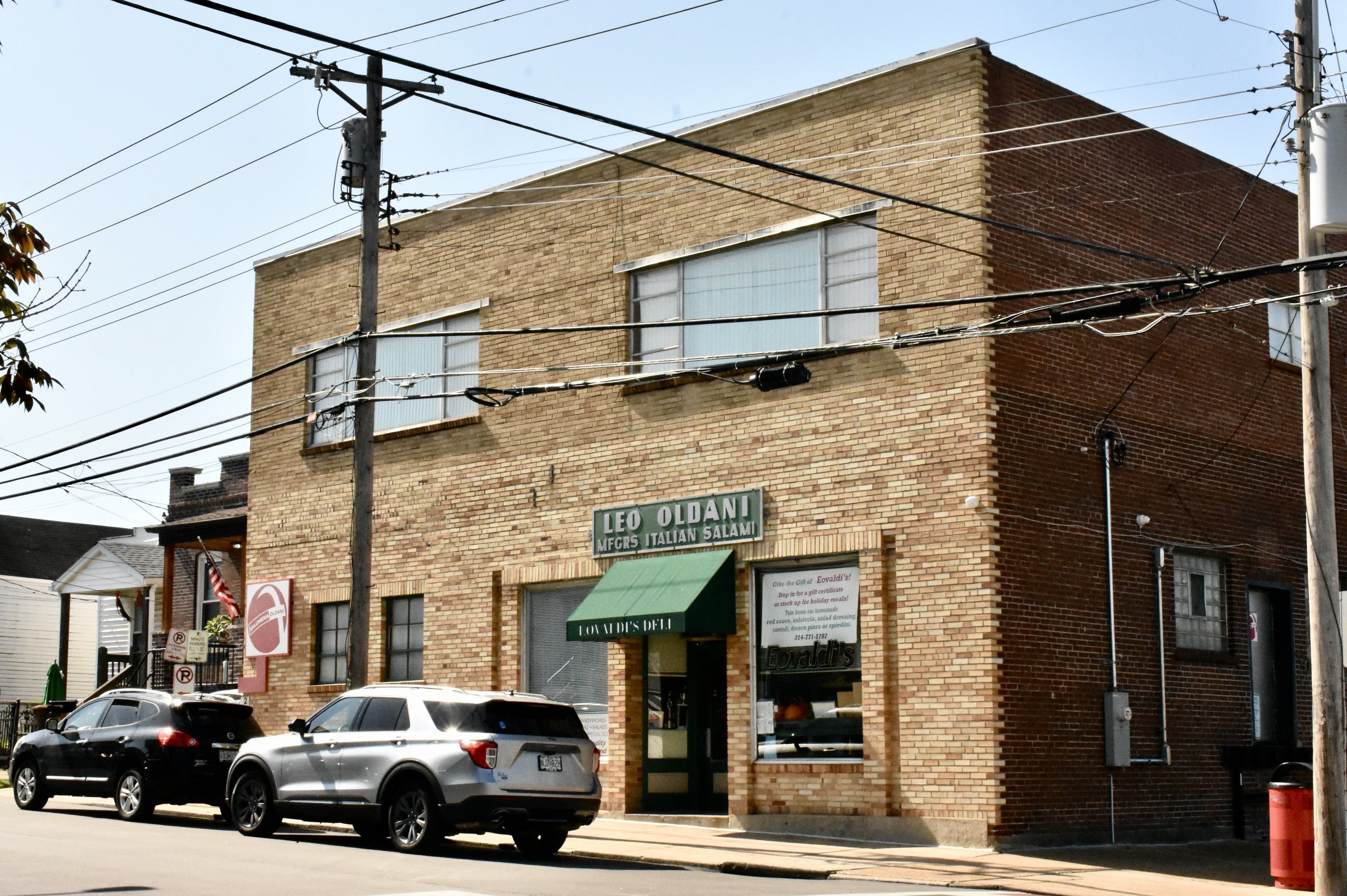
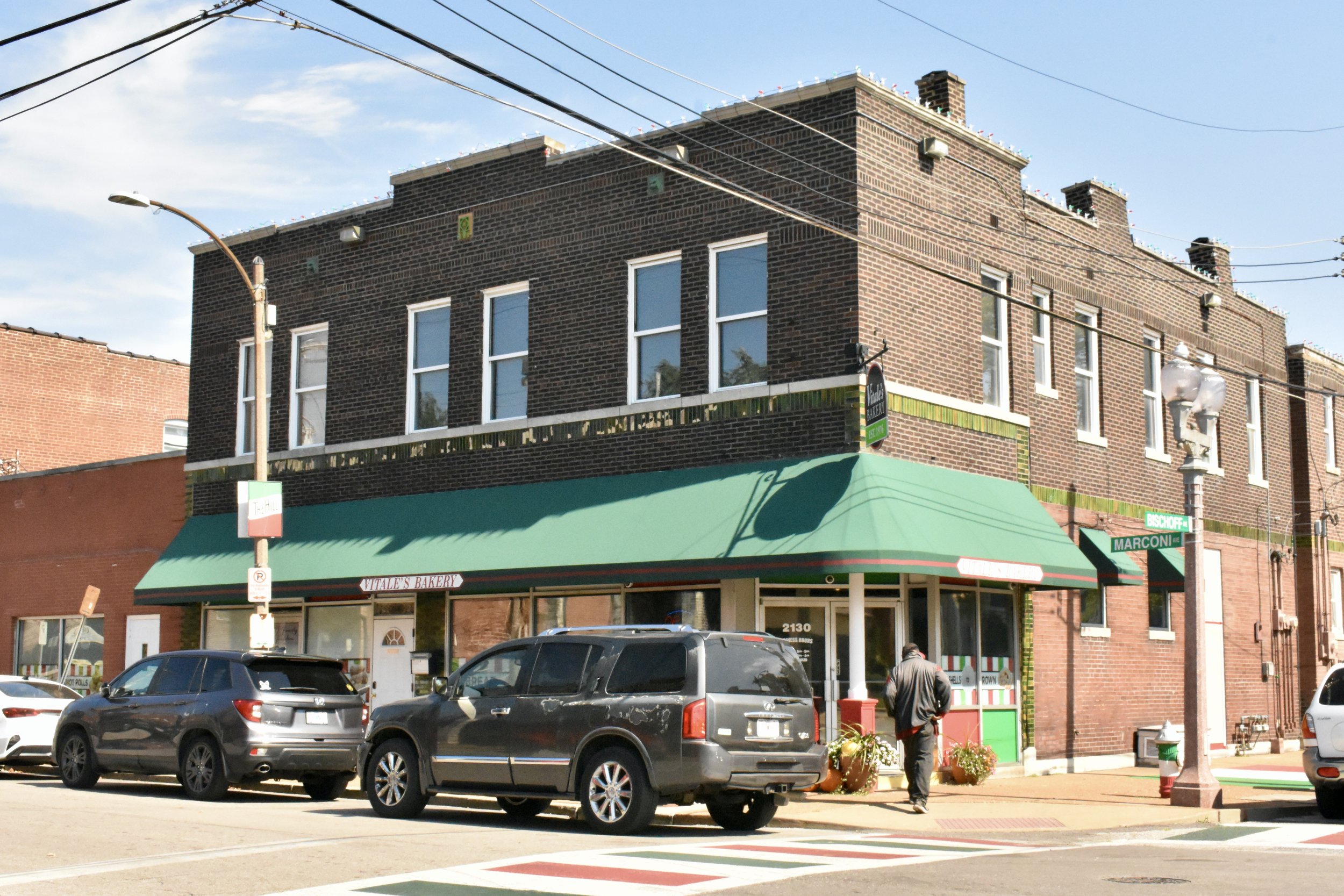
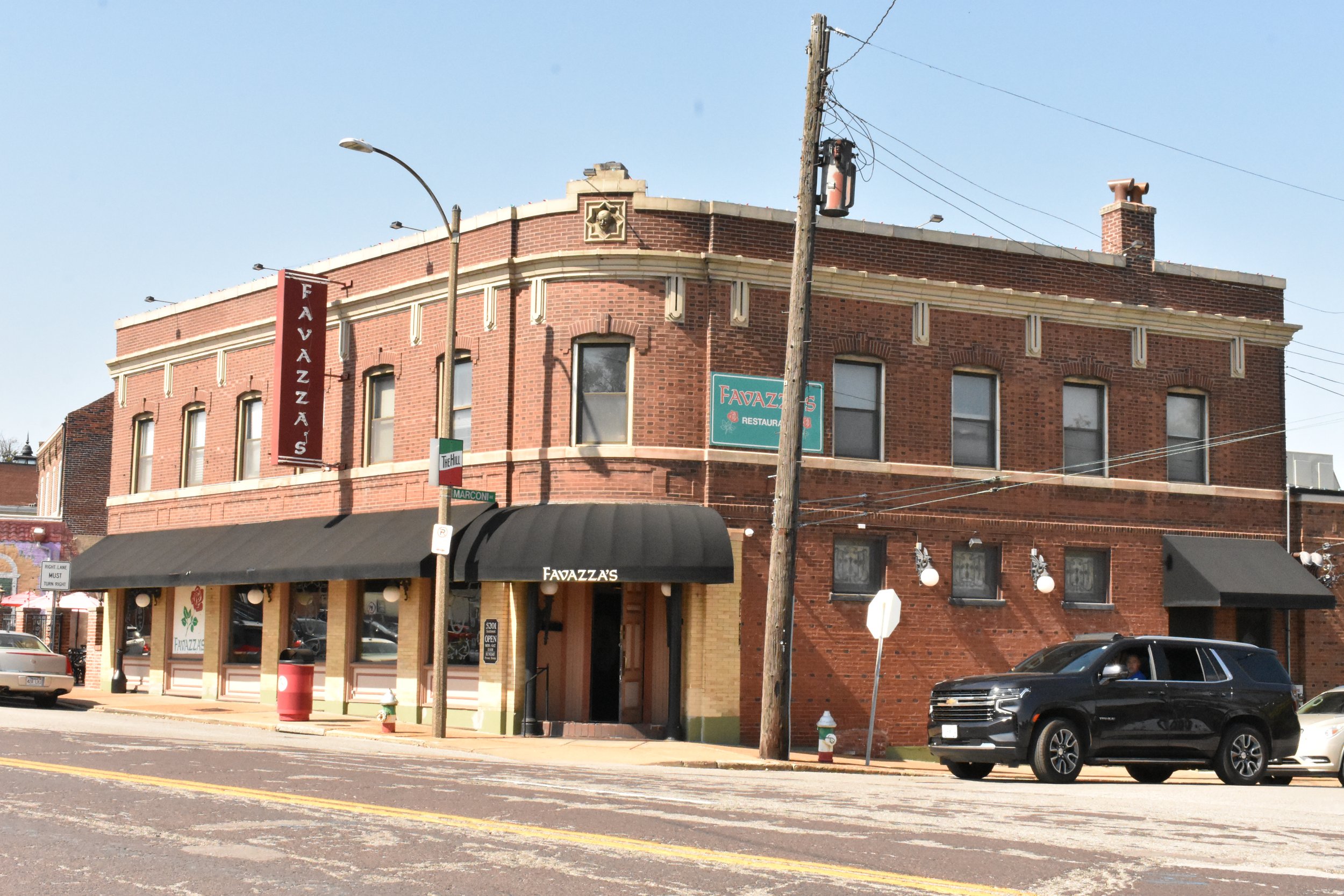
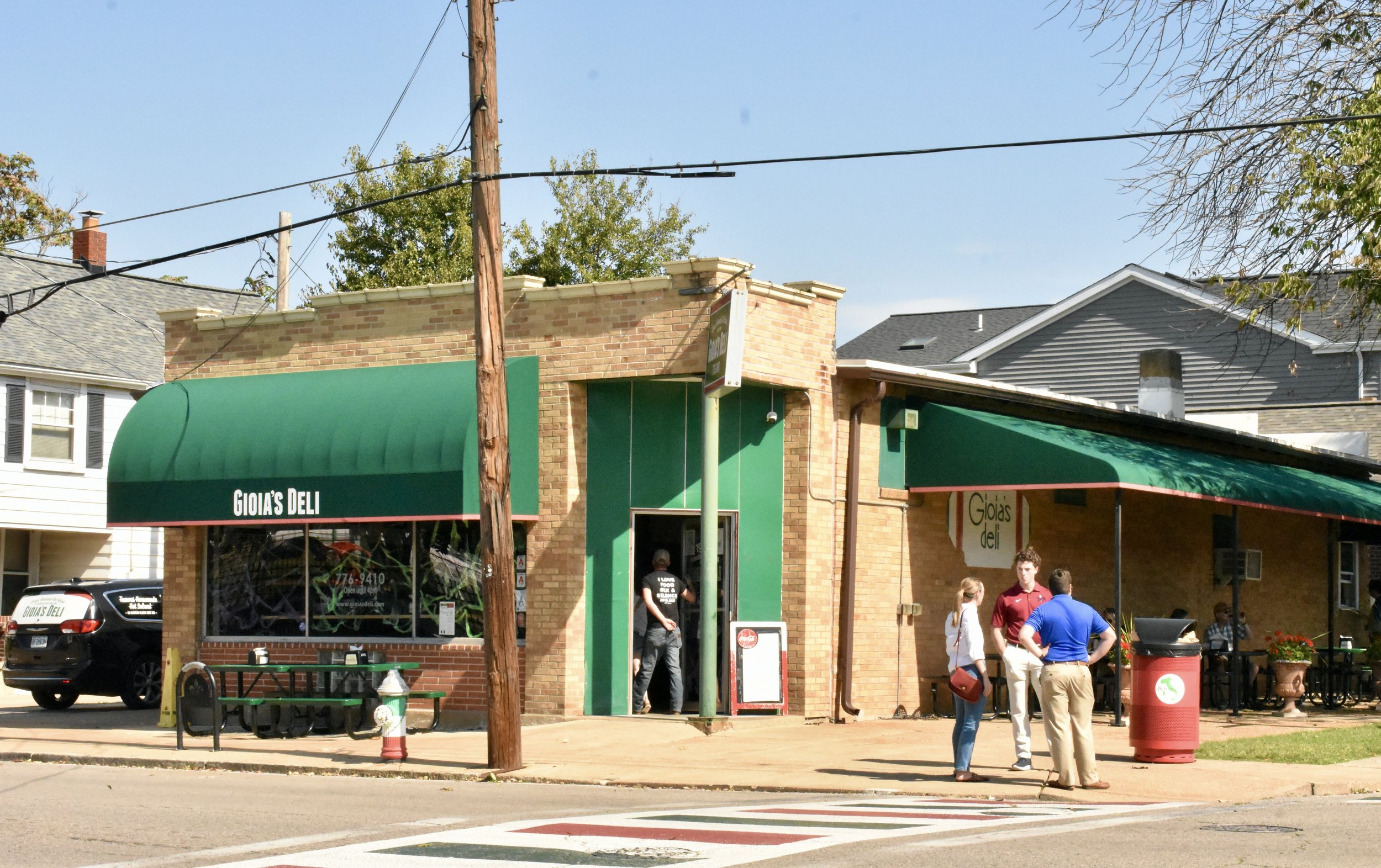
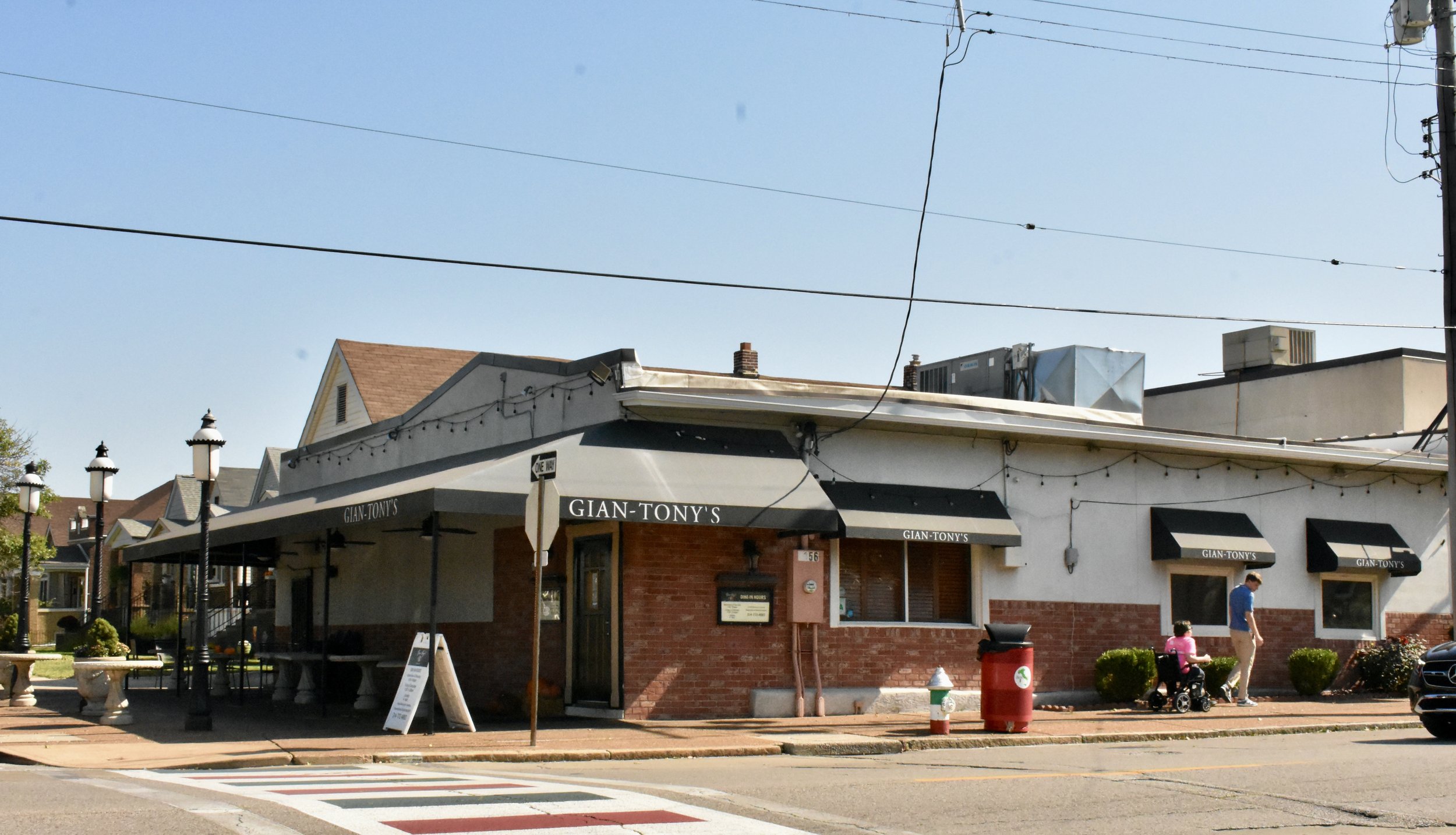
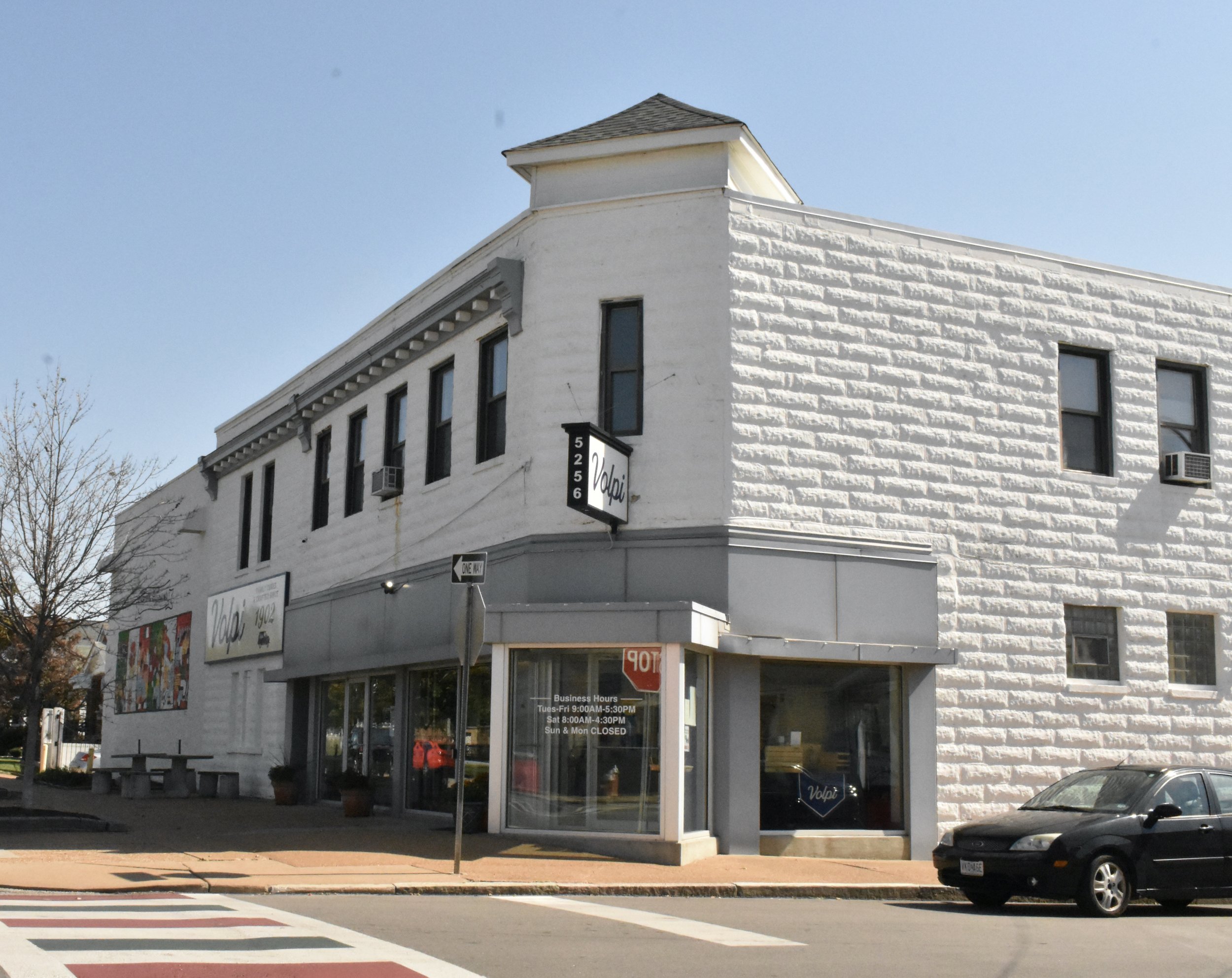
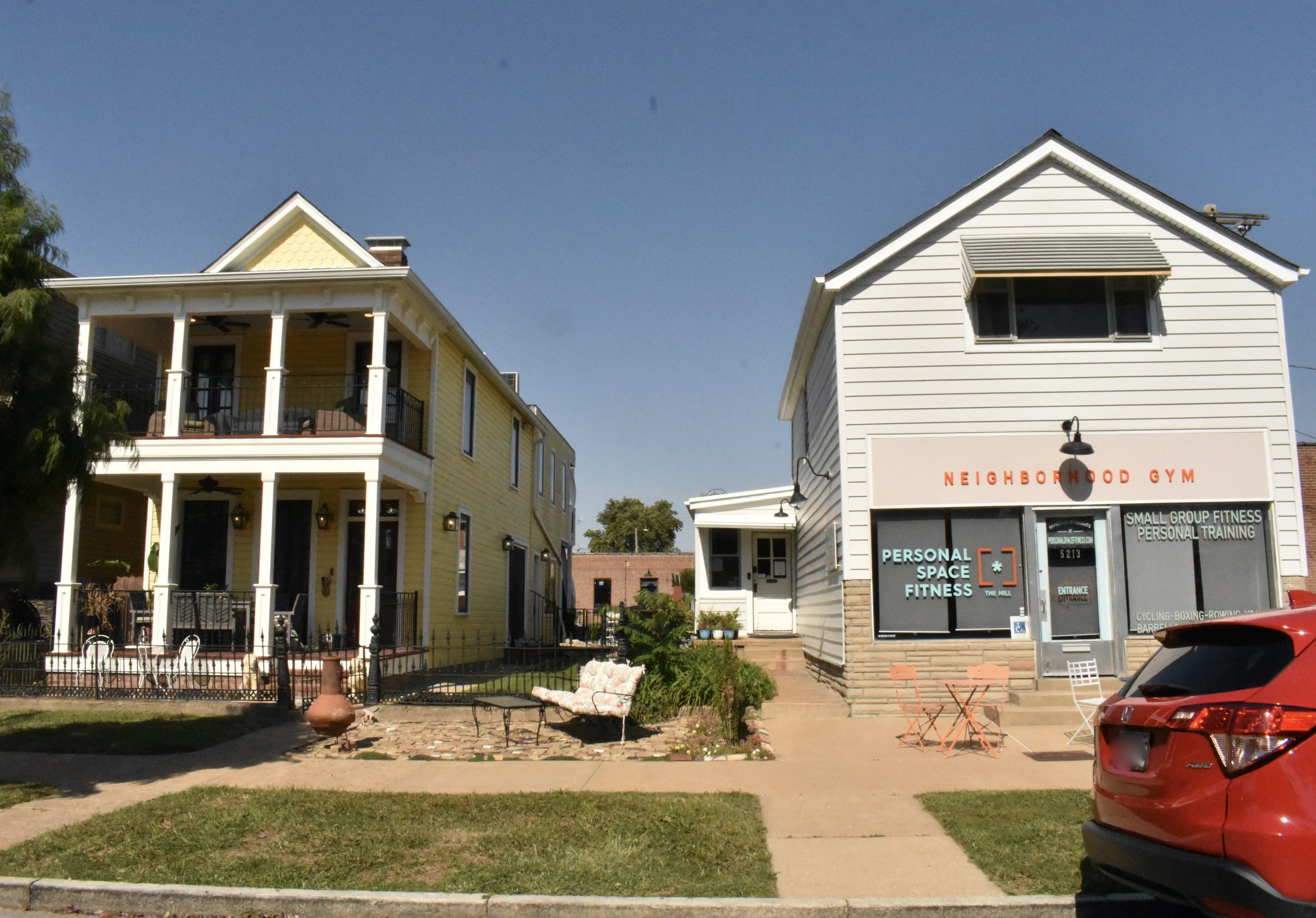
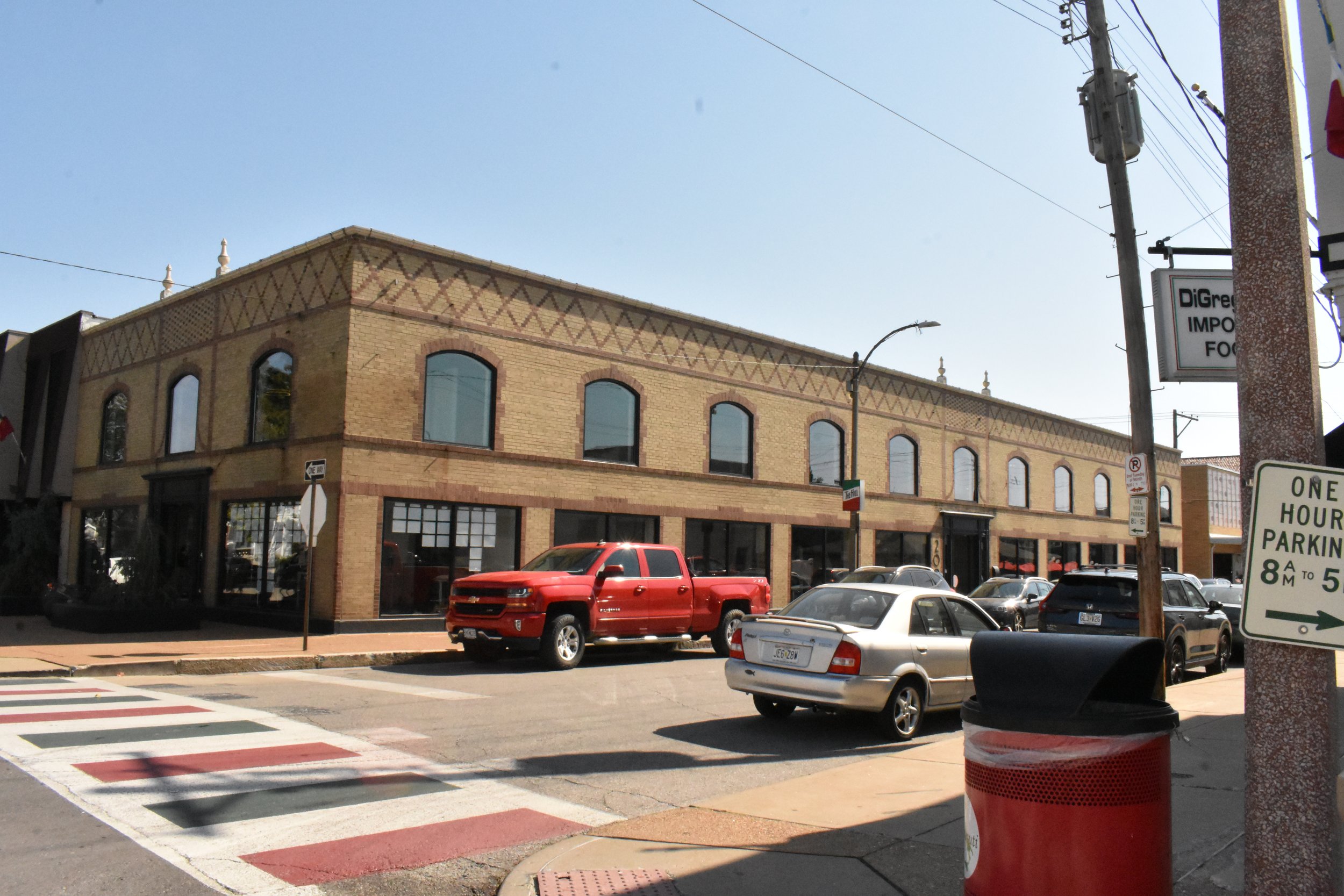
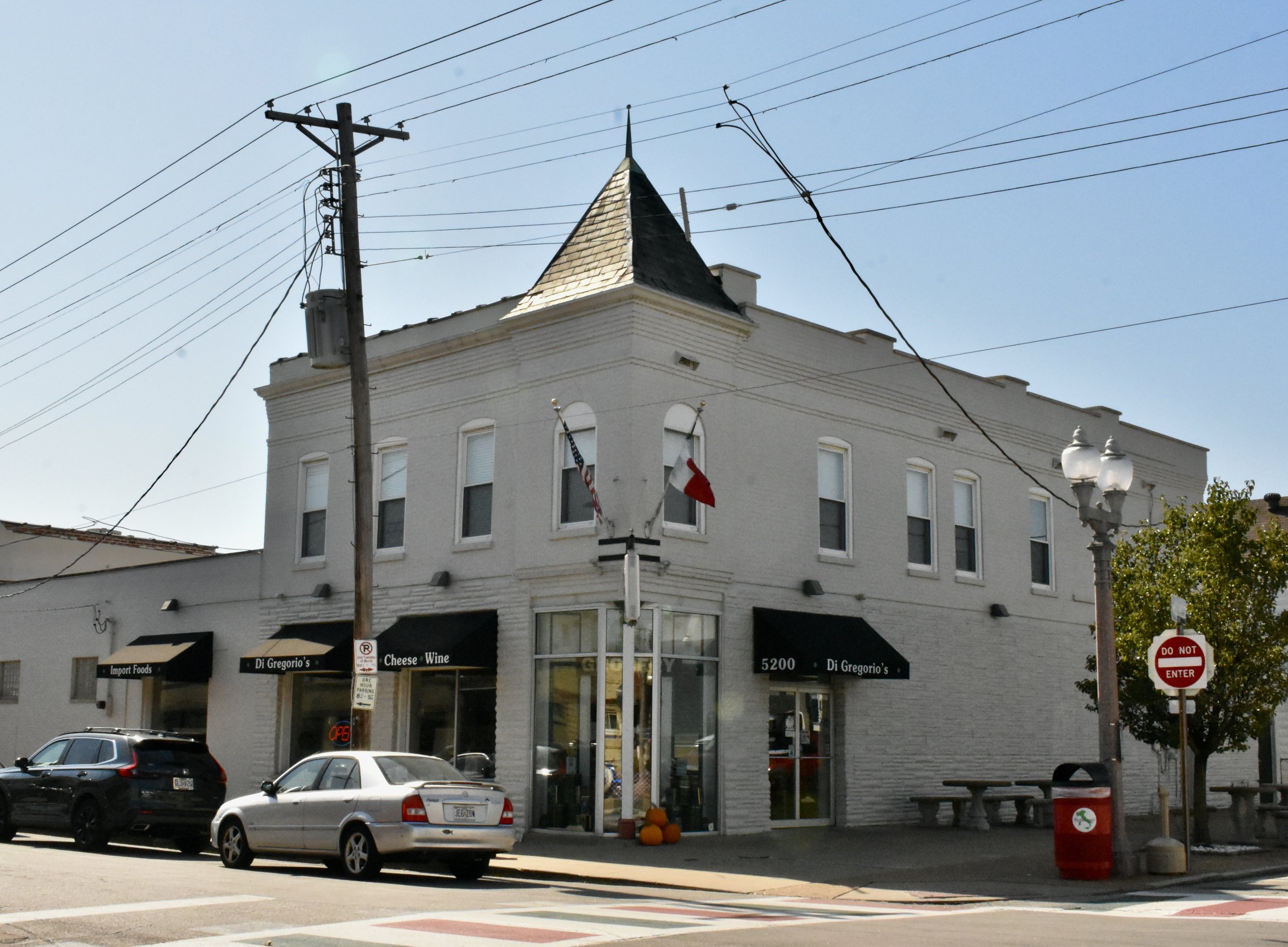
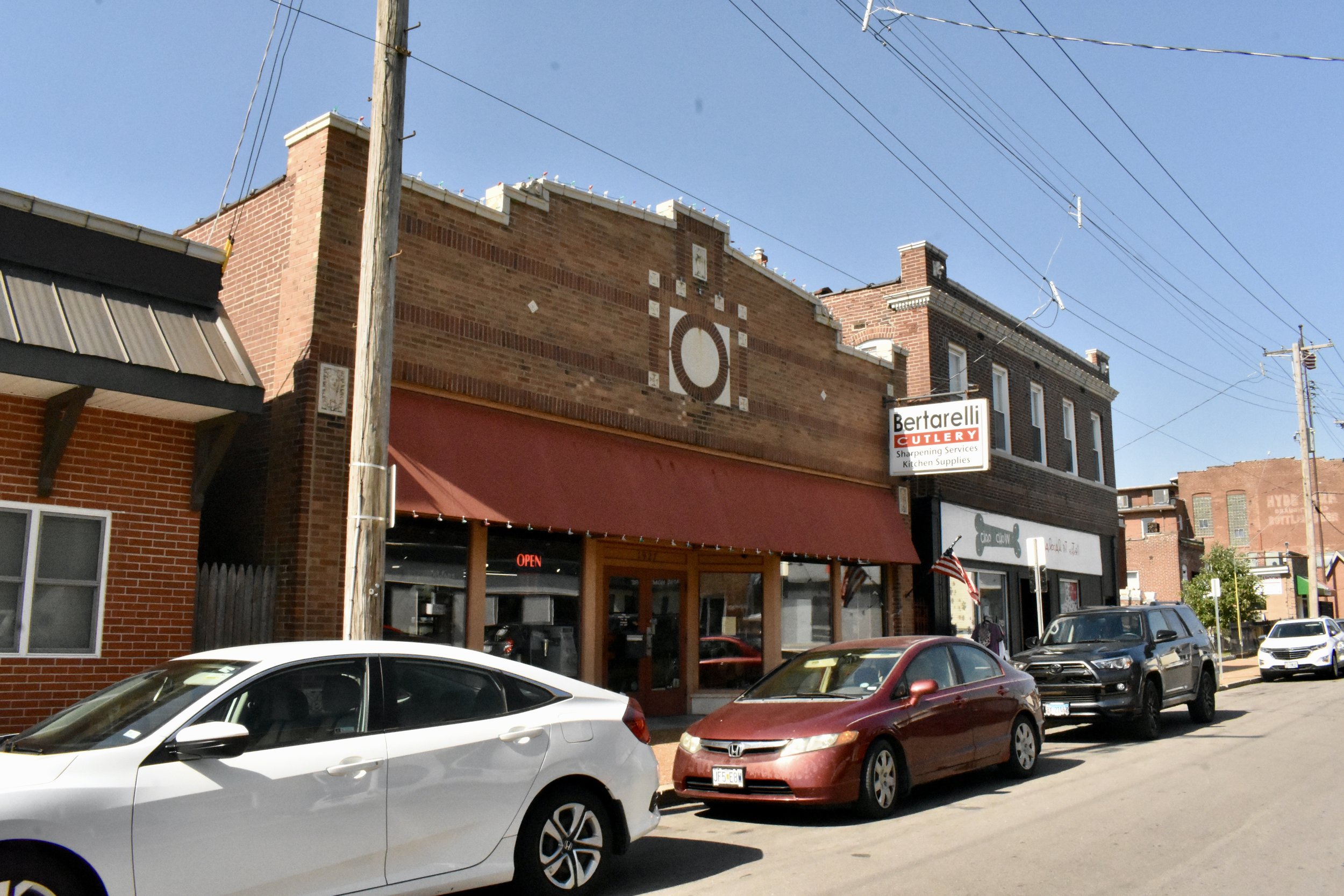
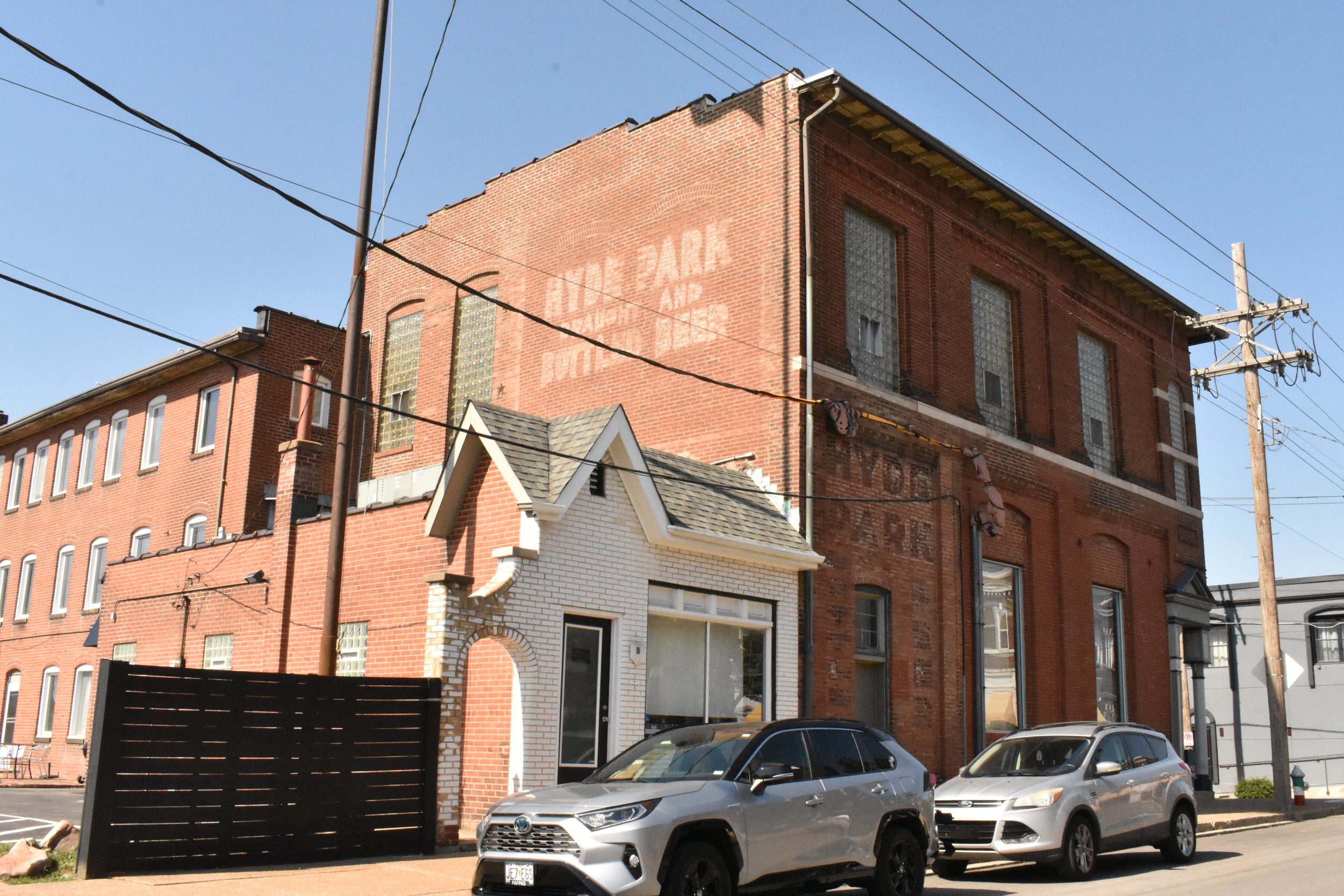
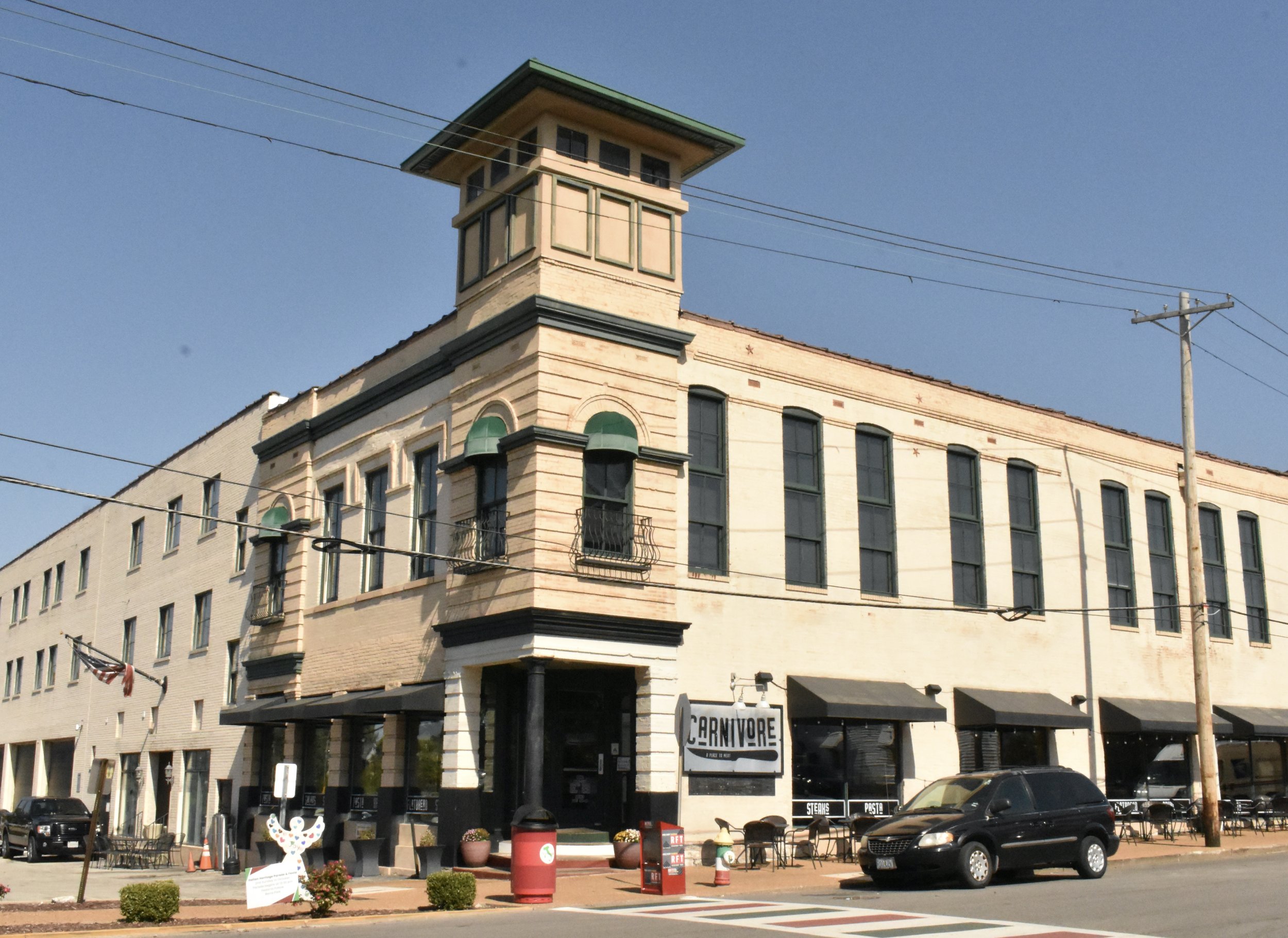
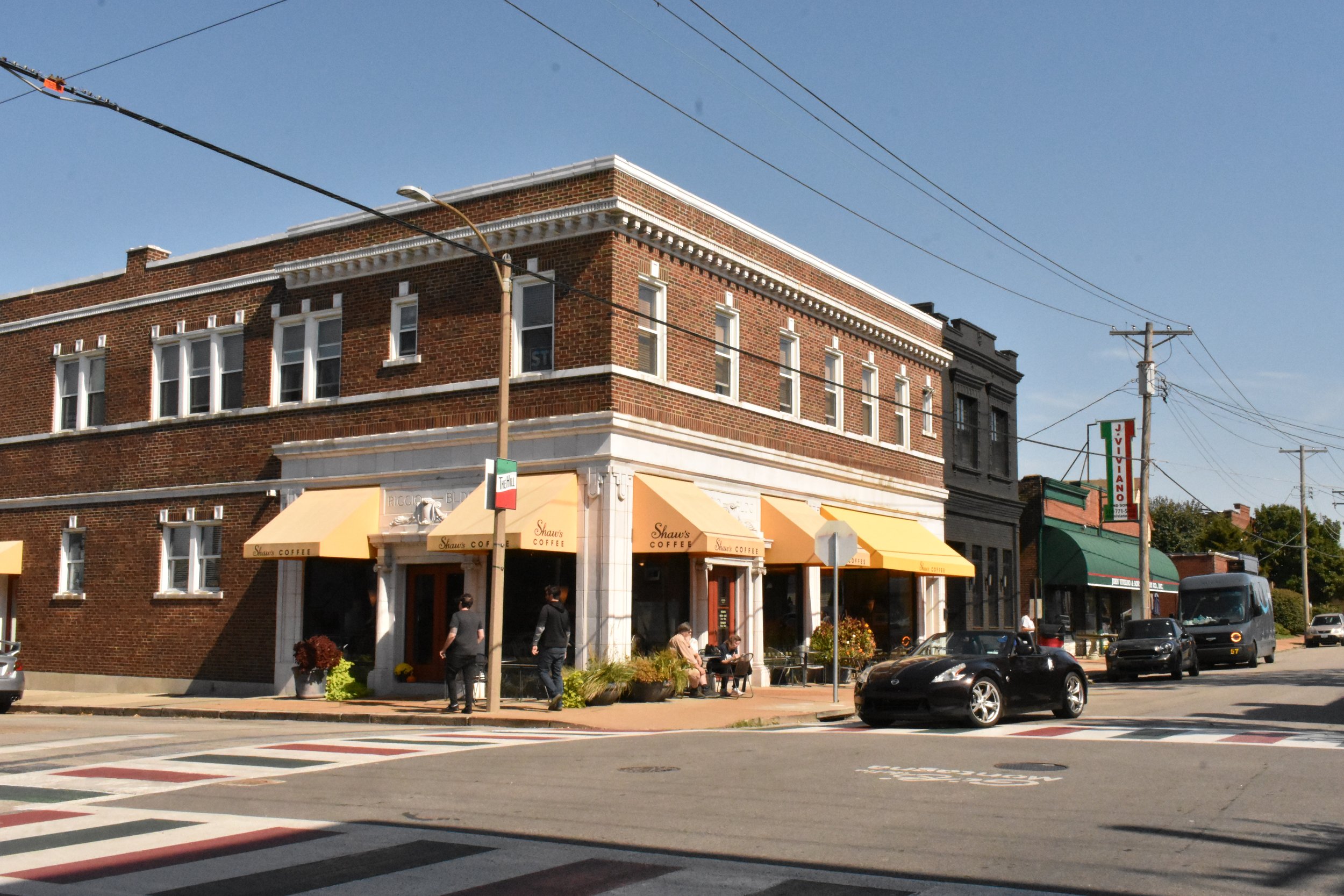
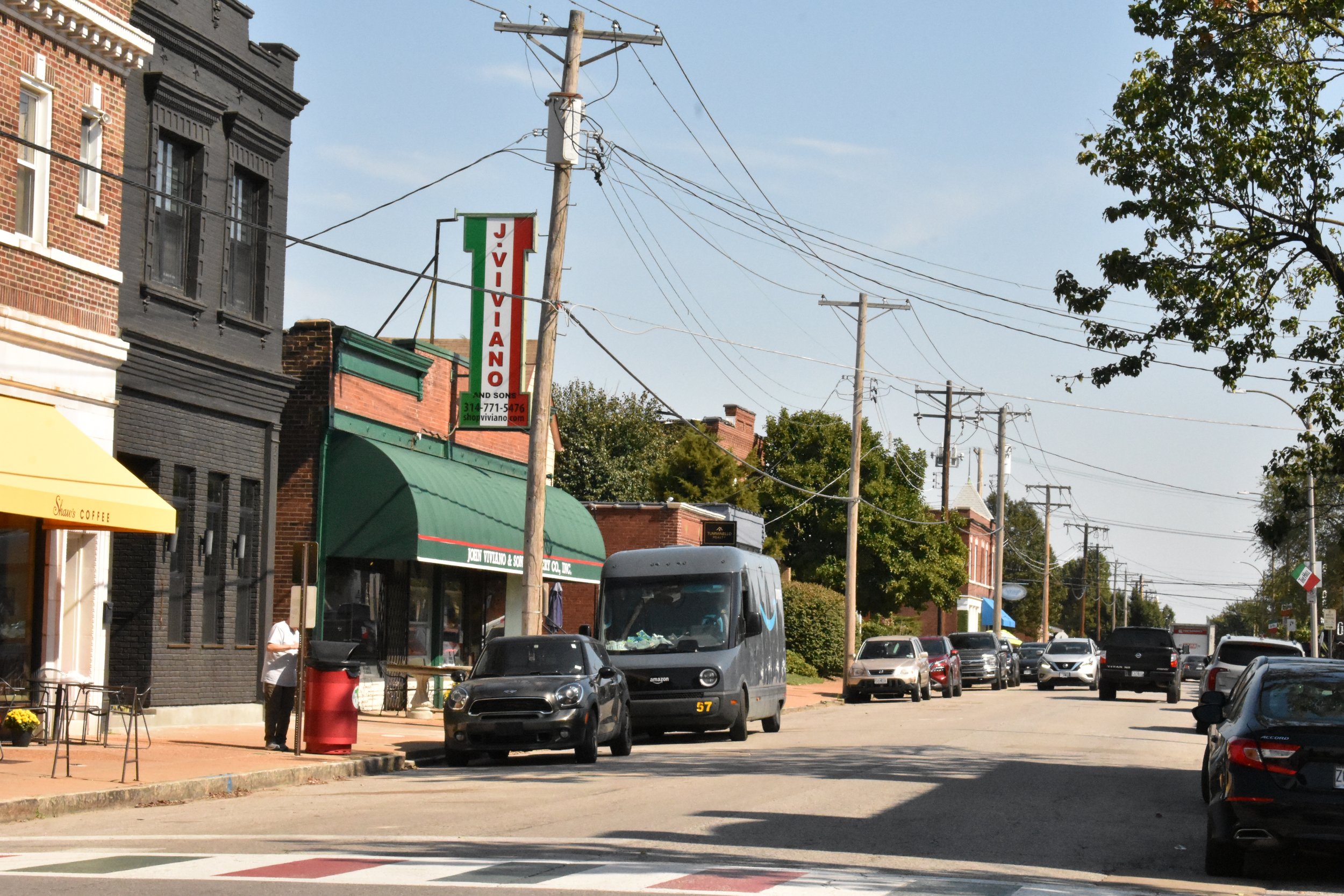
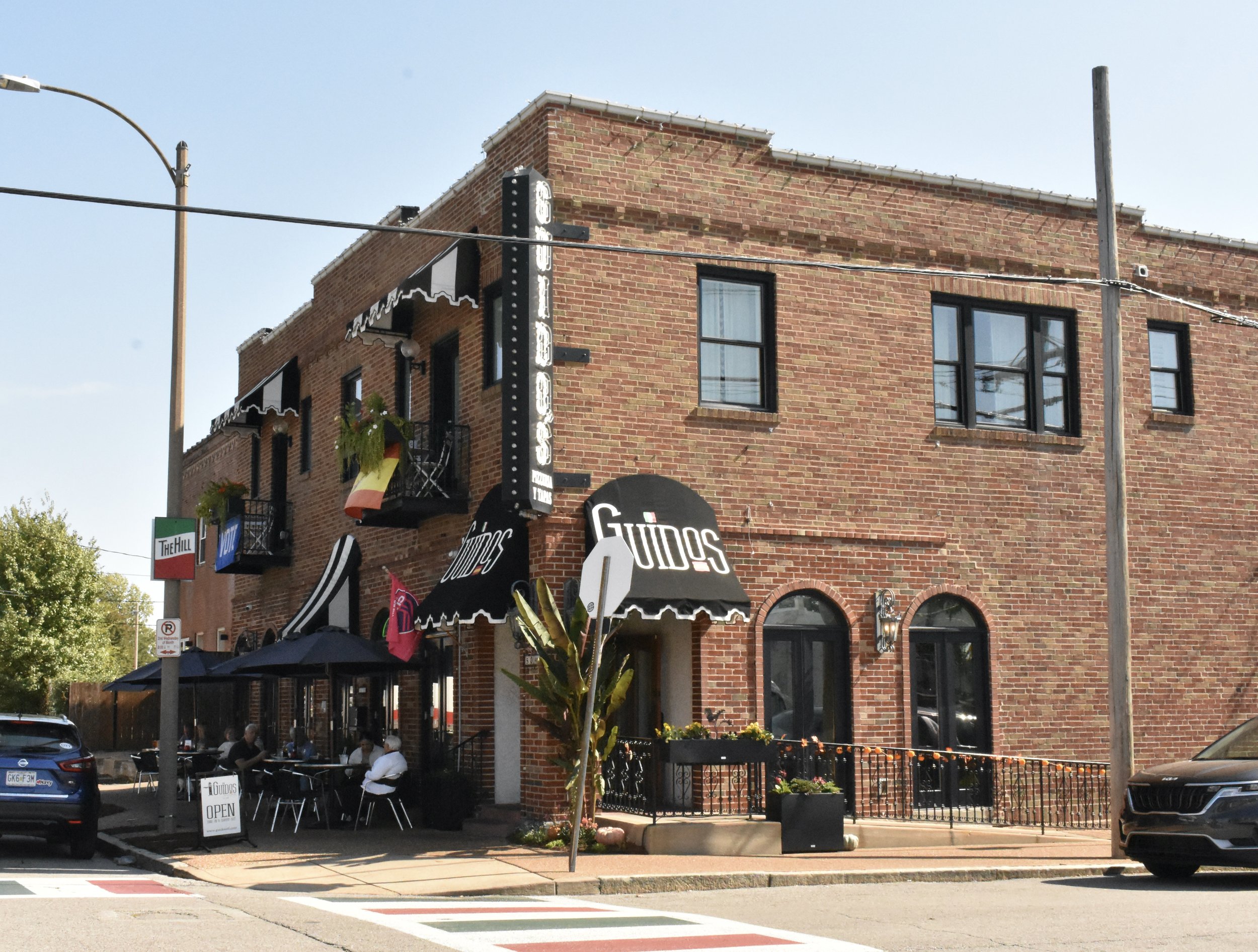
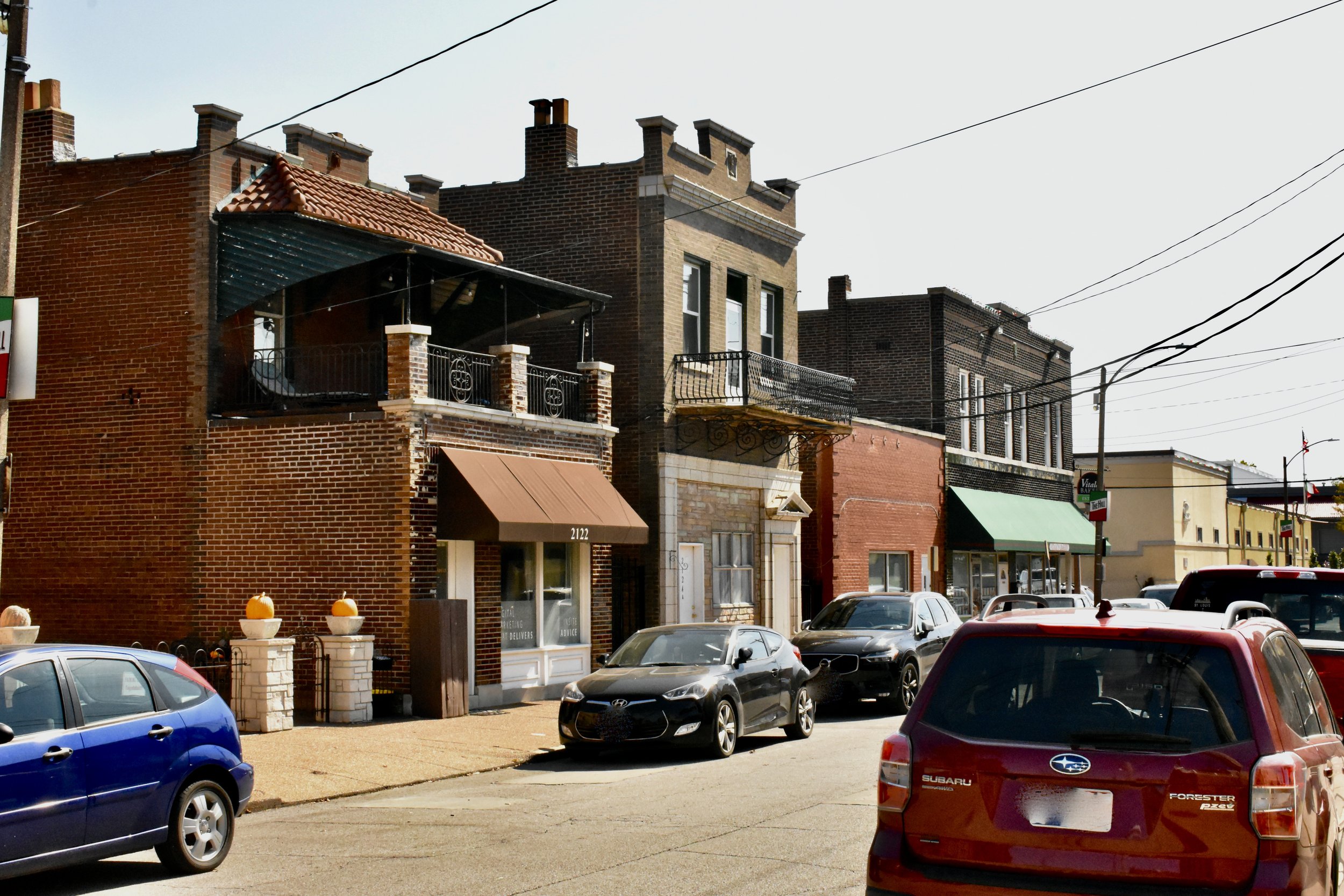
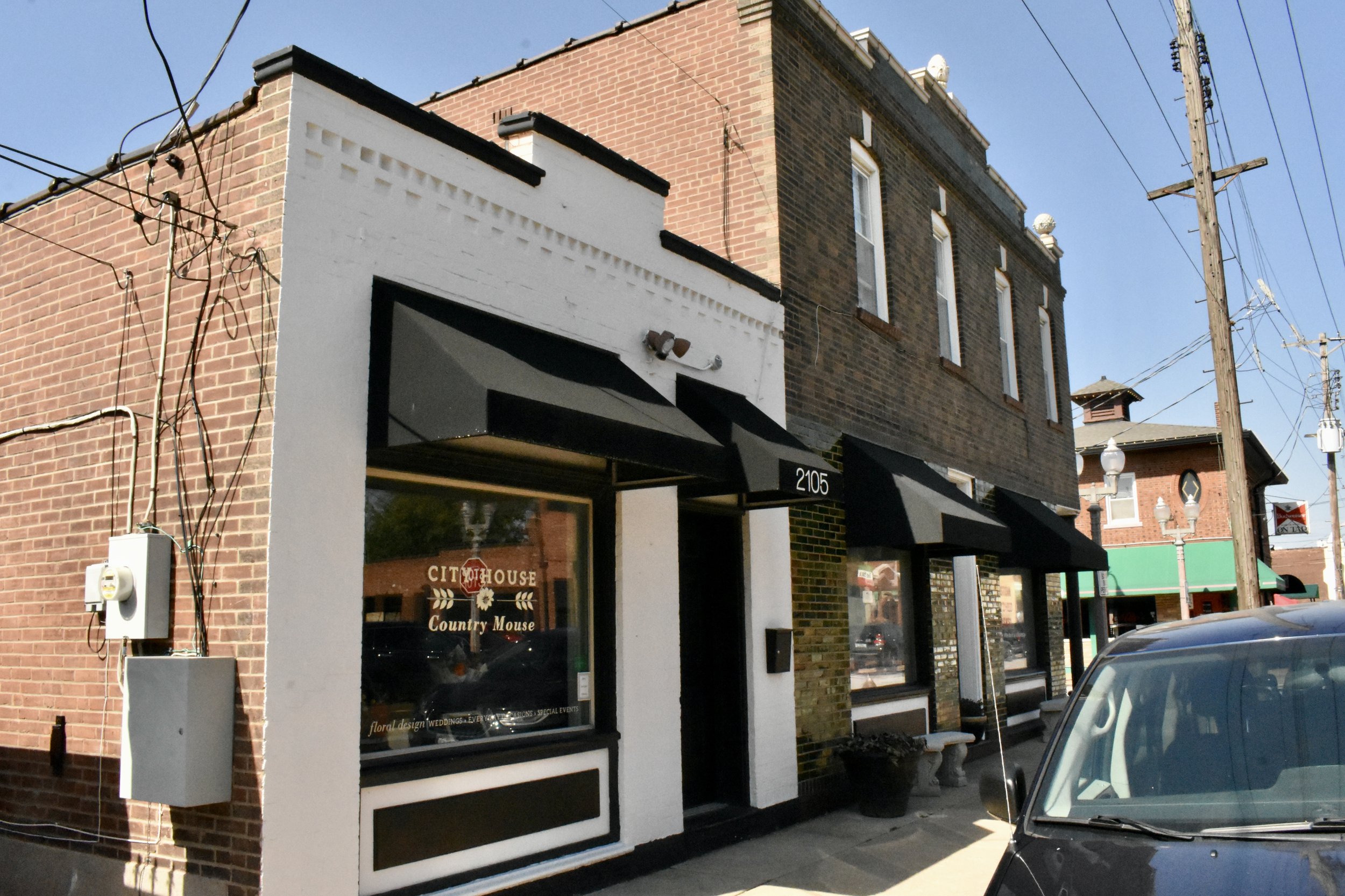
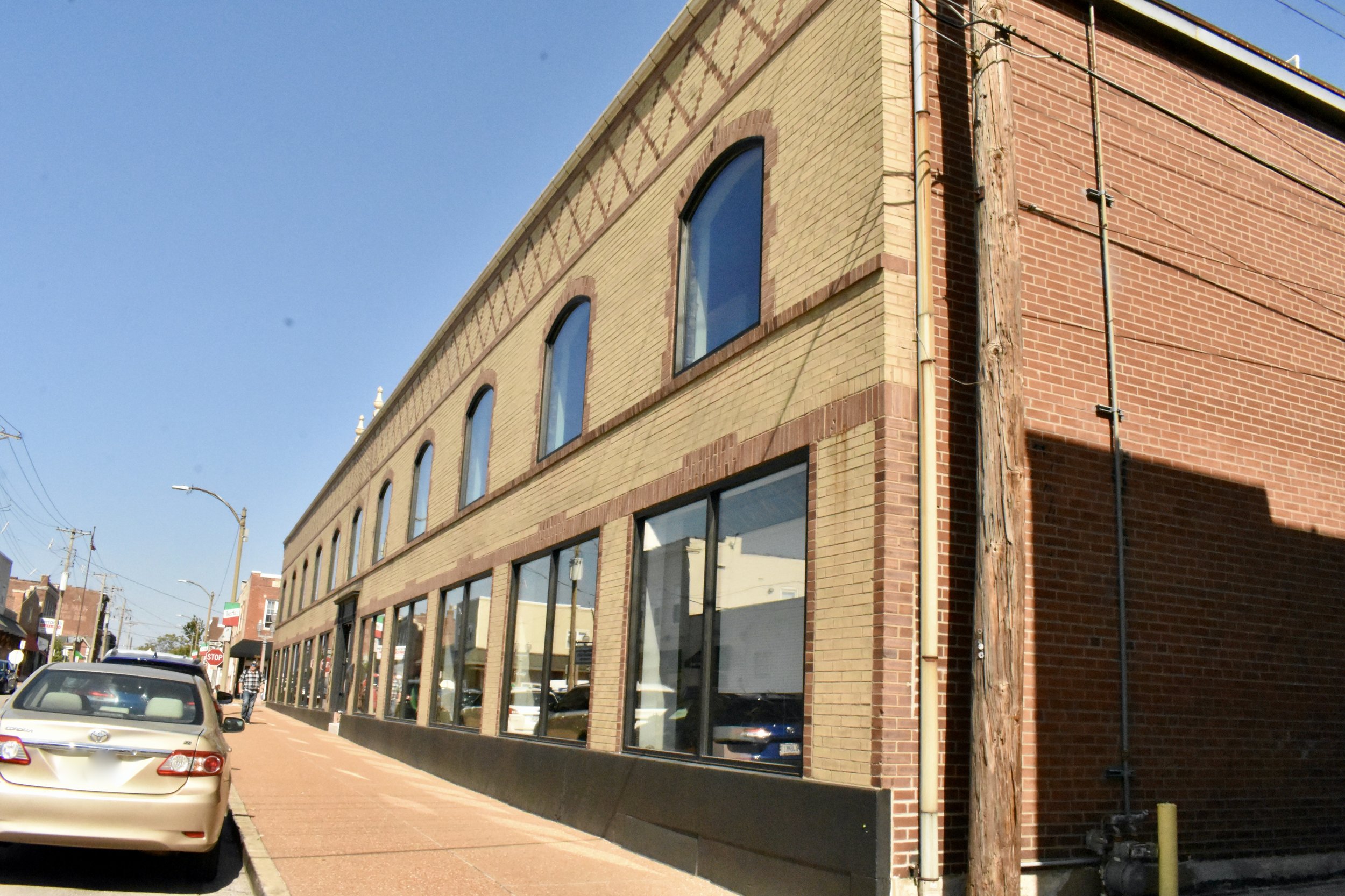
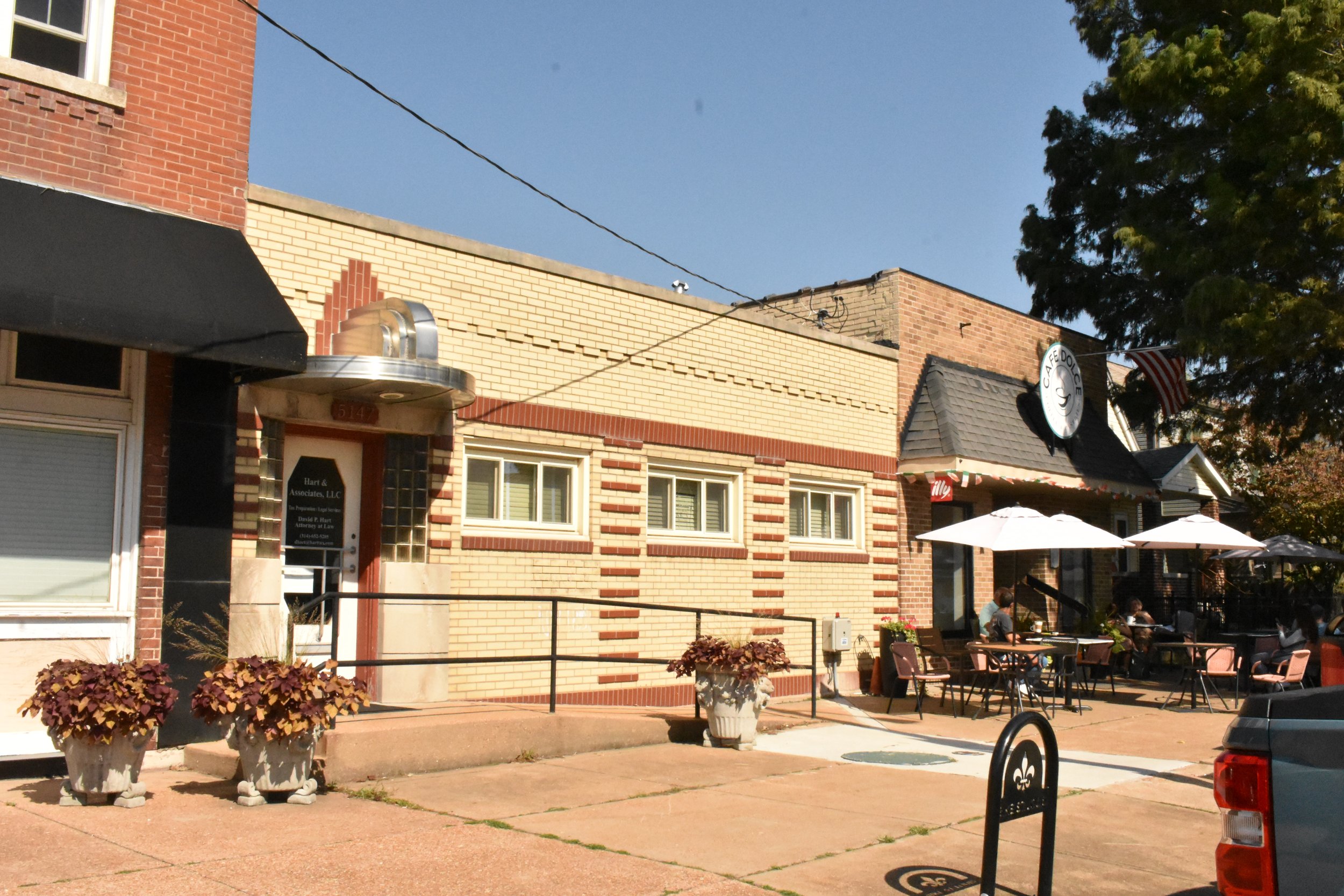
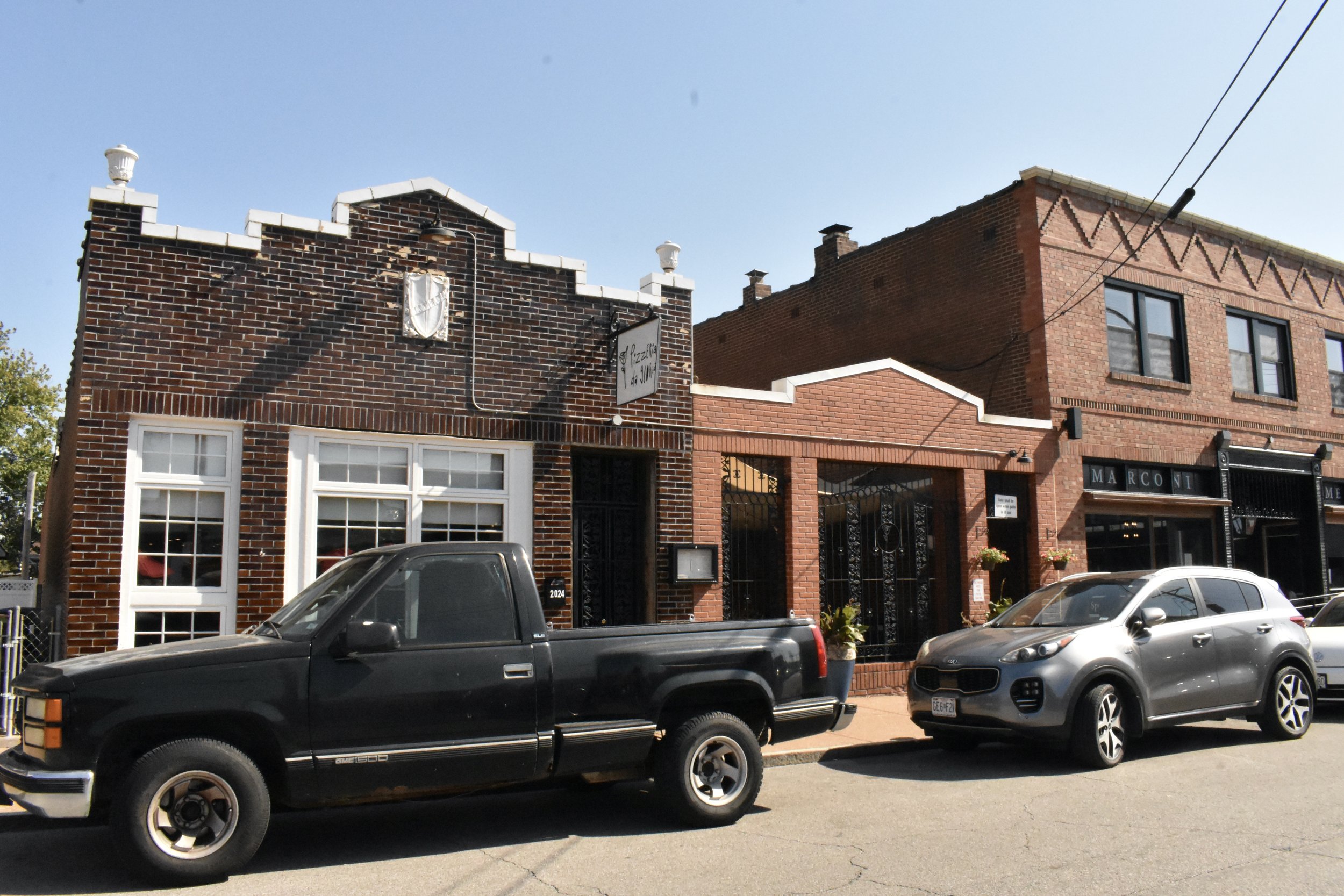
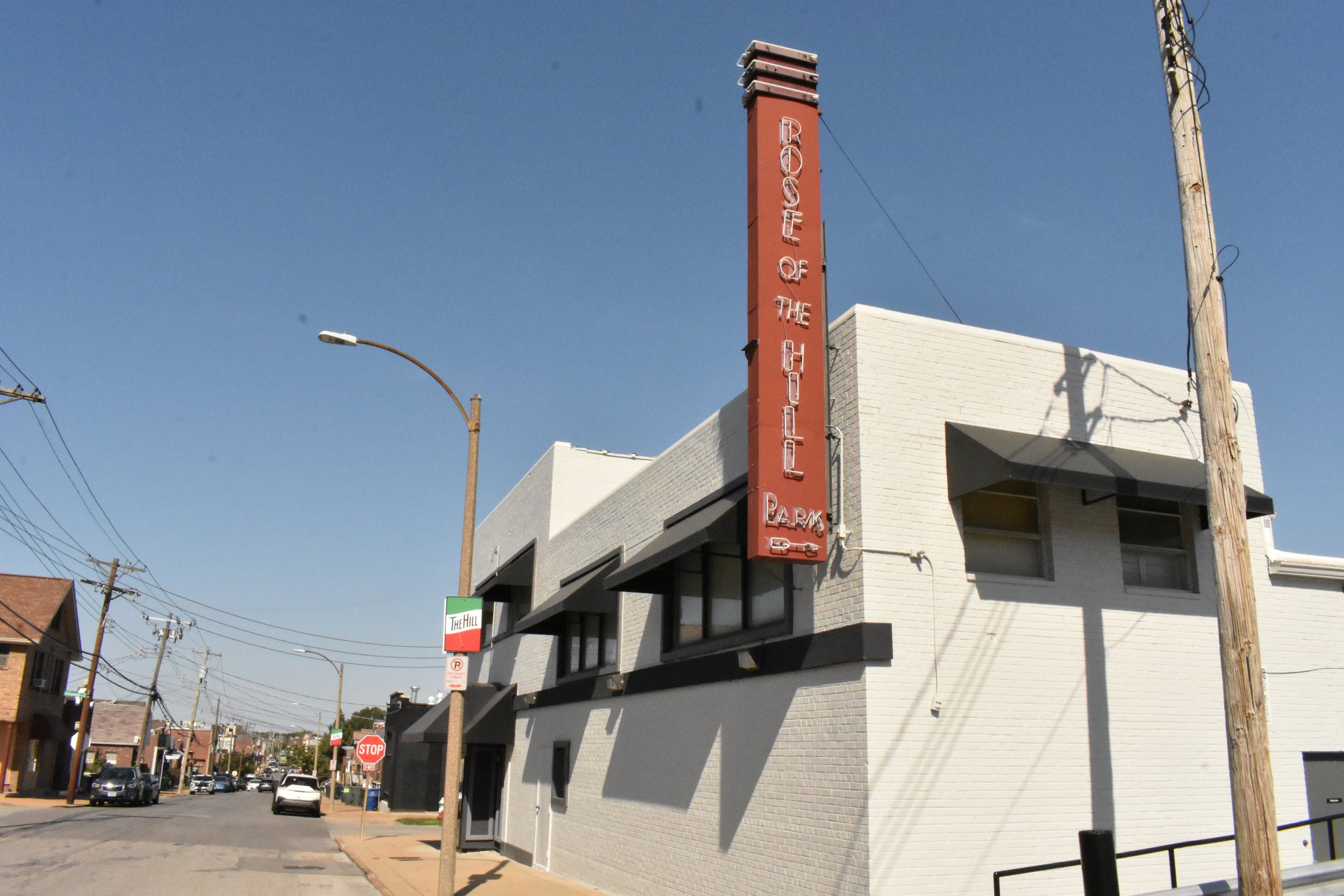

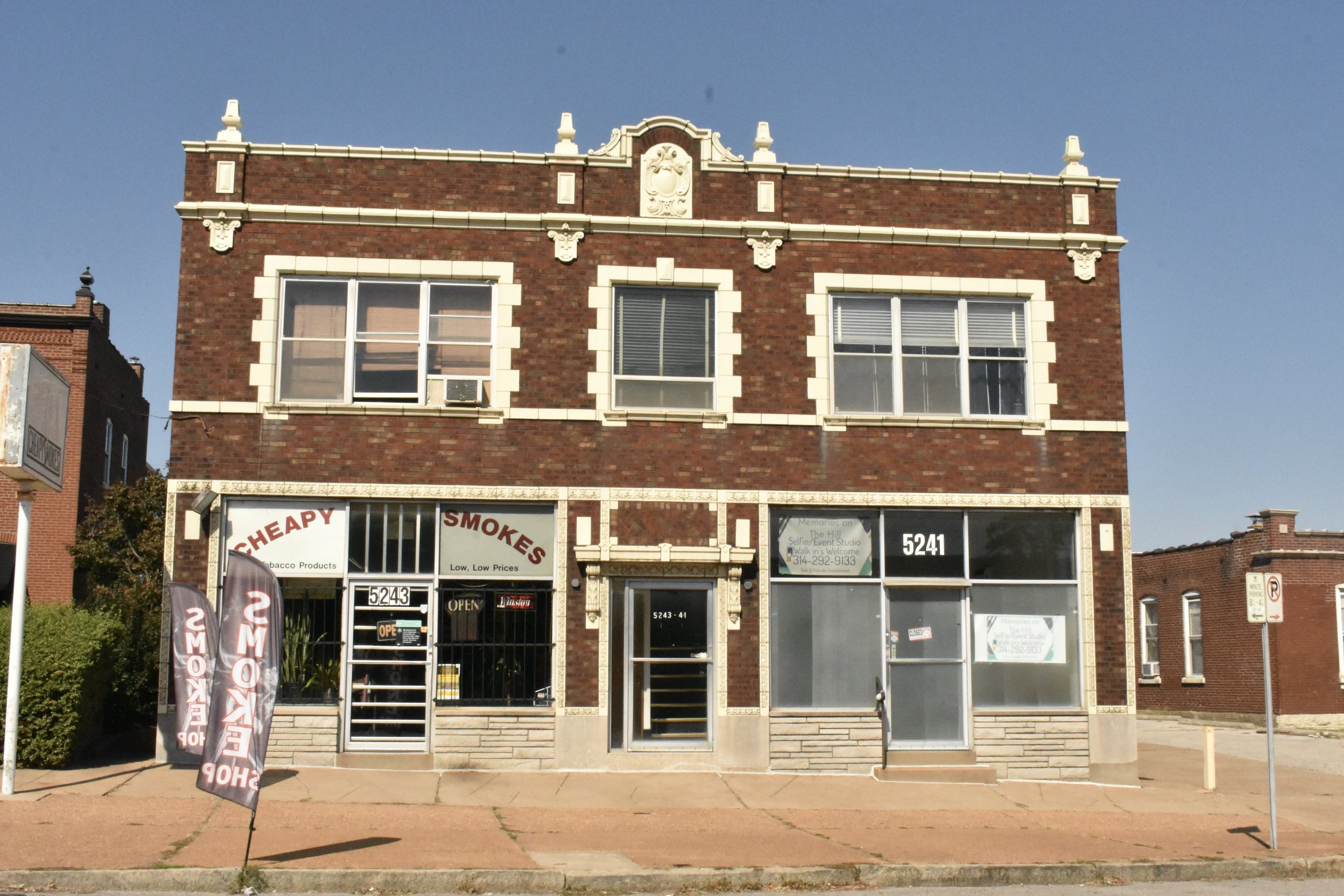
Even the self-proclaimed originator of toasted ravioli is still serving it up St. Louis-style.
But it’s not just all about food, there is a cutlery shop, music studio, chocolate factory, fantastic microbrewery, indoor soccer facility, large law firm, antique mall, rock climbing supply, public schools (Gateway and Shaw) and many light industrial & distribution/warehouse operations.
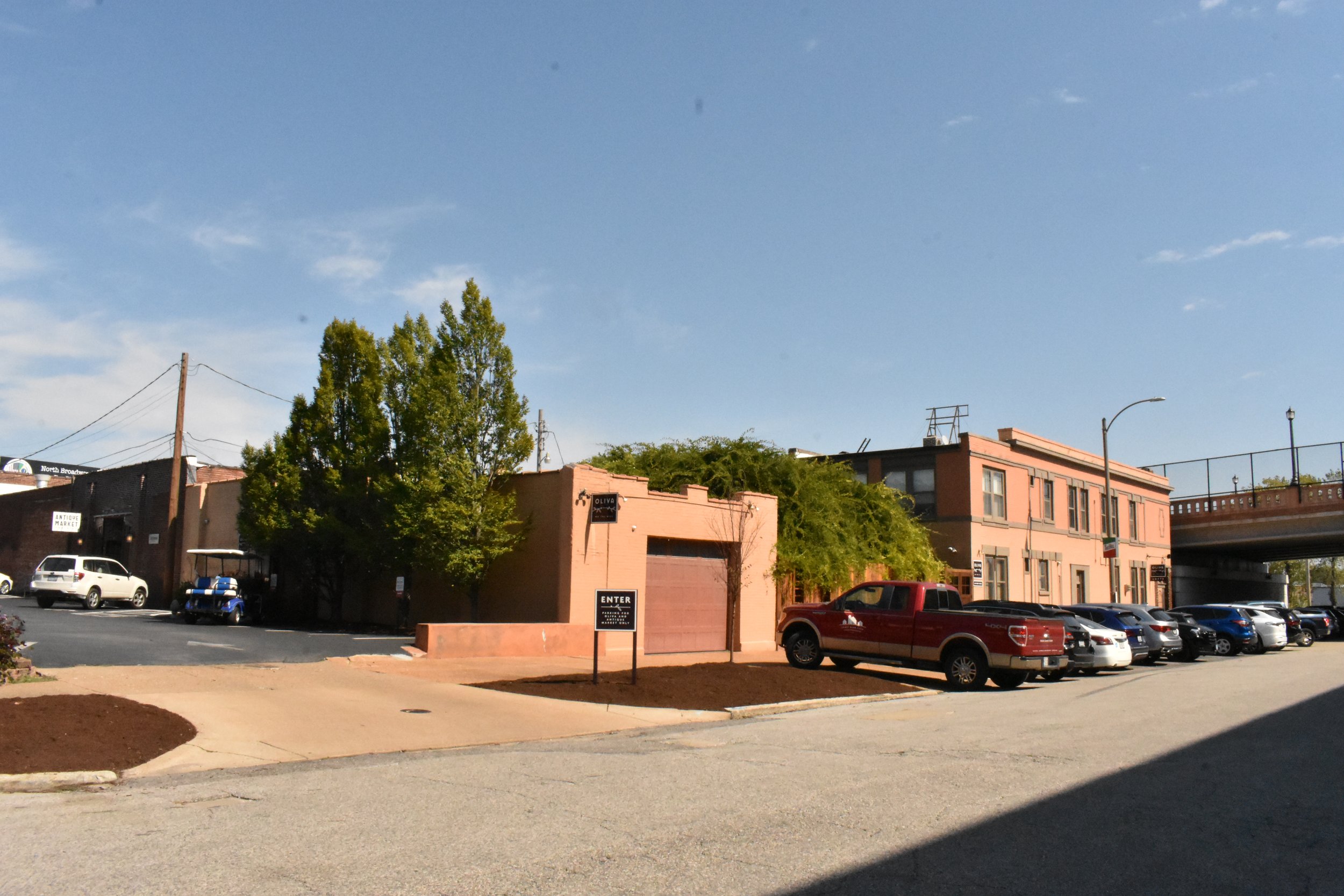
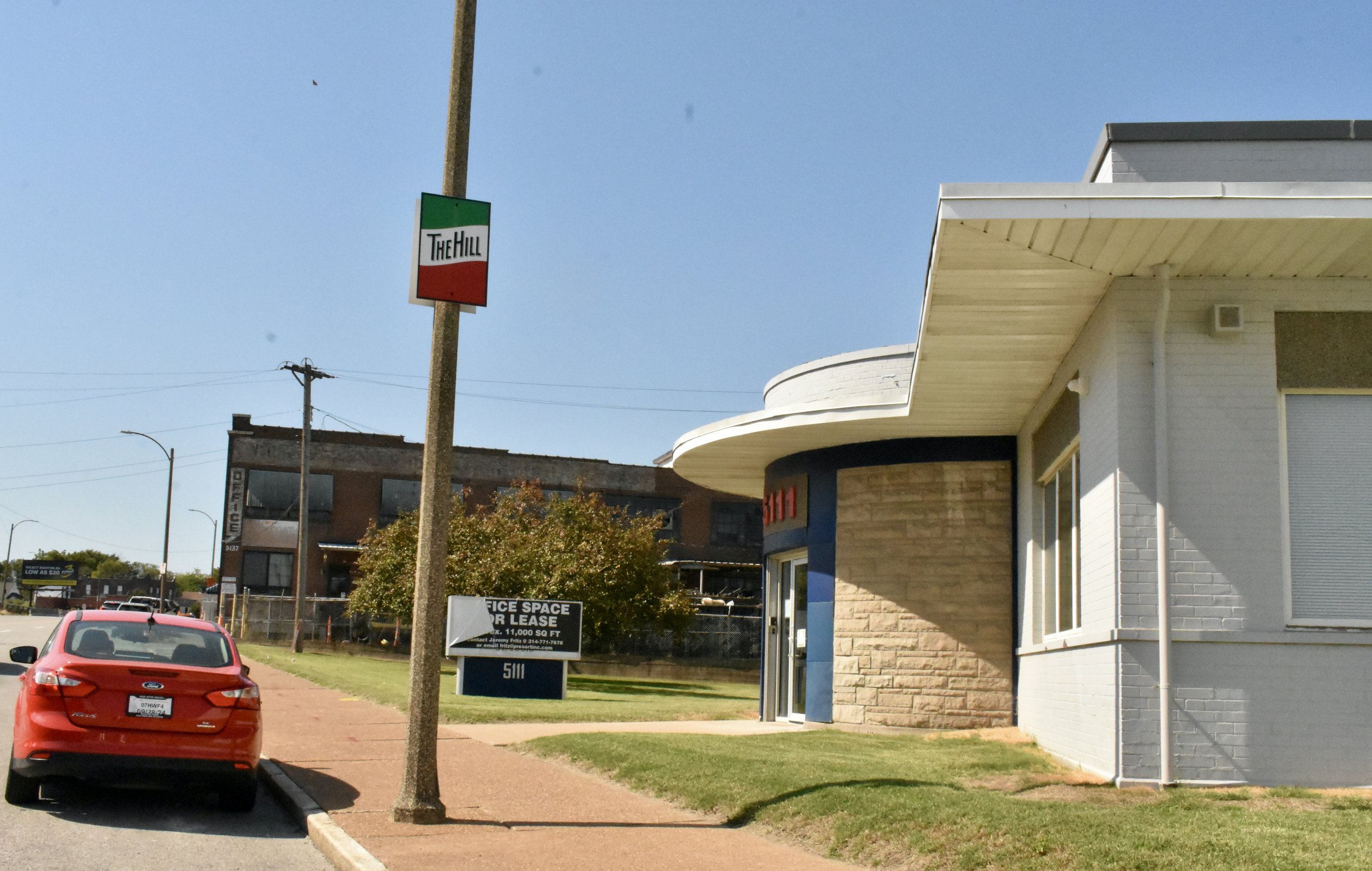
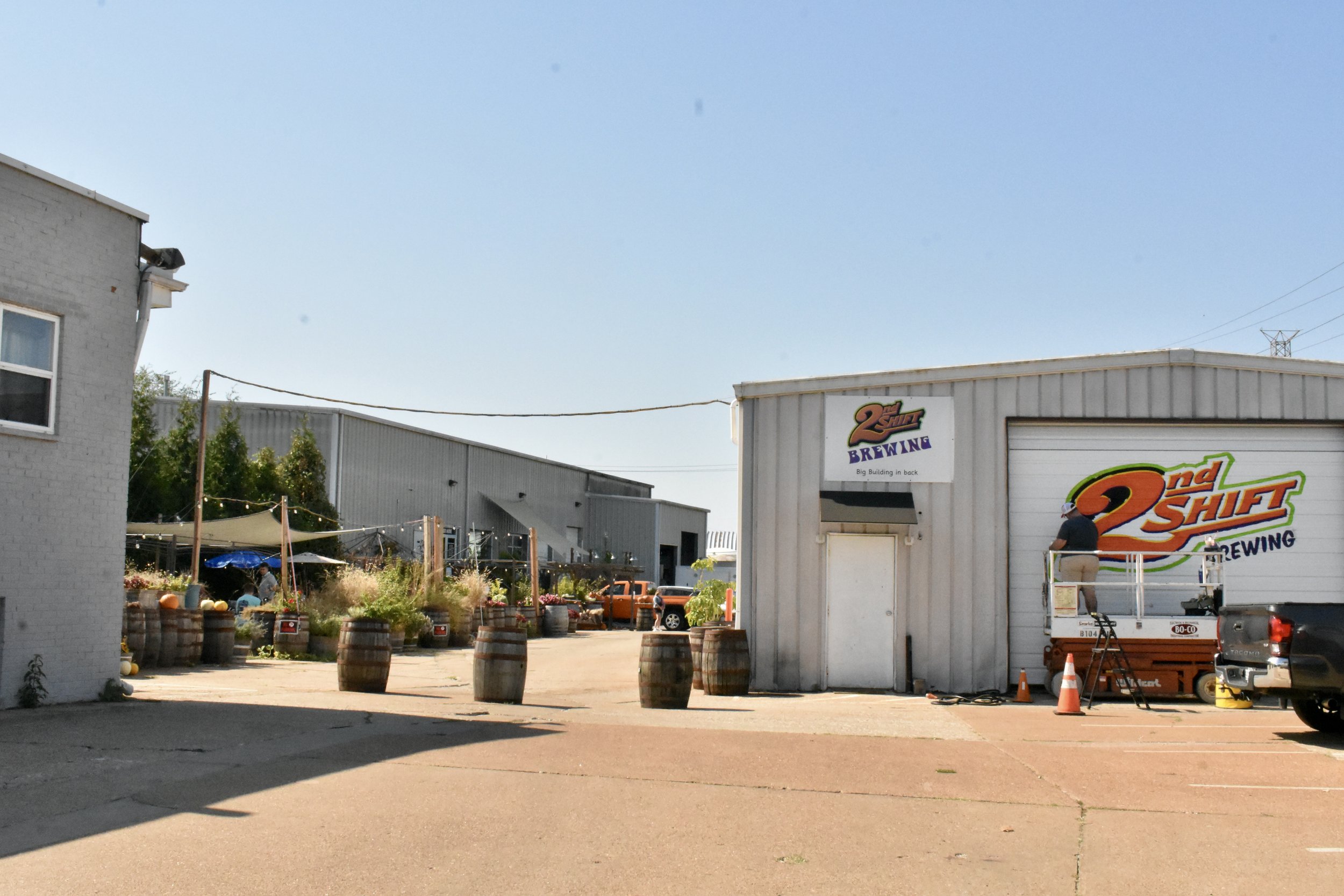
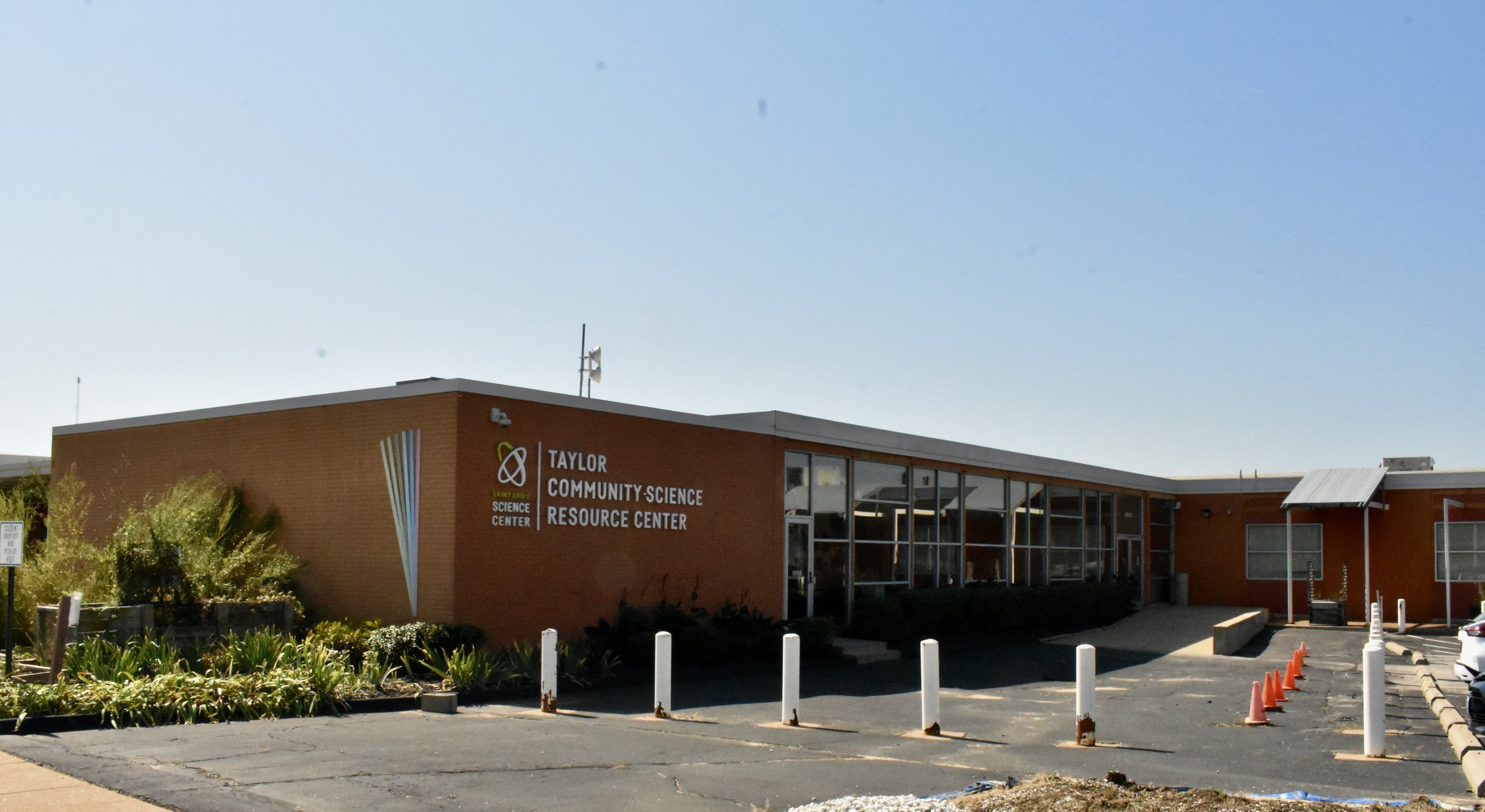
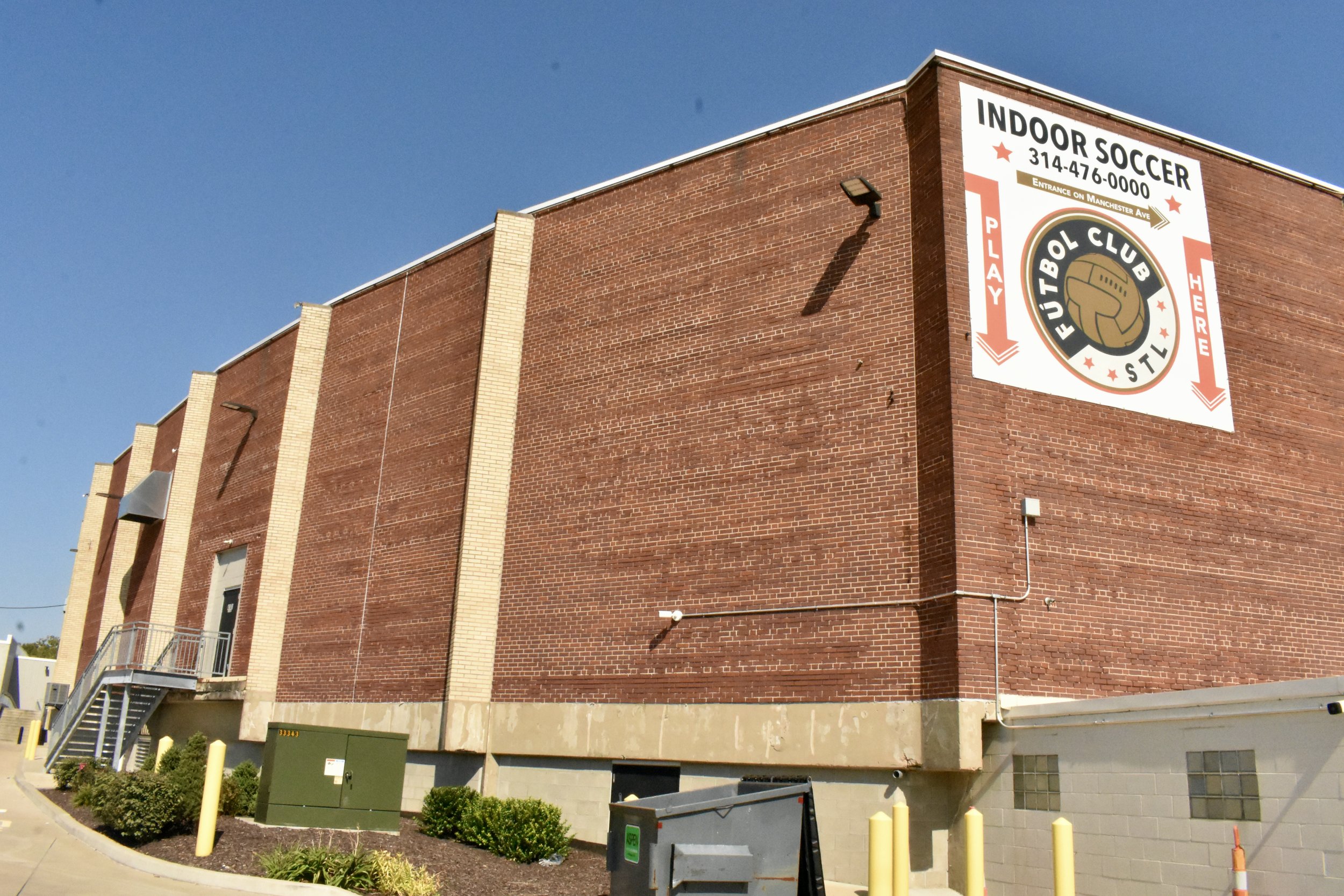
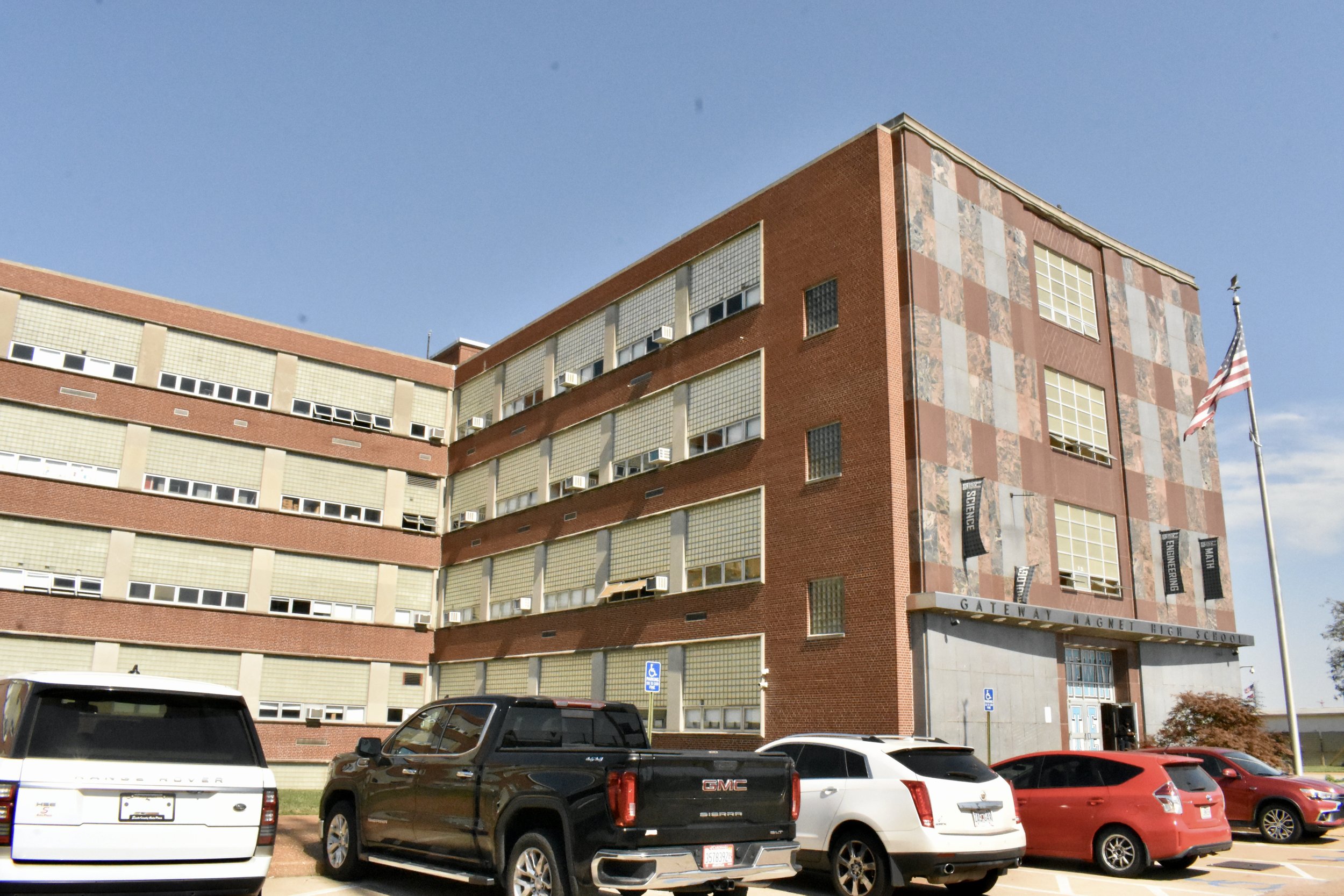
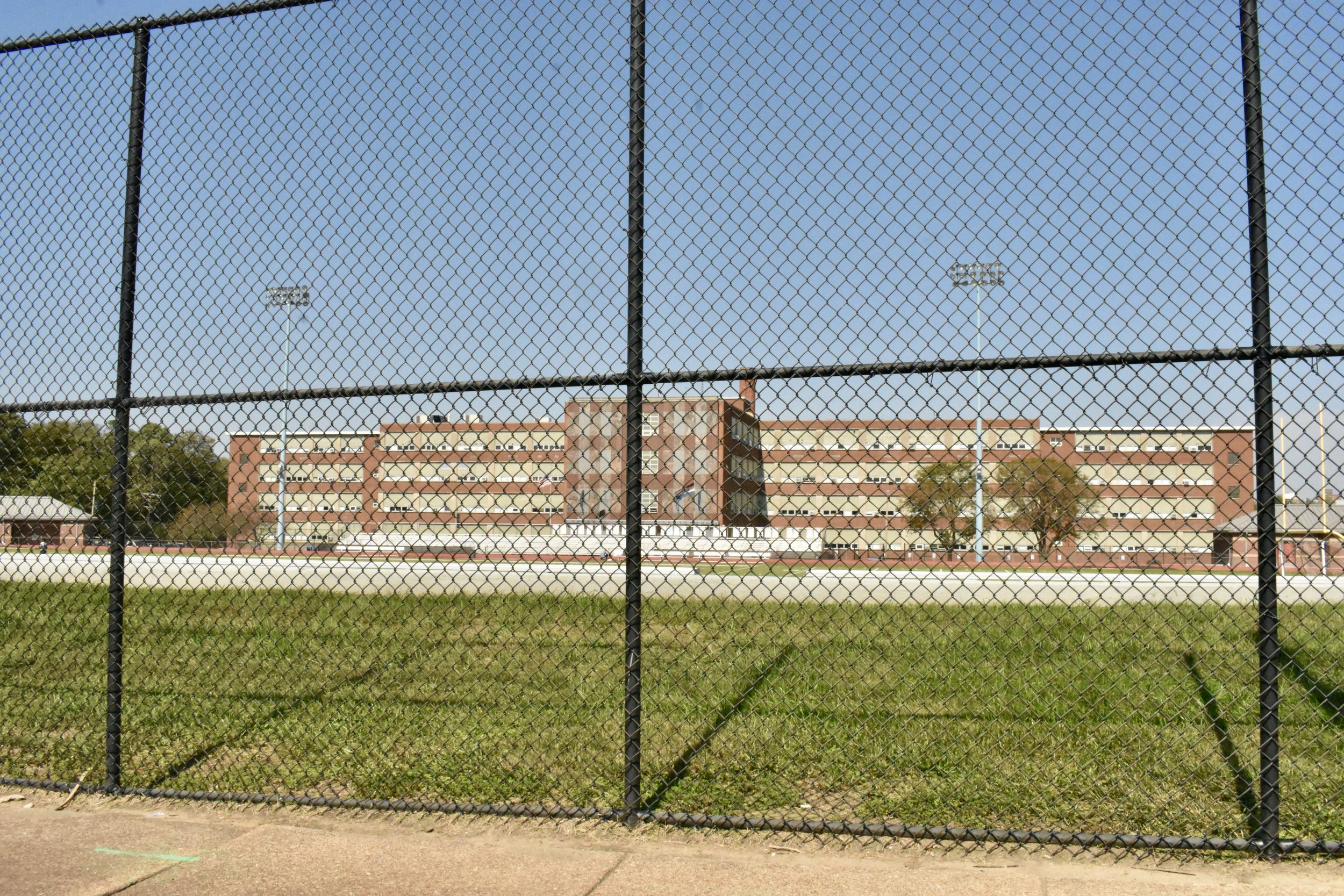
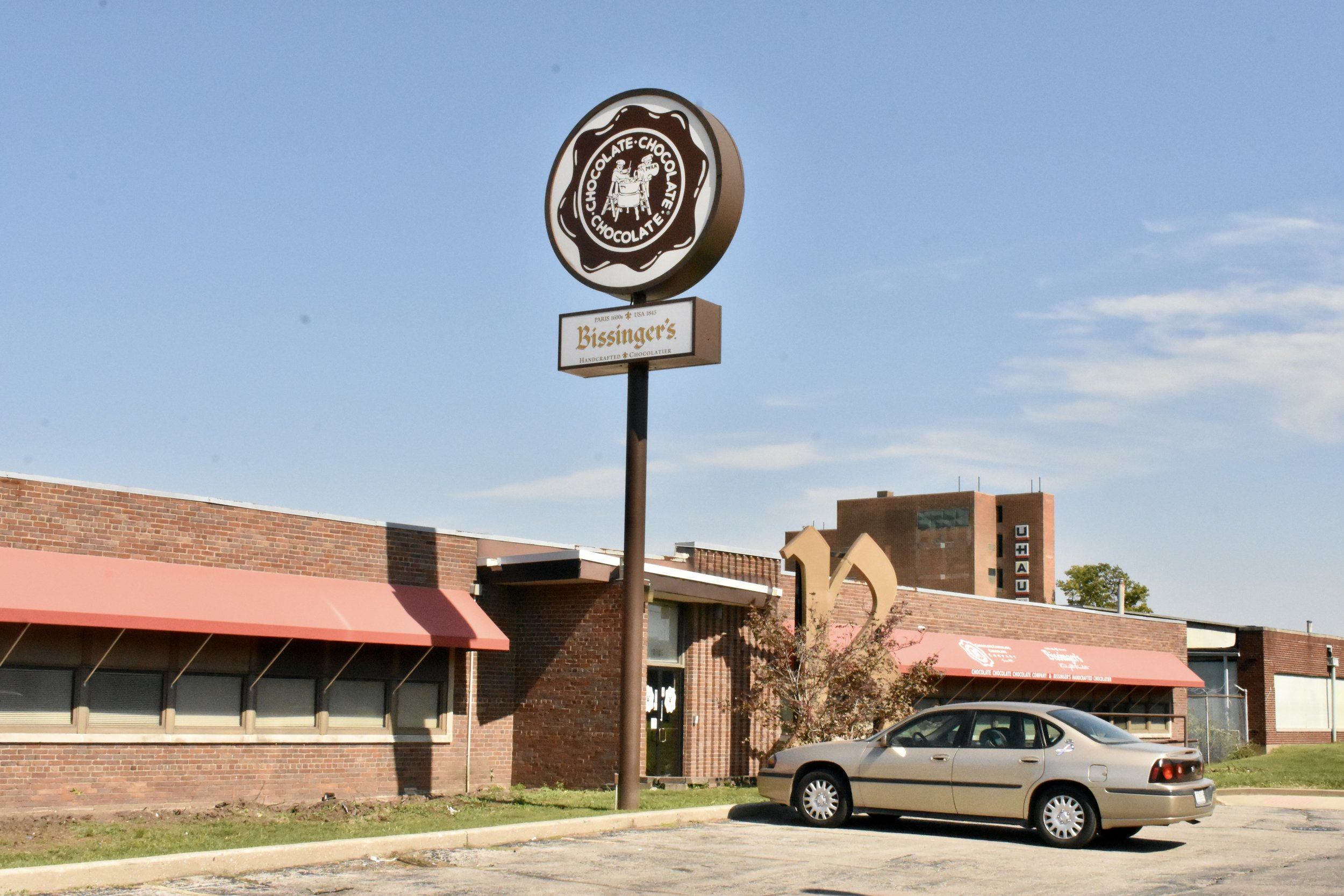
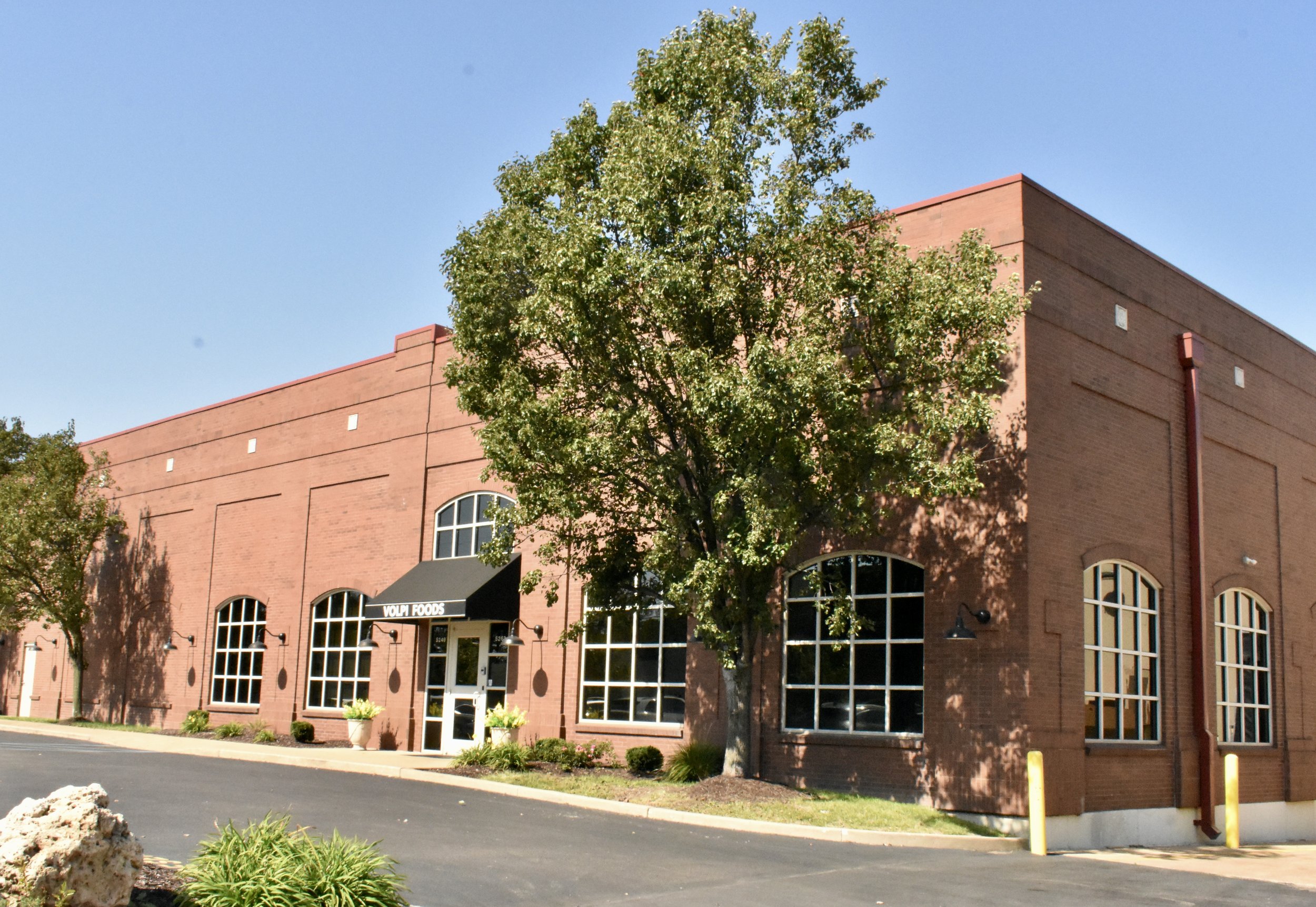

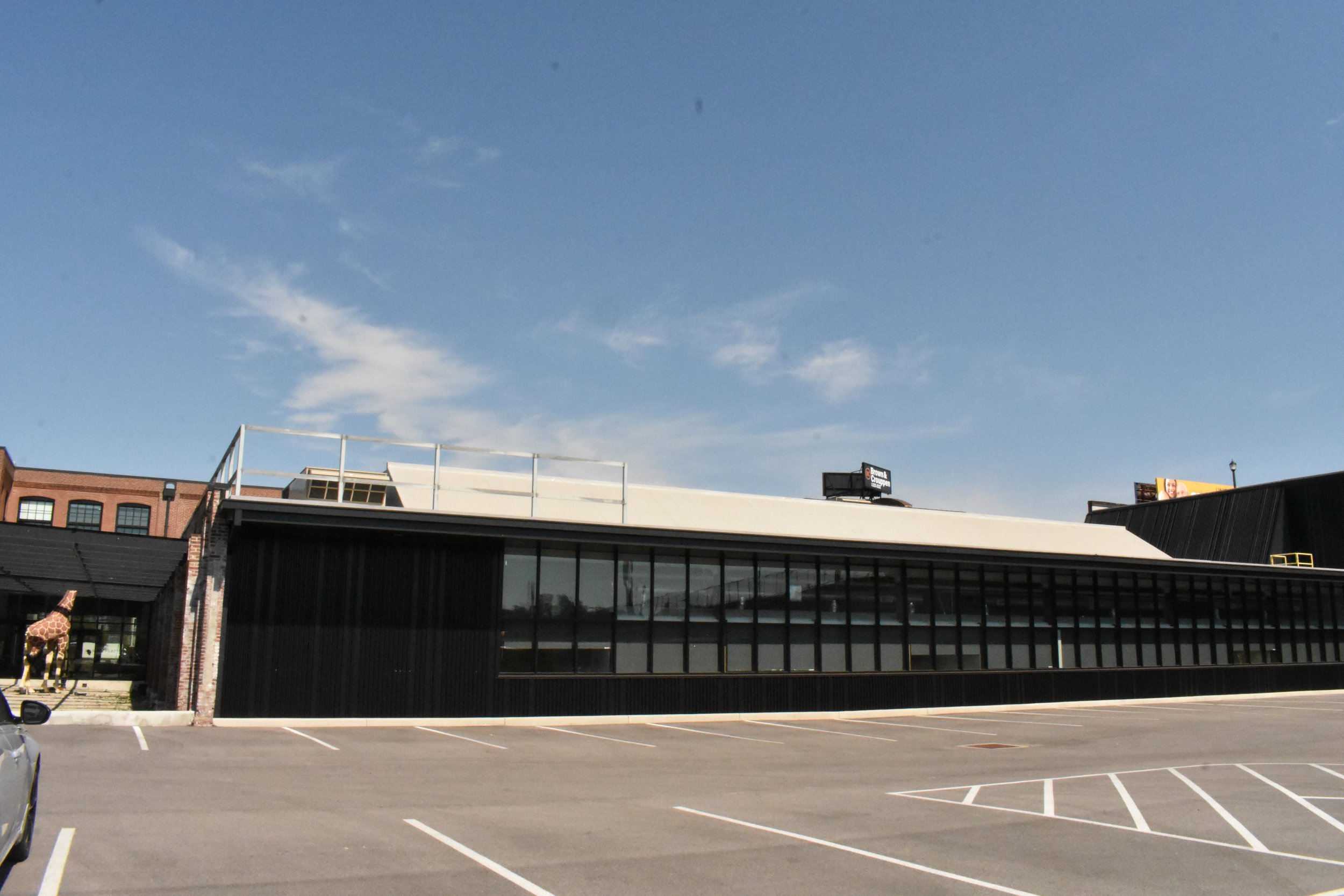
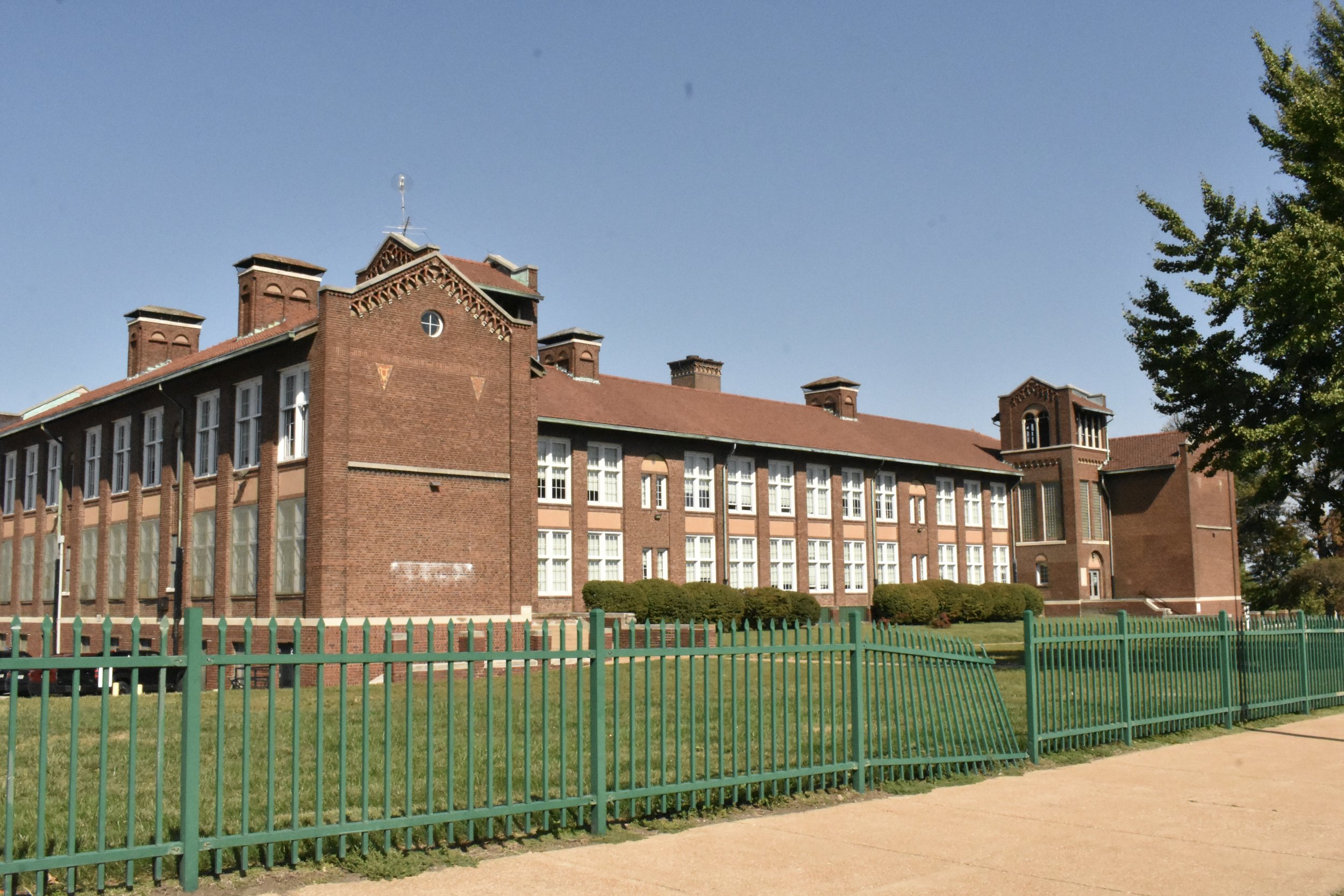
And one of the coolest American Legion halls in the entirety of our region.
While we’re on “cute”, let’s give some love to Berra Park, one of the cleanest, best maintained city parks. Think the Parks Department plants flowers and edges and keeps it clean? Nope, on my visit, there was a retired resident weed wacking the park. The flowers are from volunteers. Our city parks are a reflection of the neighborhood and people who live there. The Hill is strong and proud and aren’t gonna wait for the city to keep it up, they’ll step up and do it themselves. Cheers to that.
Again, the Hill has seen an amazing decade of change. Oof, where to start? I suppose I’ll address the fact that the Hill is really a tale of two neighborhoods: that north of I-44 and that to the south. The Interstates butchered many St. Louis neighborhoods with brutal force. The Hill fought it hard back in the day, but they lost the fight. The pittance from the government was to install a pedestrian bridge over the Interstate. Oh well. When most people think of the Hill, they are thinking of the part south of I-44.
But, I wanted to do a better job of representing the residential area north of I-44 than I did in my original profile. The folks I talked to said they definitely identify as Hill residents.
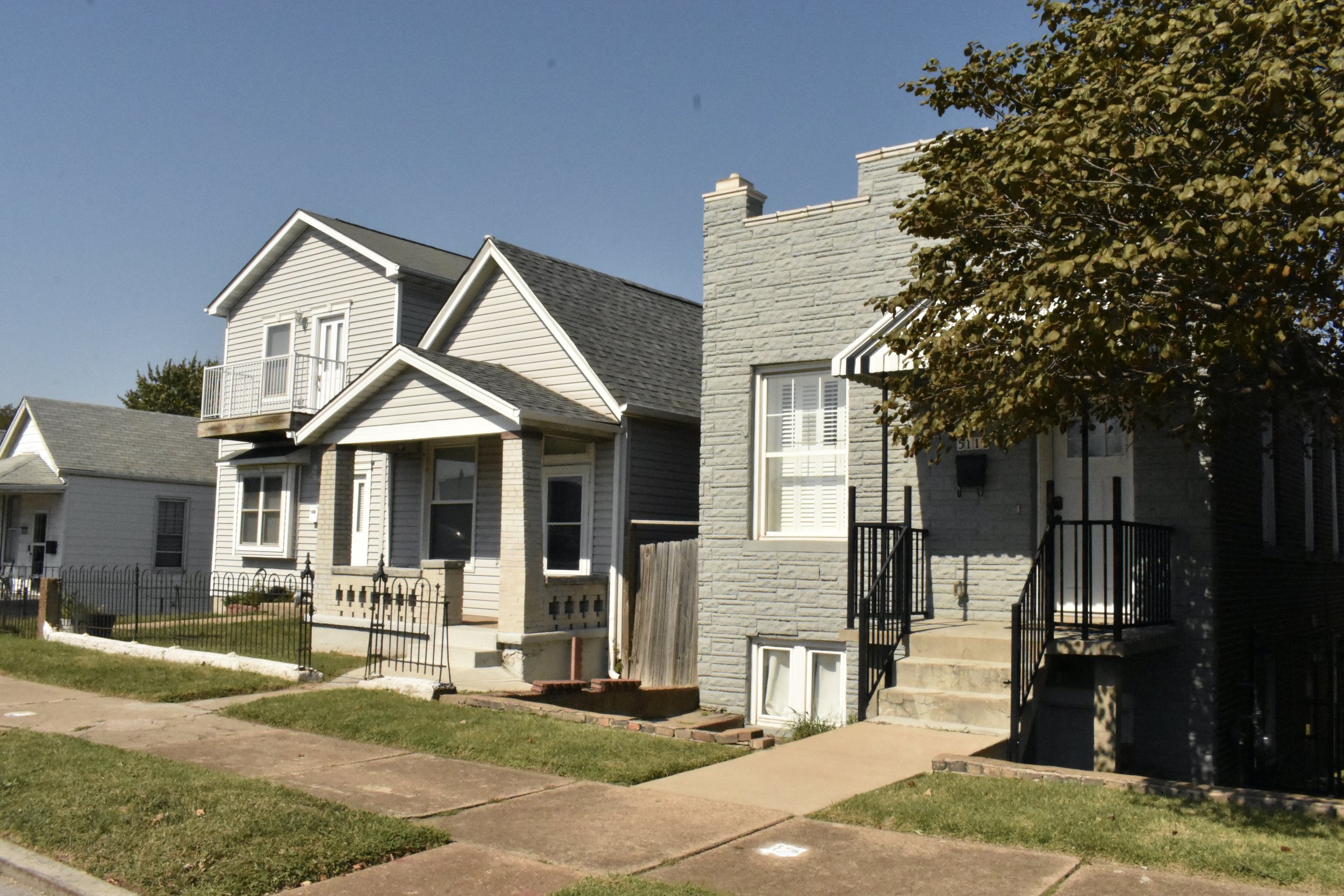
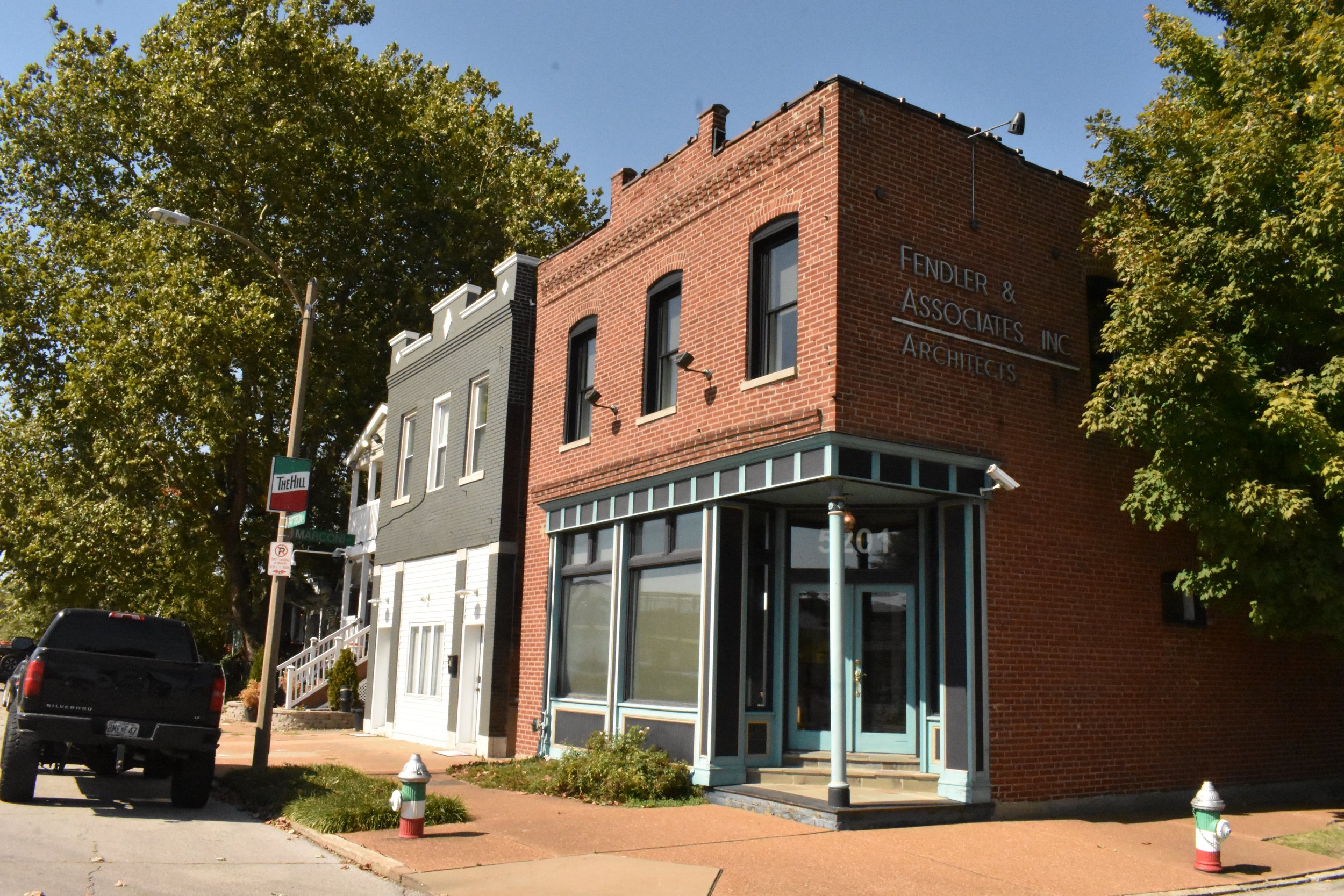
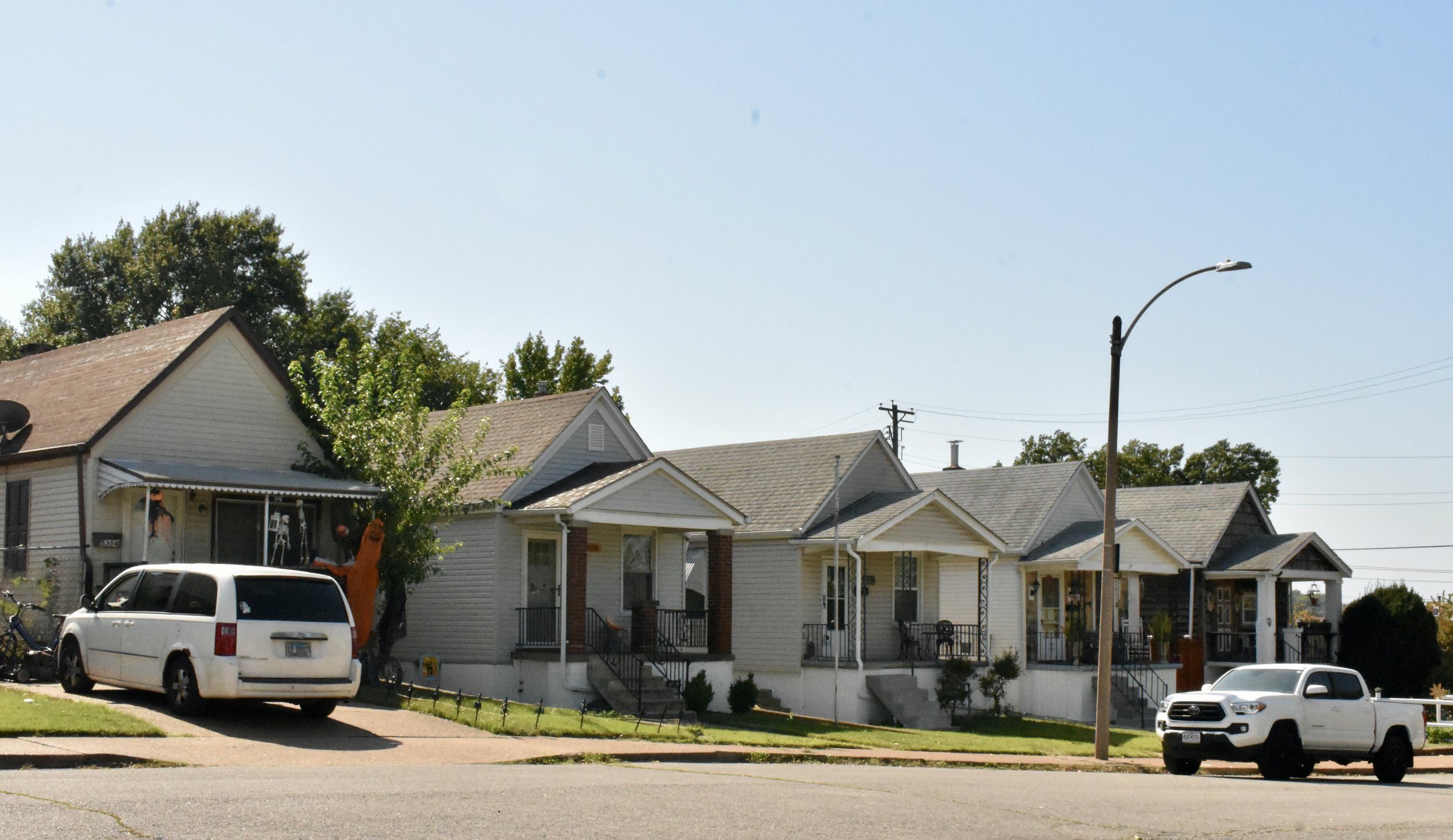
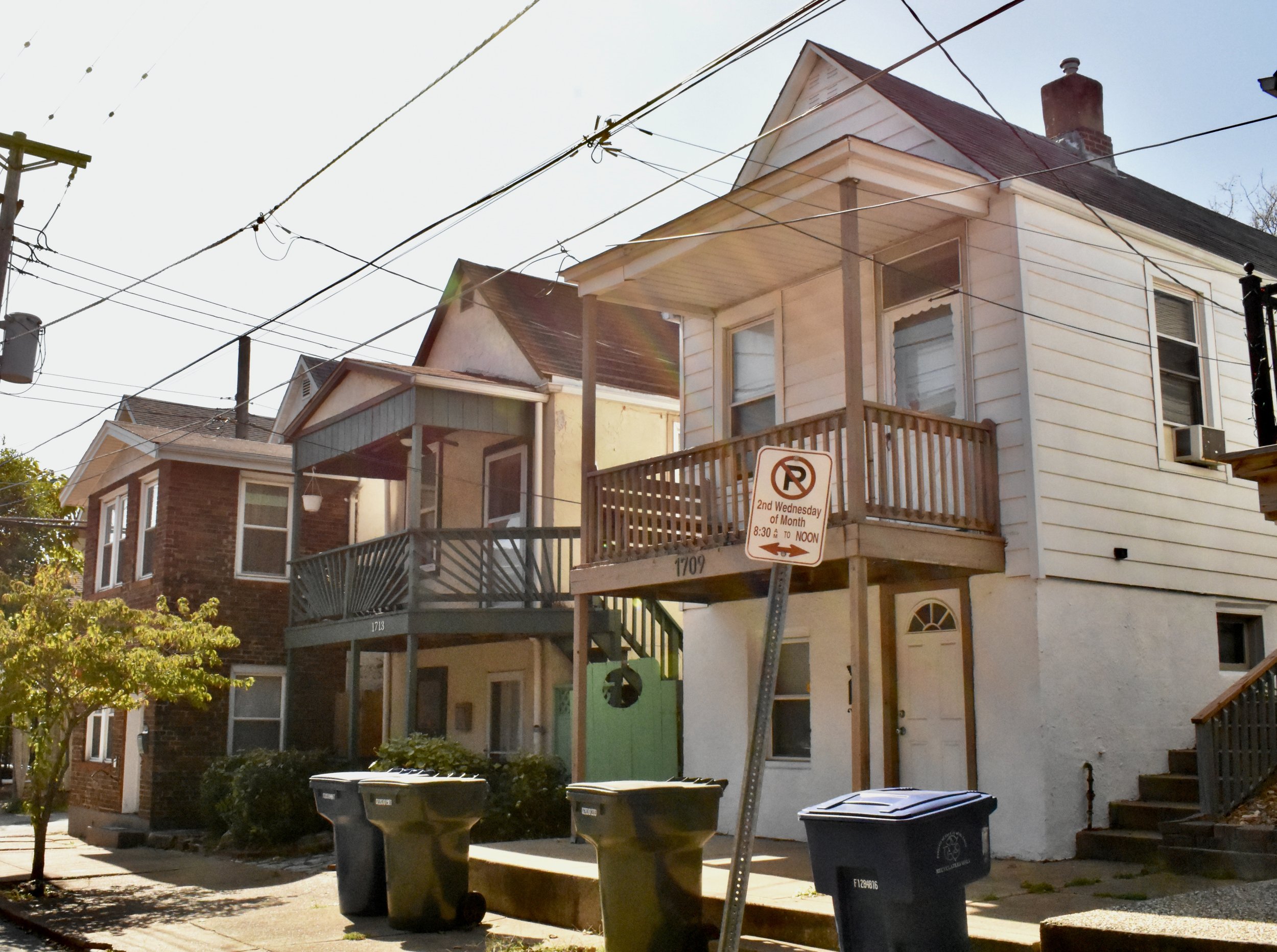
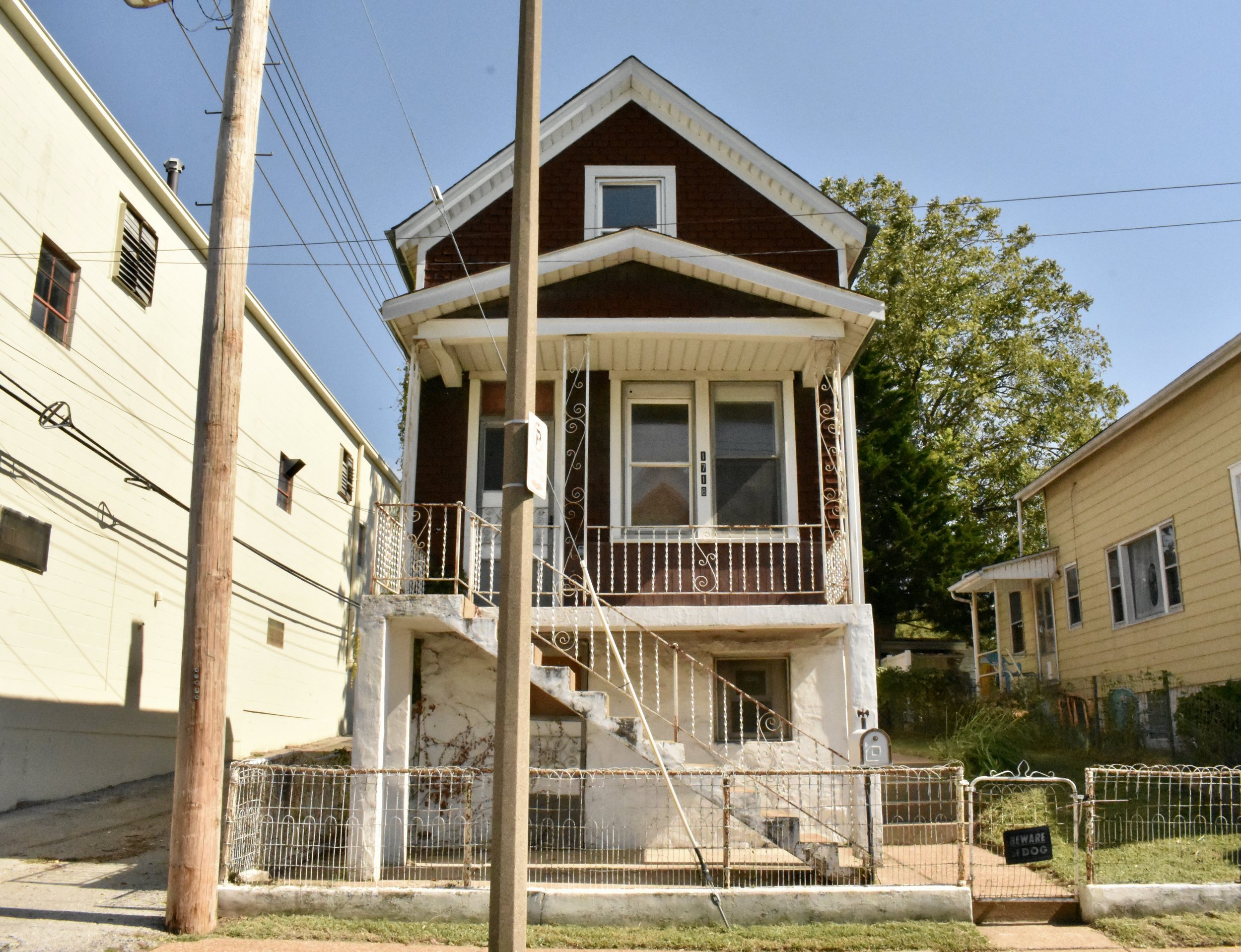
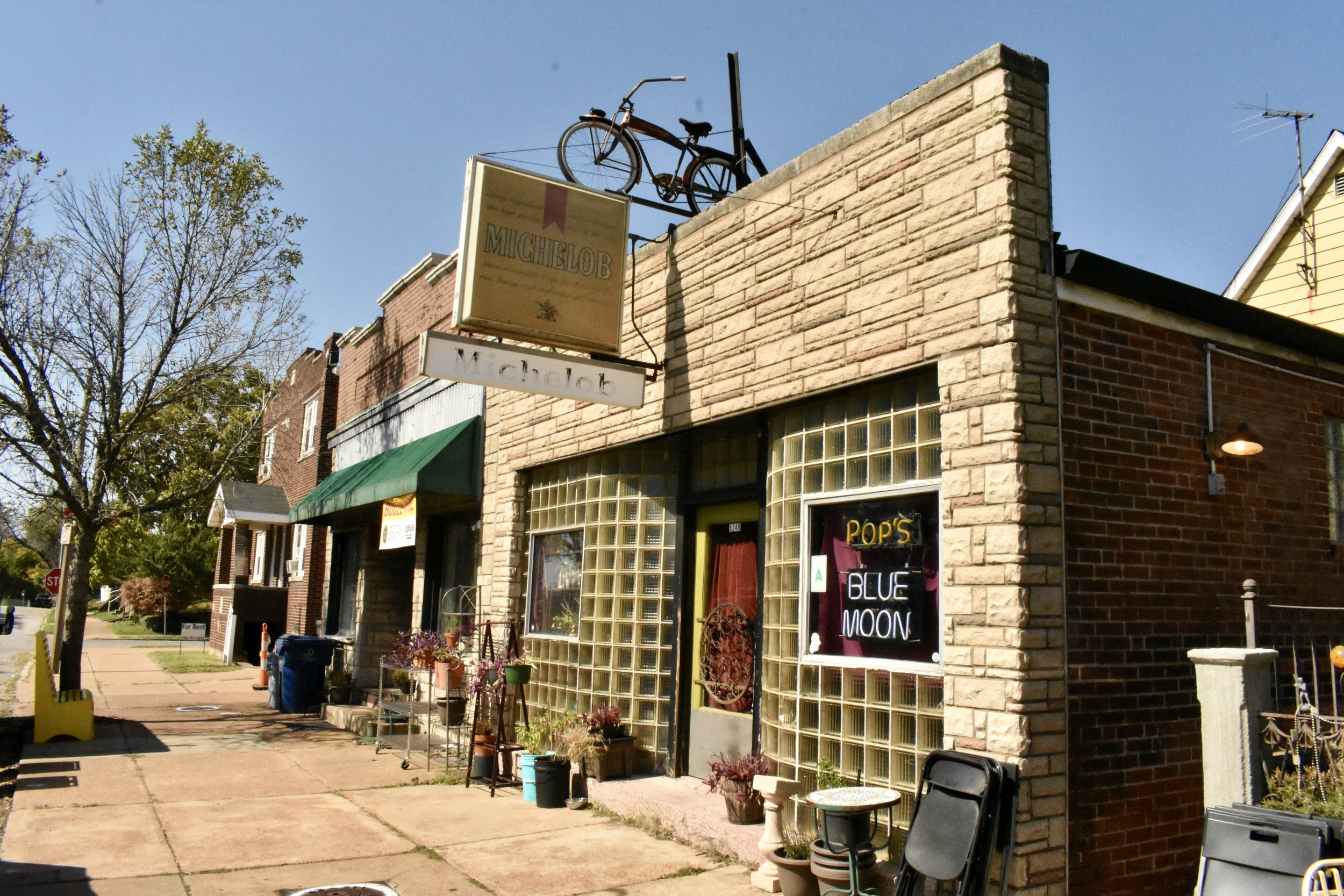
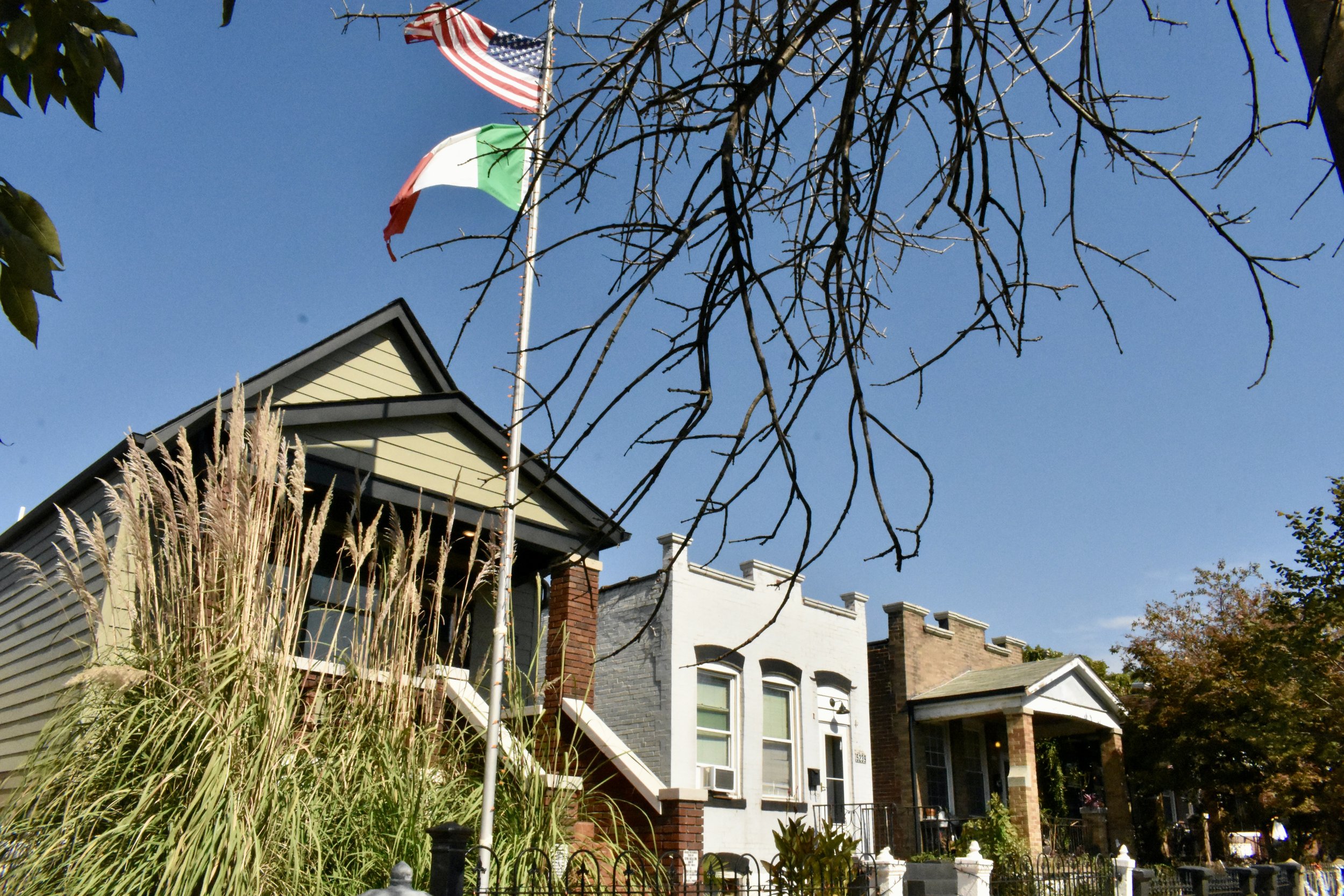
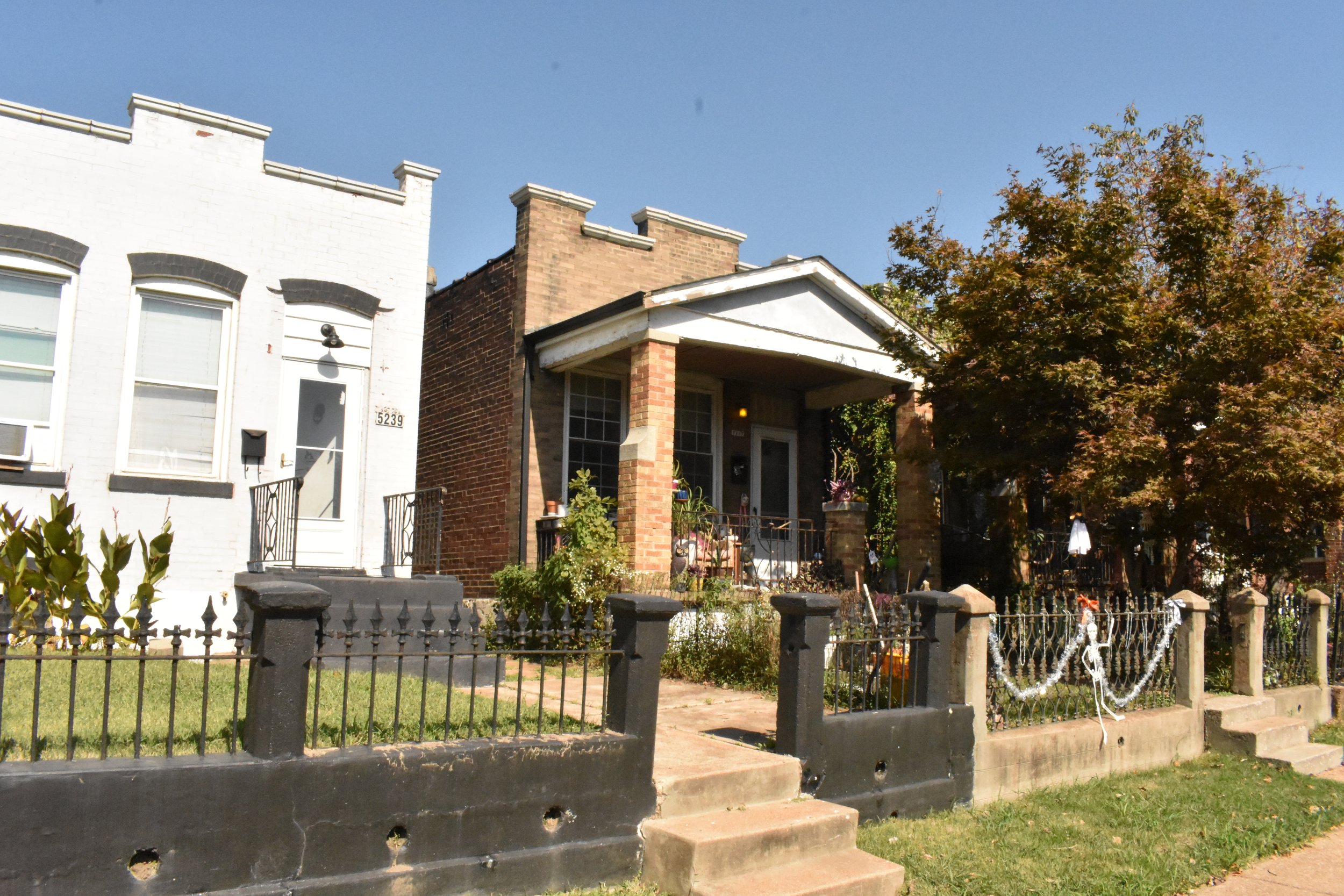

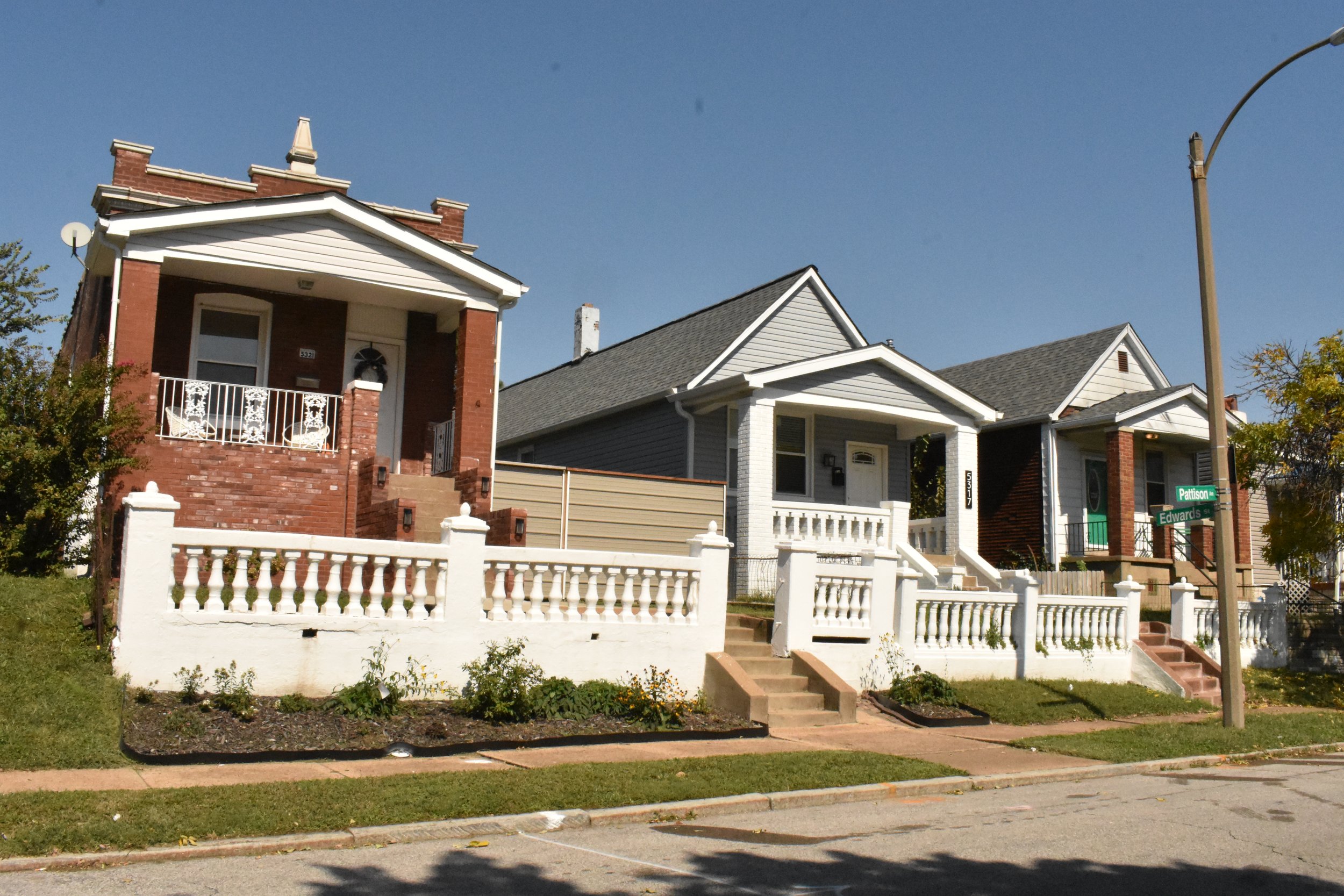
North of I-44 is the railroads and industrial stuff and then near Hampton on the northwest side is St. Louis’ Union Row with a lot of union labor training facilities, offices along with non-profits and a smattering of small businesses.
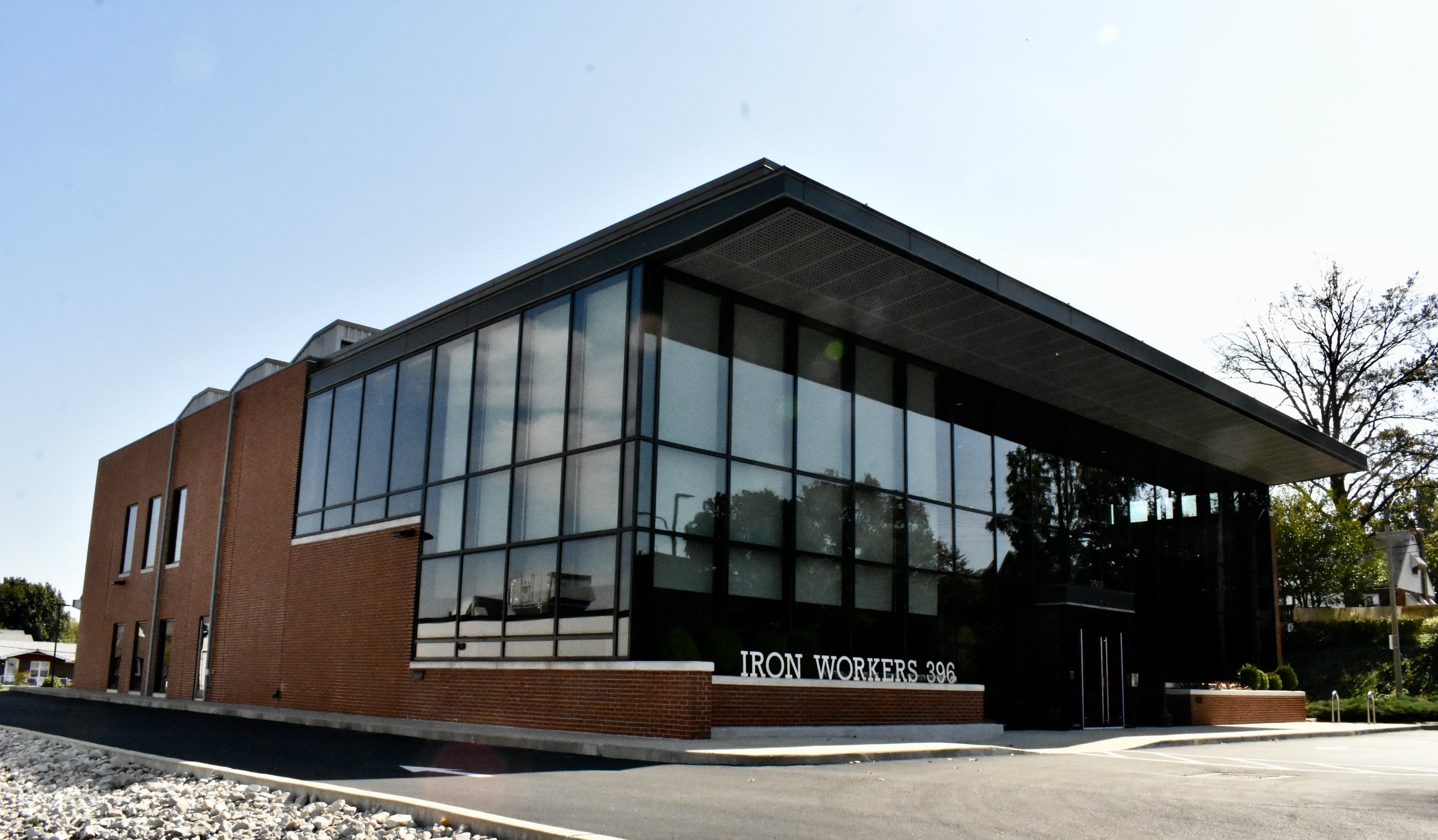
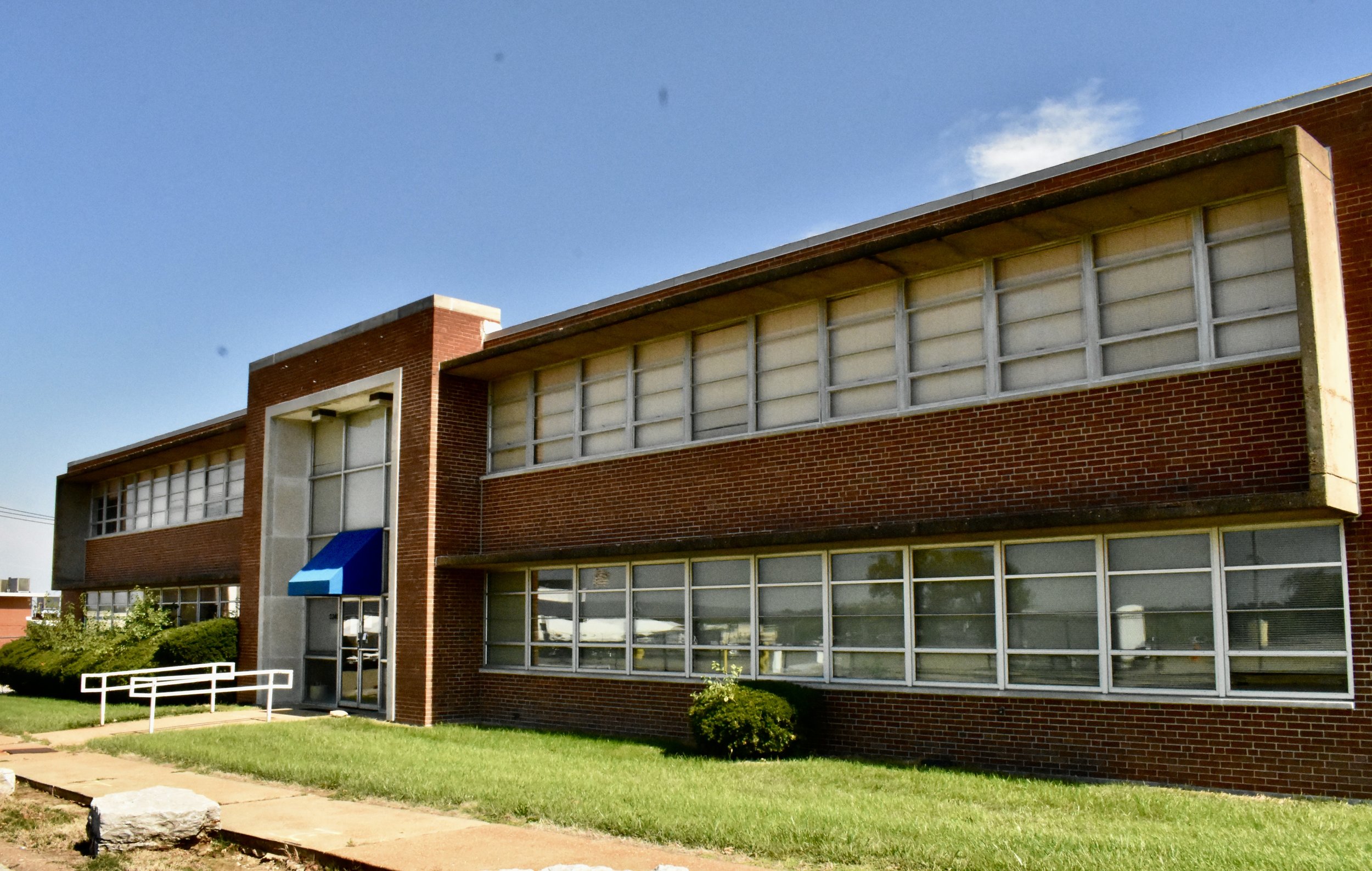
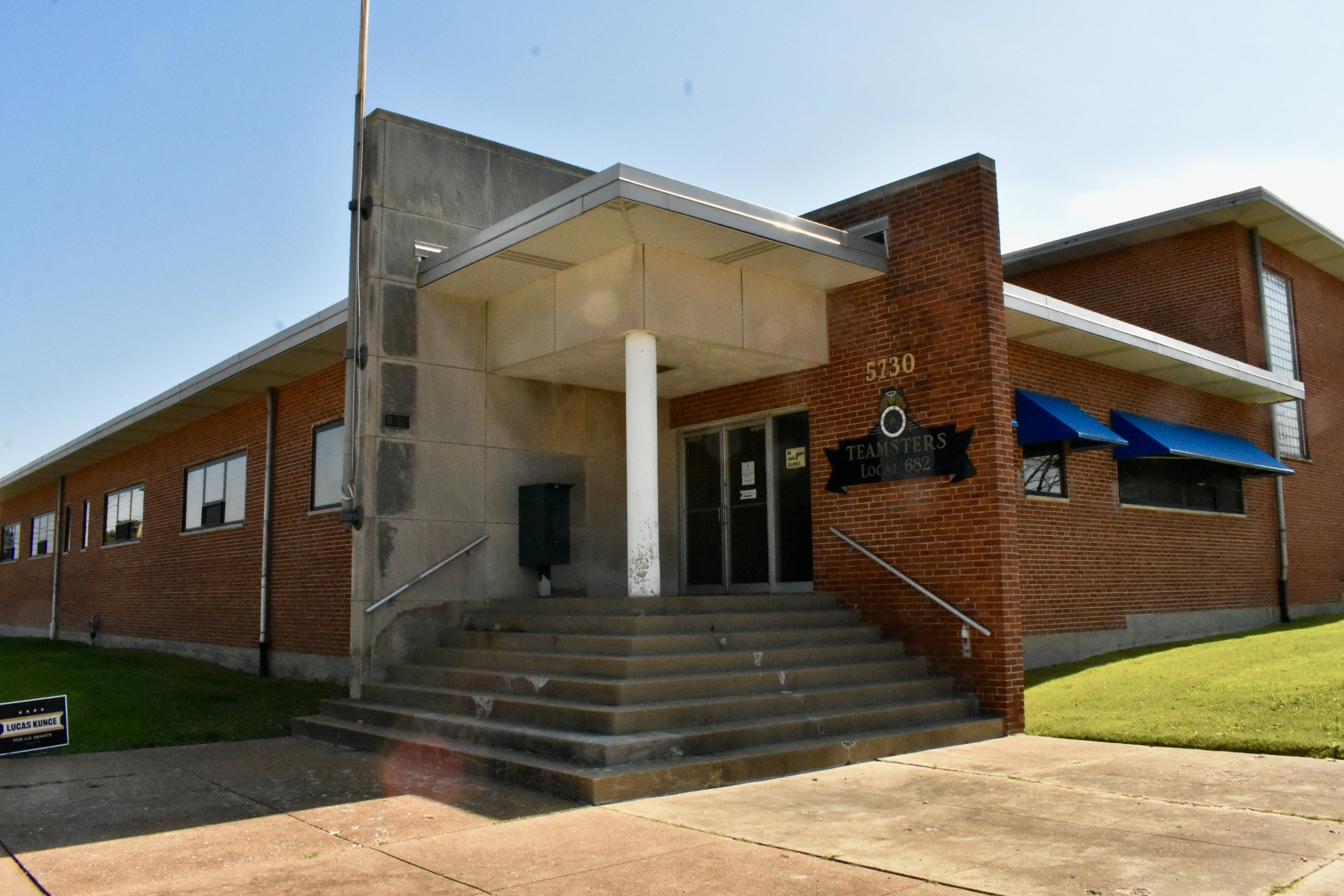

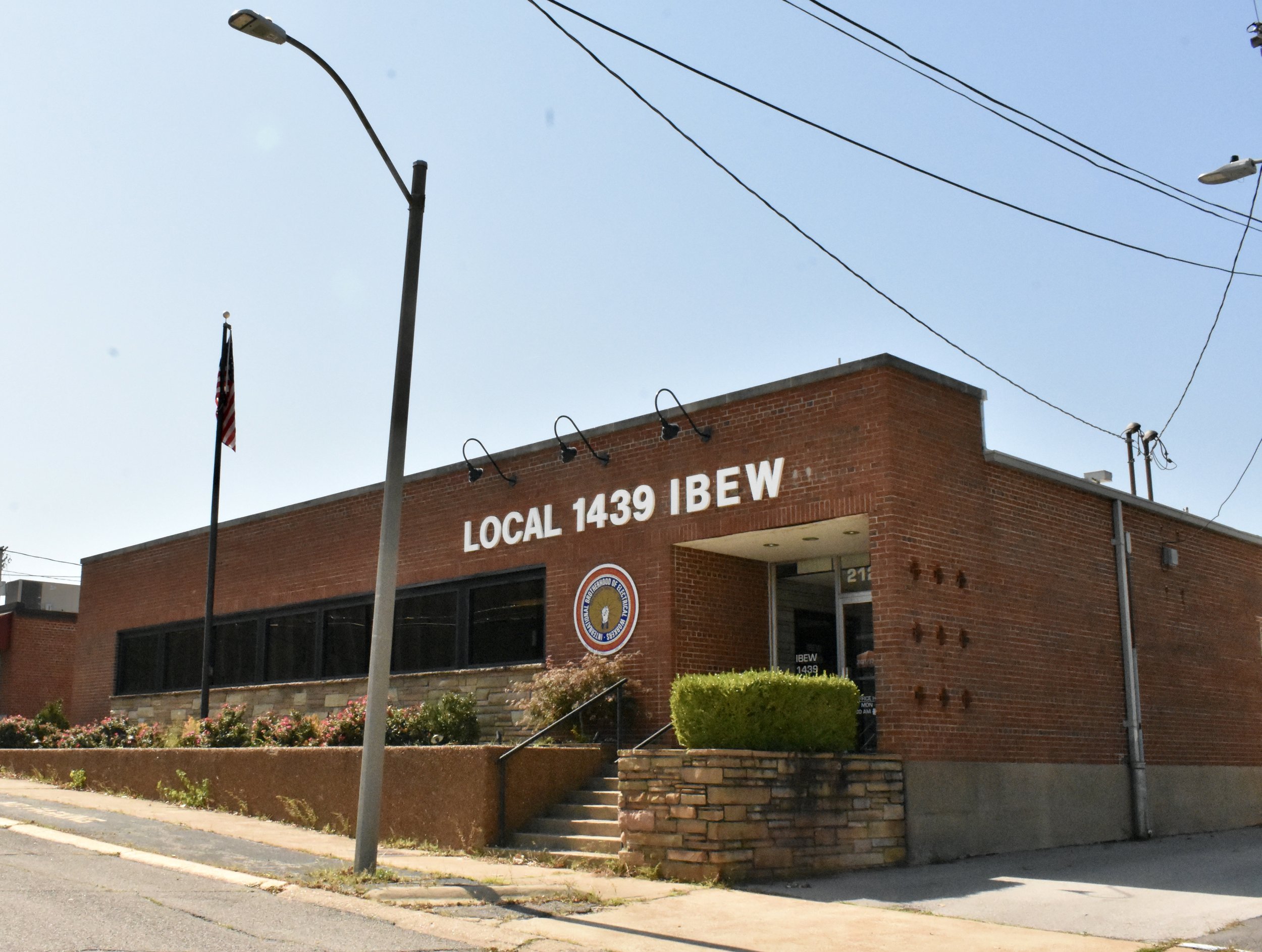
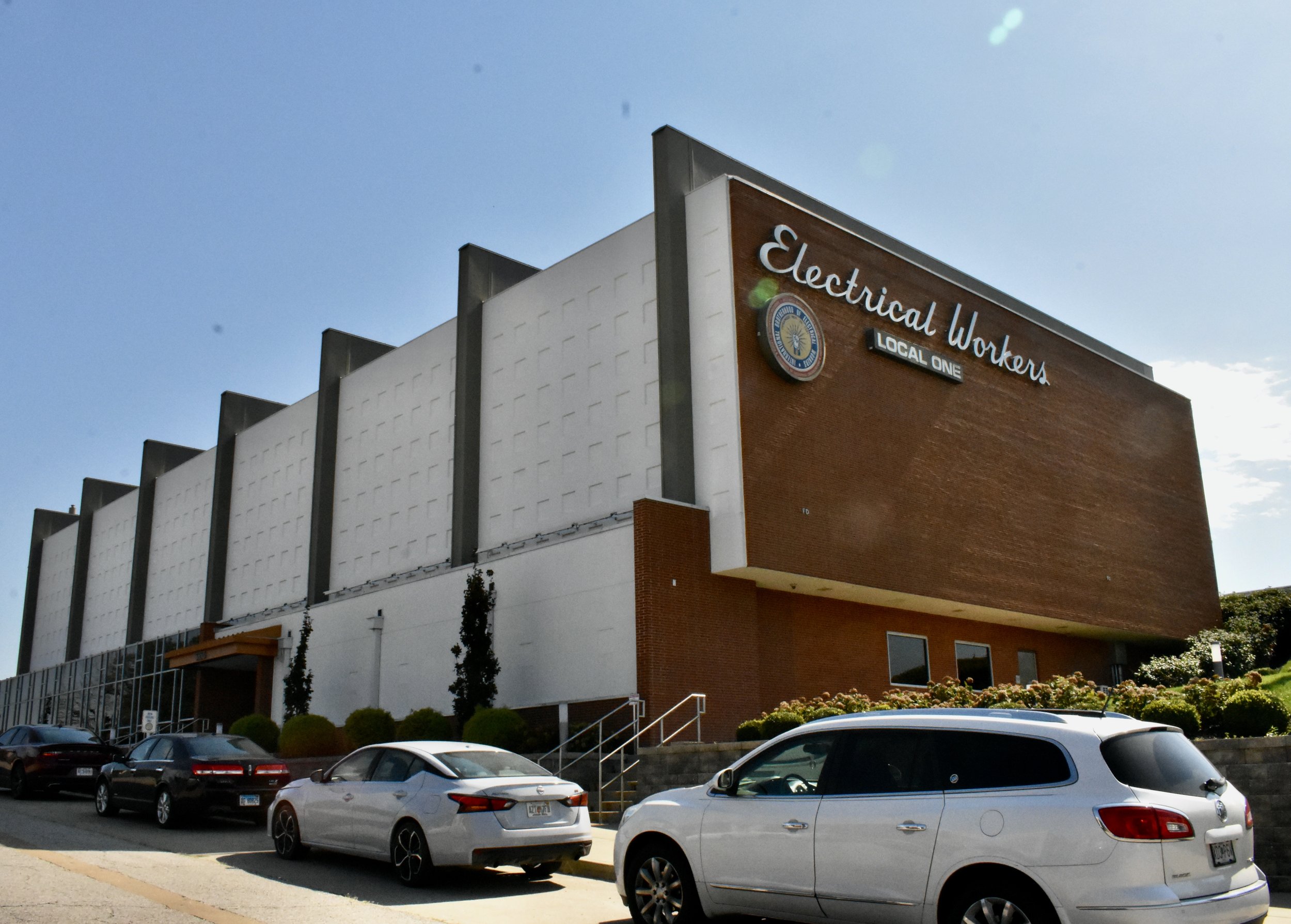
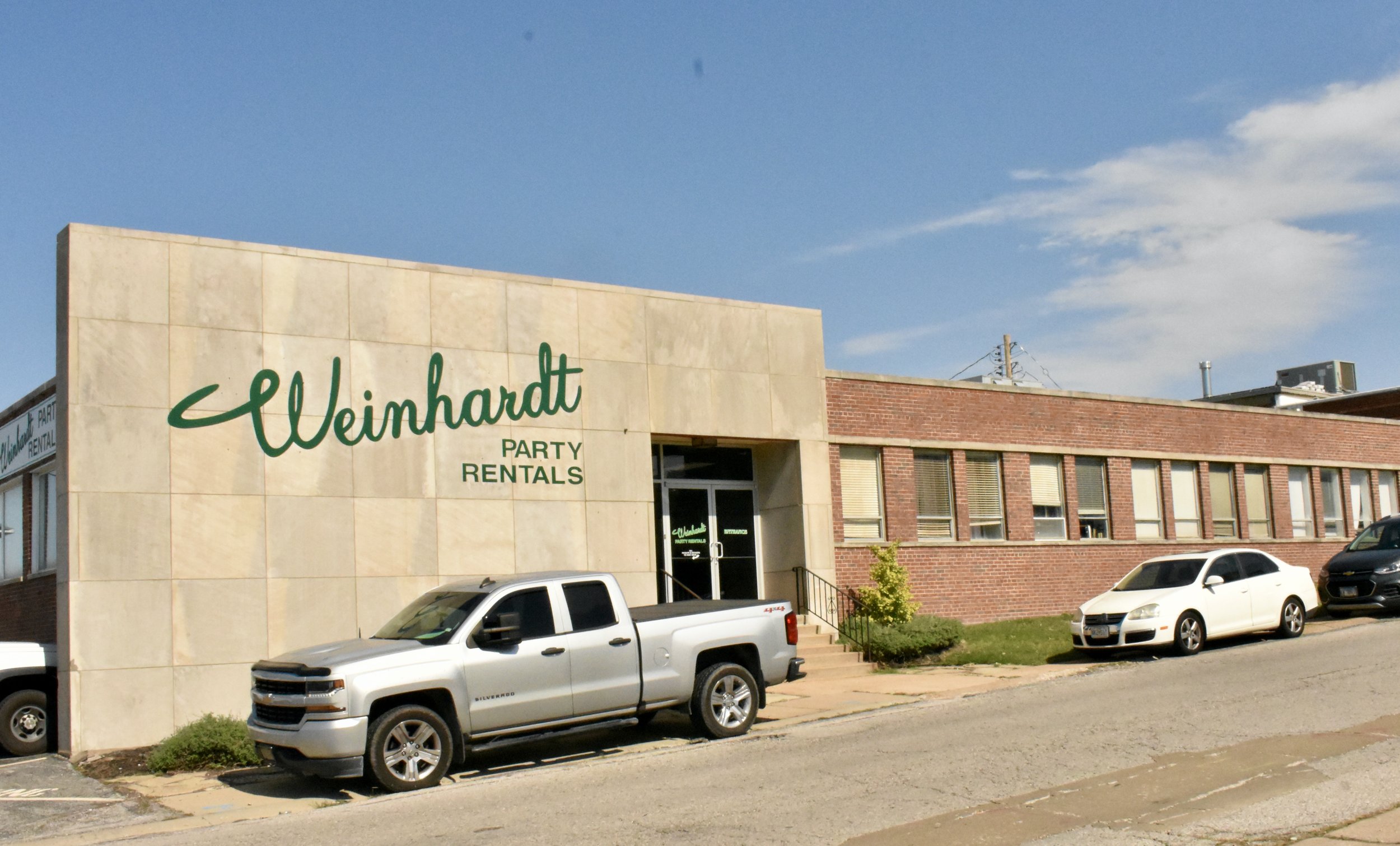
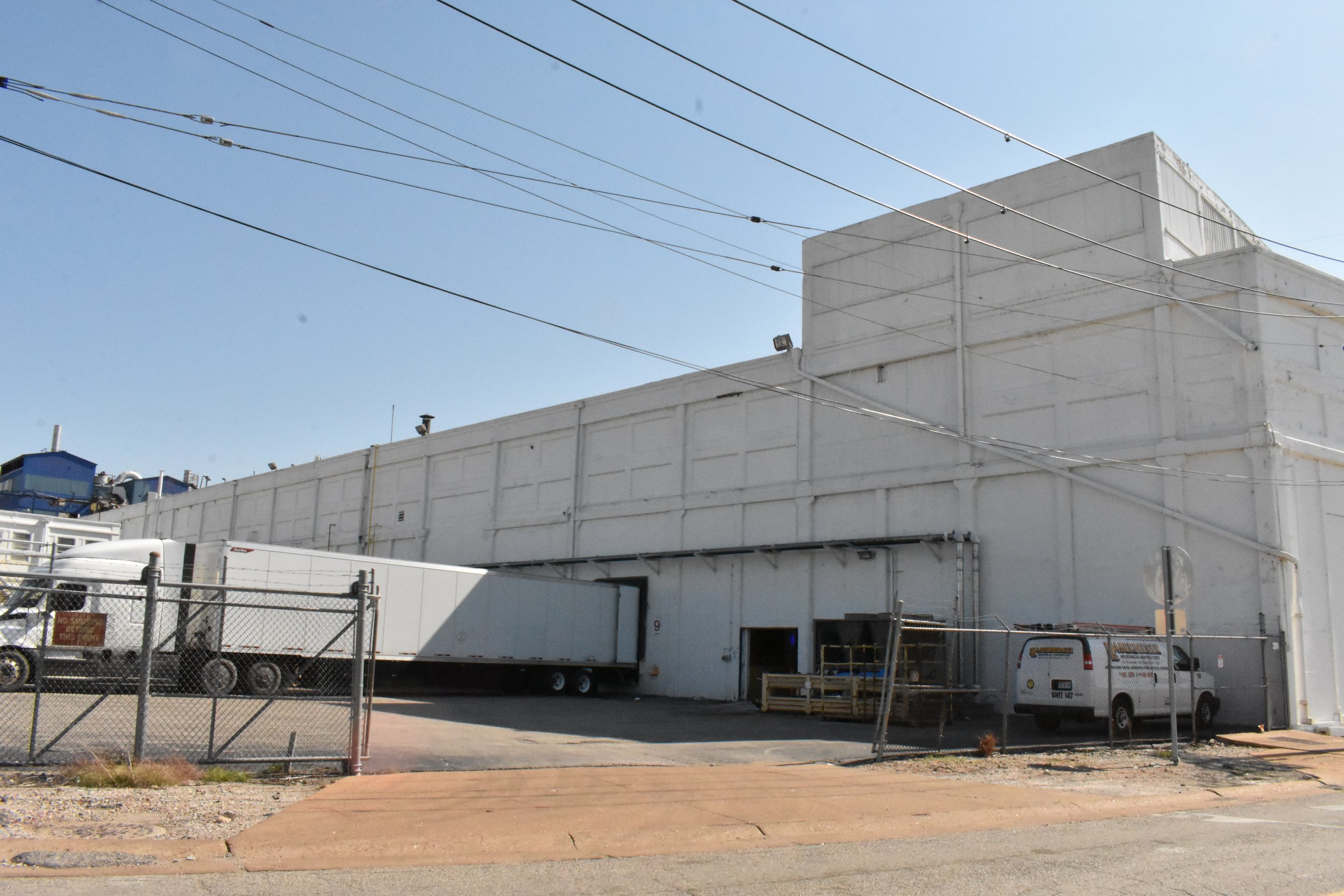
The housing on the south side of I-44 is more of what people think of when they think of the Hill. Small houses built for workers in the clay mines. Some are without front yards, with basement apartments; there are more classic examples of these homes in my original post, but here are some that deviate just a bit.
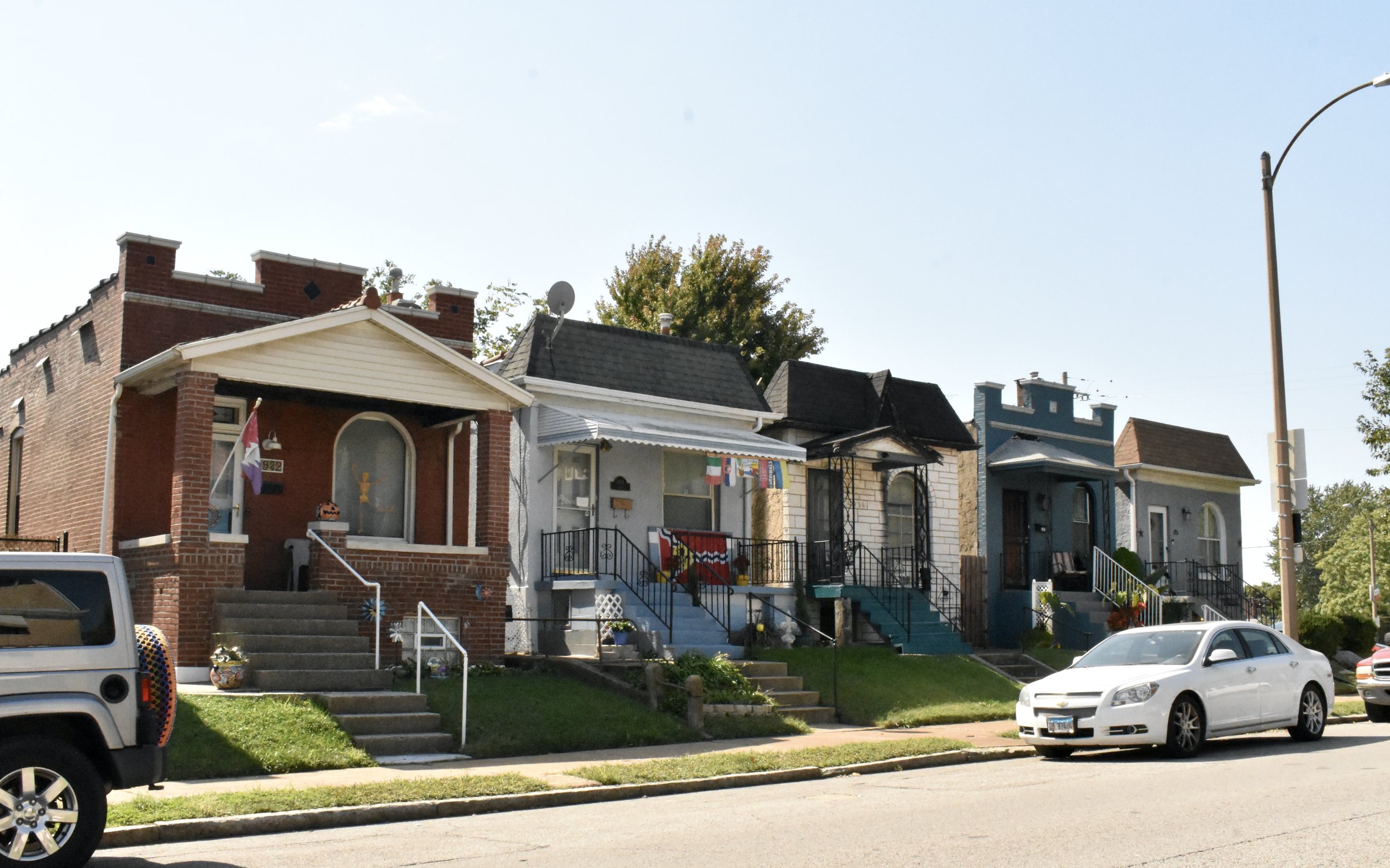
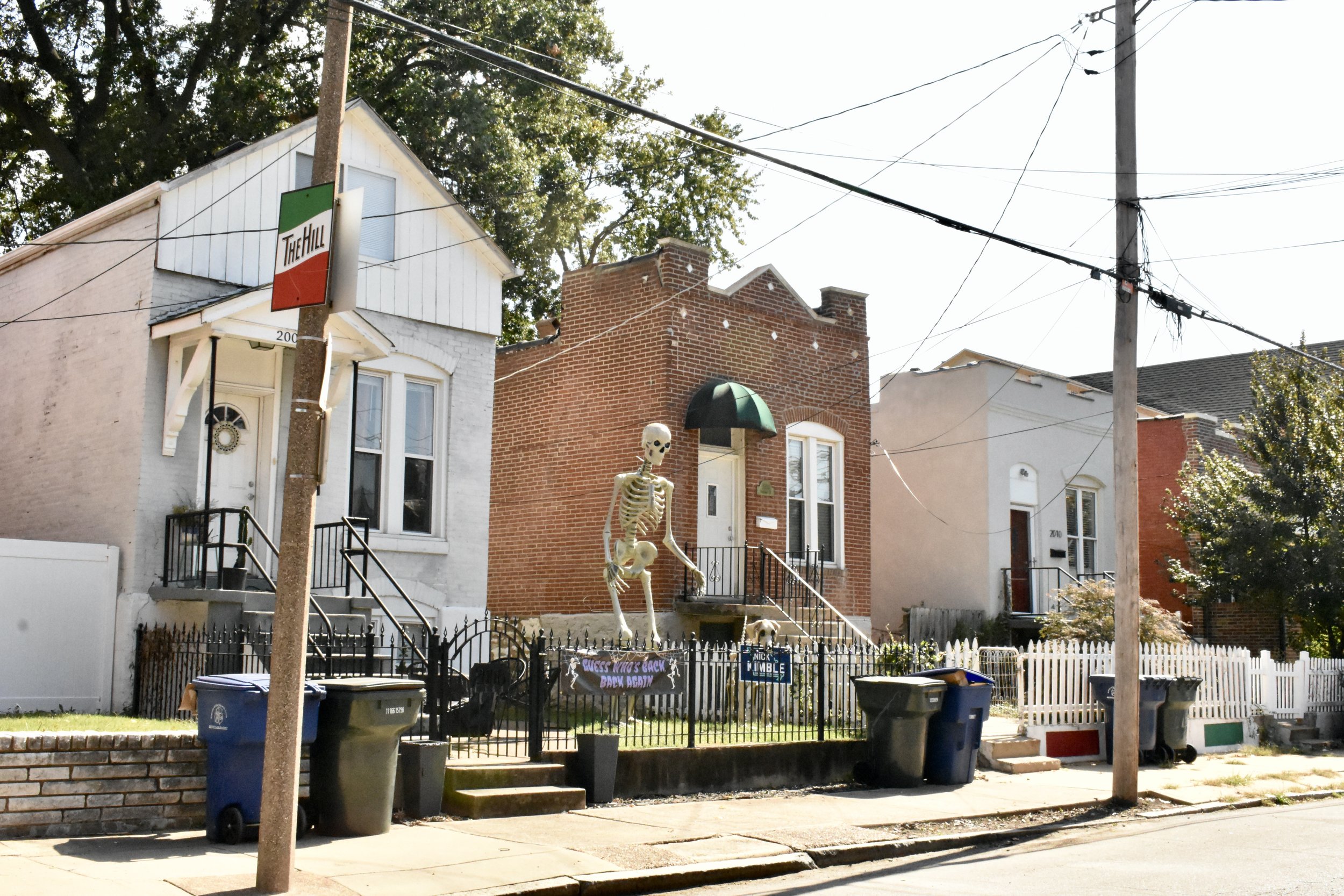
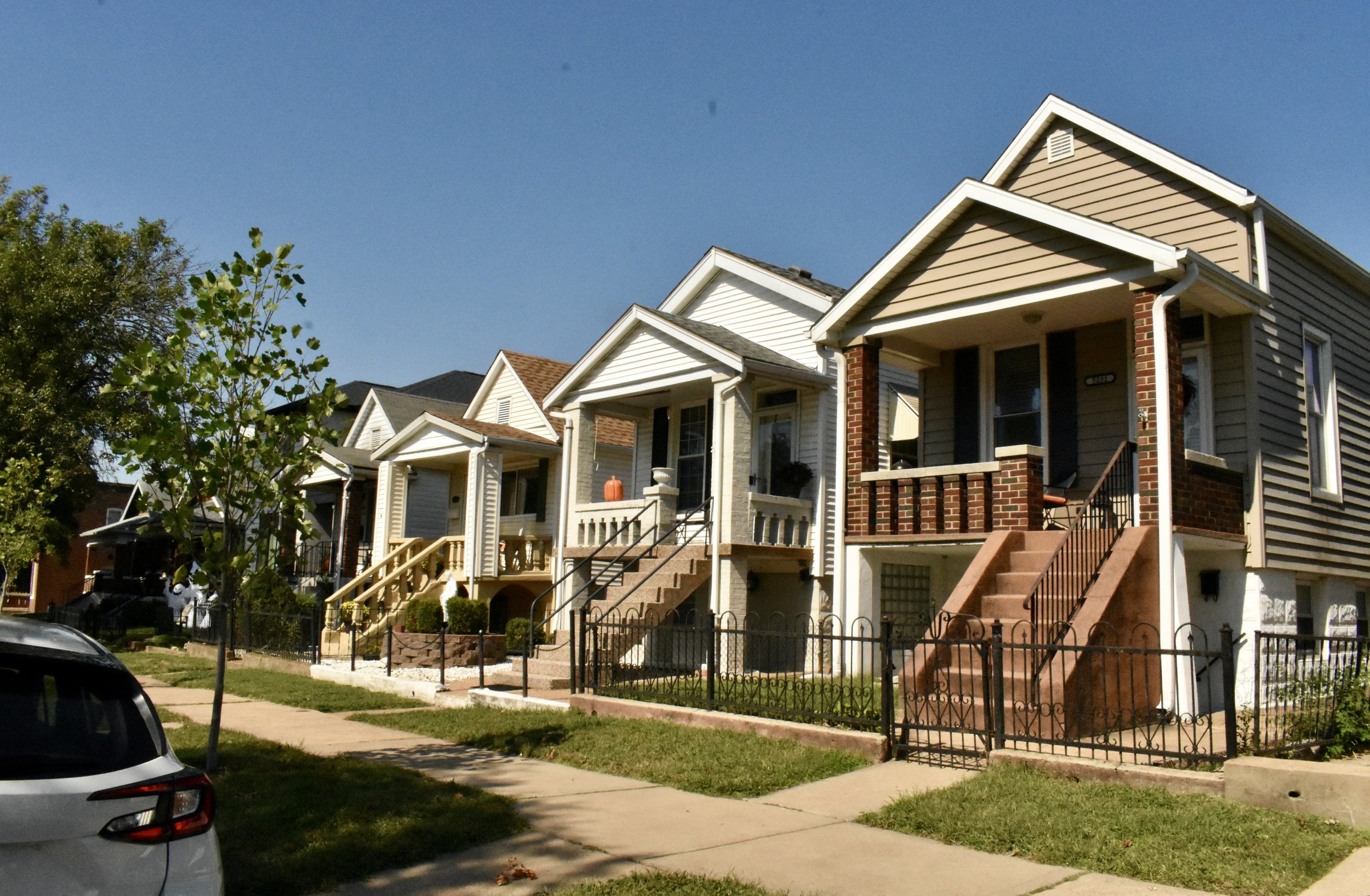
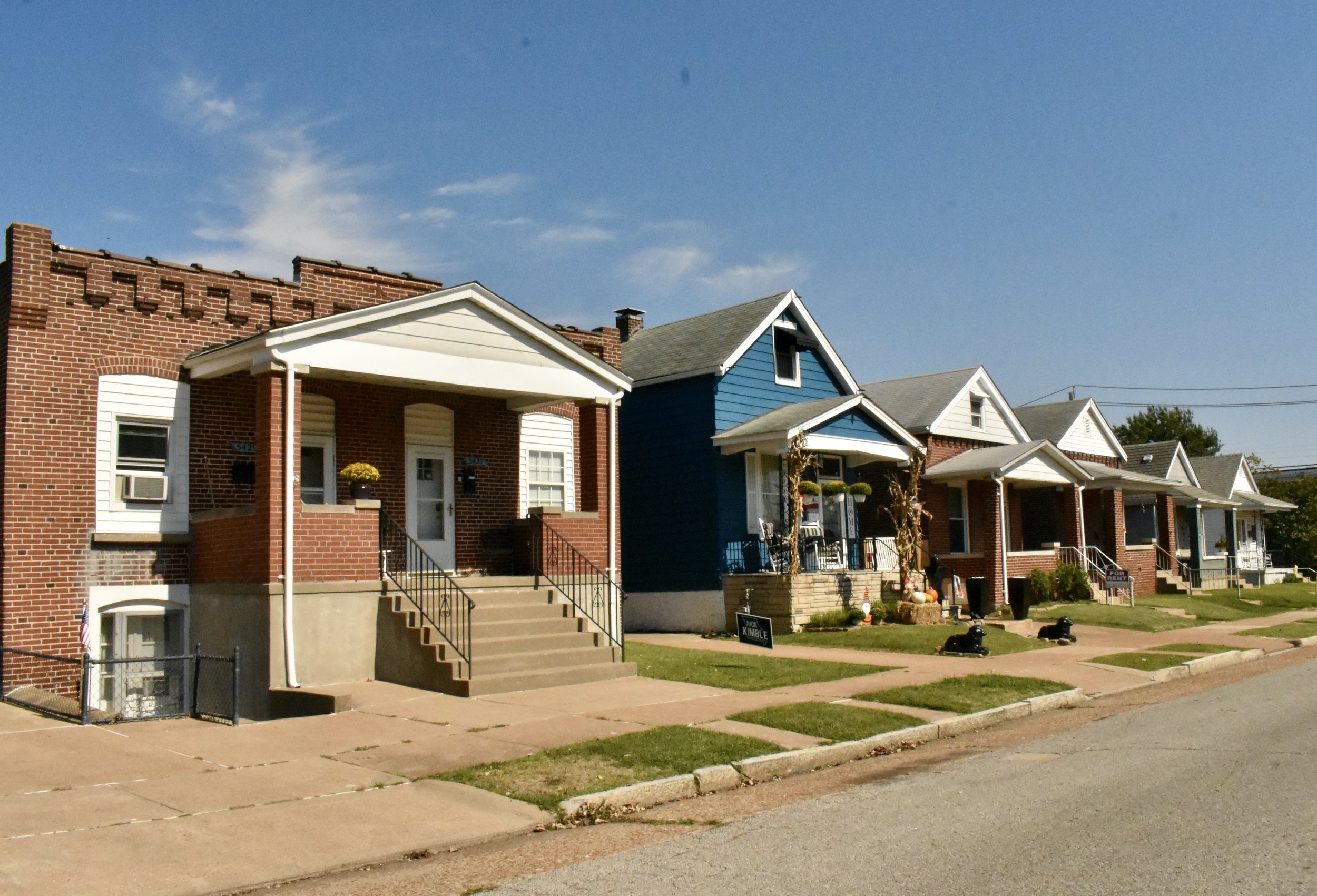
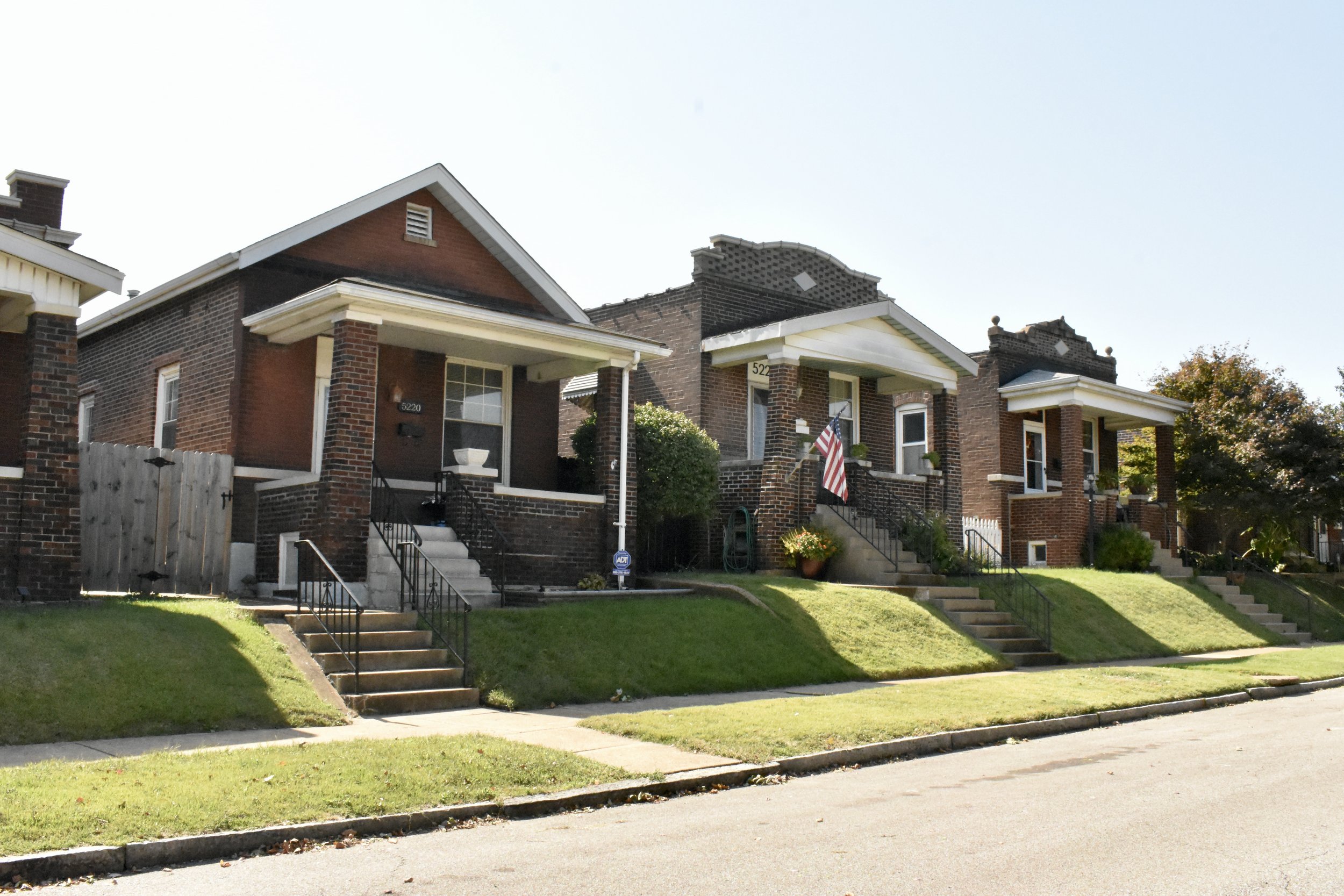
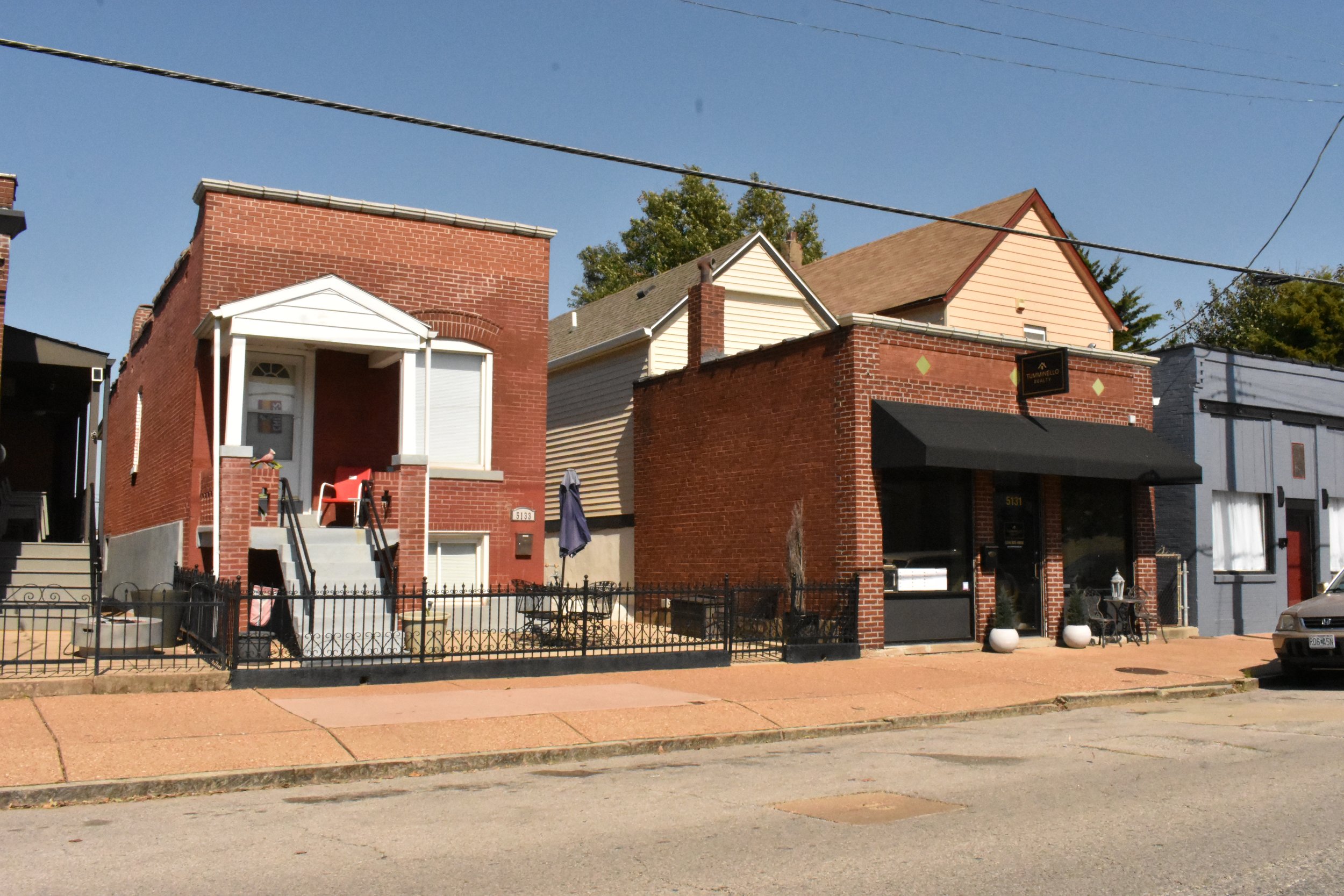

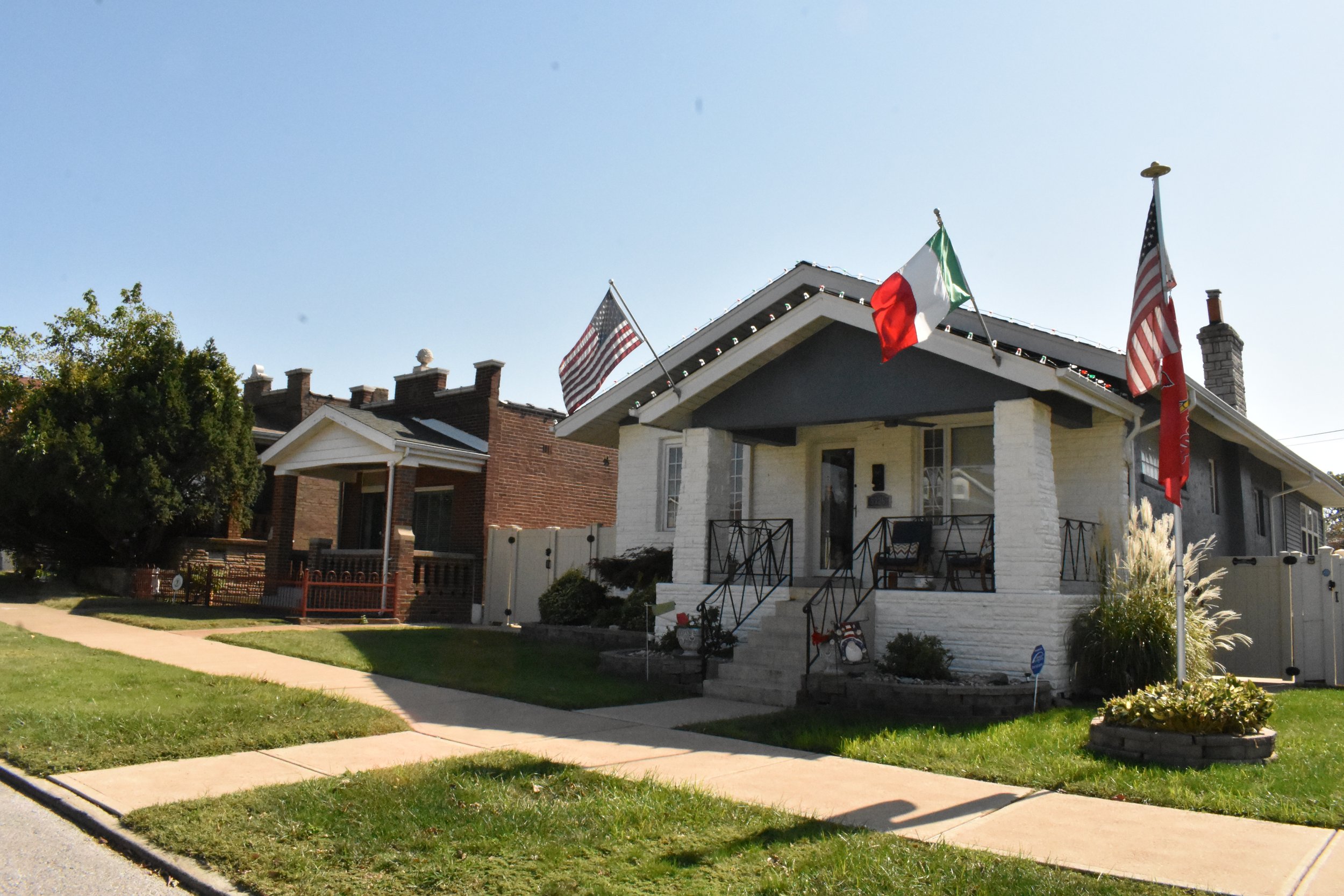
But, there are more typical South City homes west of Macklind to Hampton.
The housing is tidy, well maintained and prideful in the Hill.
Kingshighway is a slew of suburban and auto-centric eyesores, sans a couple buildings that are brick beauties.
Hampton is hideous nearest I-44, but eases up with some cool mid-Century buildings south of the QT.
I’ll get to the infill and new construction below.
***In October, 2024 I revisited the neighborhood and the following includes updated commentary and photos.***
Misses On Original Tour
Overall, I’m pretty okay with the original post. But, I made the mistake of following Southwest too far, past Columbia Avenue, sorry Southwest Garden. Also, I didn’t represent enough of the residential area north of I-44 that got butchered from the rest of the neighborhood.
I learned that before the Italians settled here, it was largely Black and Irish…the cheapest labor you could find in the late 19th/early 20th century, to work in the clay mines in the area.
It was a big bootlegging area during prohibition as well. In fact there are several blues songs from the 1920s and 30s that reference “Dago Hill” when the hooch was aflow. Hey, I don’t make up these derogatory names, don’t shoot the messenger.
I forgot to include a photo of the former Columbia Theater, a 1920’s building that is now a private residence, you can still see the screen area.
Outside of St. Ambrose, which is the mack daddy of churches in this highly-Catholic neighborhood, there is another handsome church, the Bansuk Baptist Church, a Korean sect that keeps an old St. Louis classic gleaming in the sun.
Noticeable Changes
Infill, new construction, rehabs and some real architectural wins, including the former warehouse that was converted to Kings Hill and a law firm HQ on Daggett.
There has been a tremendous amount of additions, rehabs and tear downs and build ups. The bag is a mixed one for my taste. But overall, it seems very “the Hill” with a touch of gaudiness in some cases all the way to perfectly scaled, higher density housing.
I’ll share some that caught my eye you can be the fuudge.

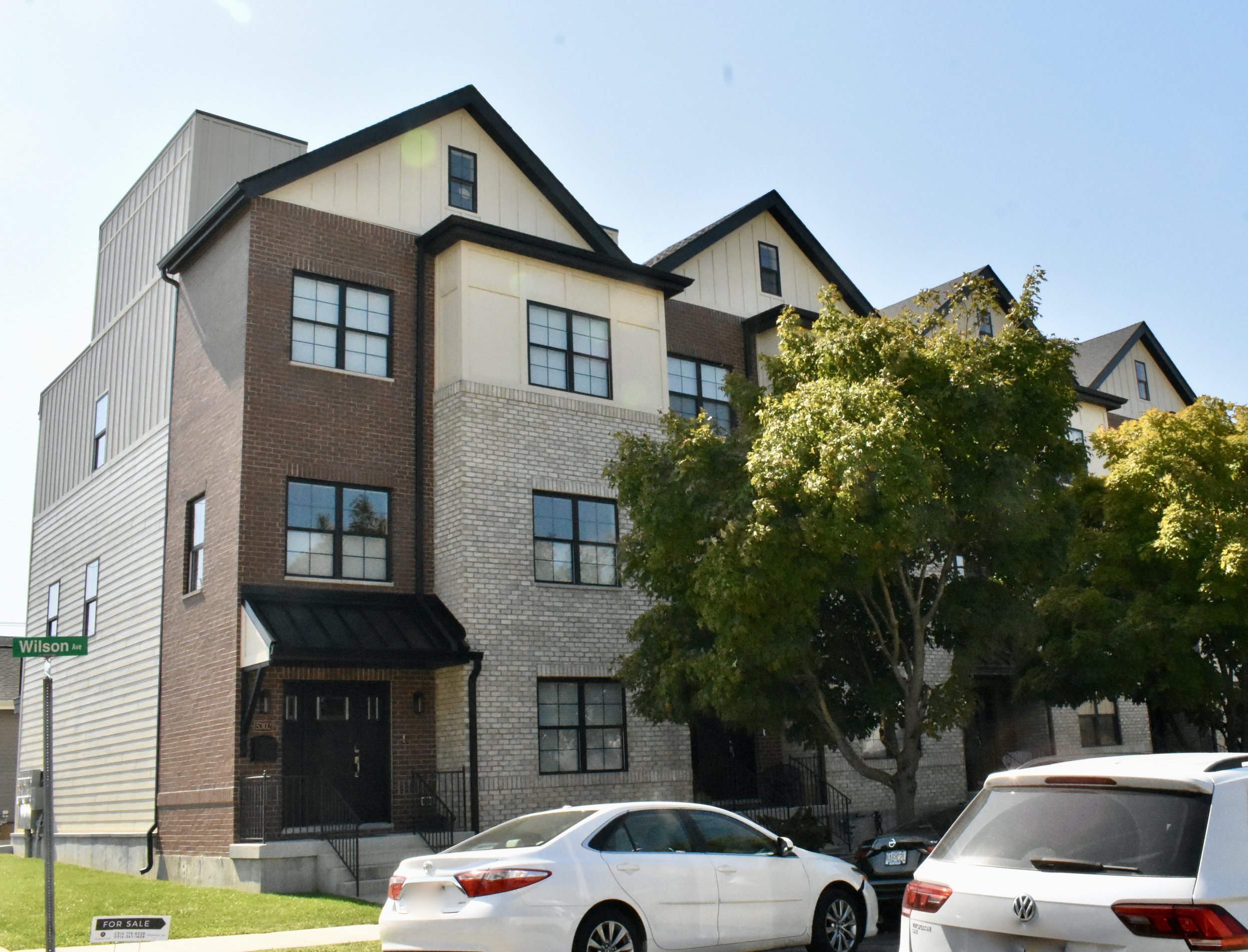
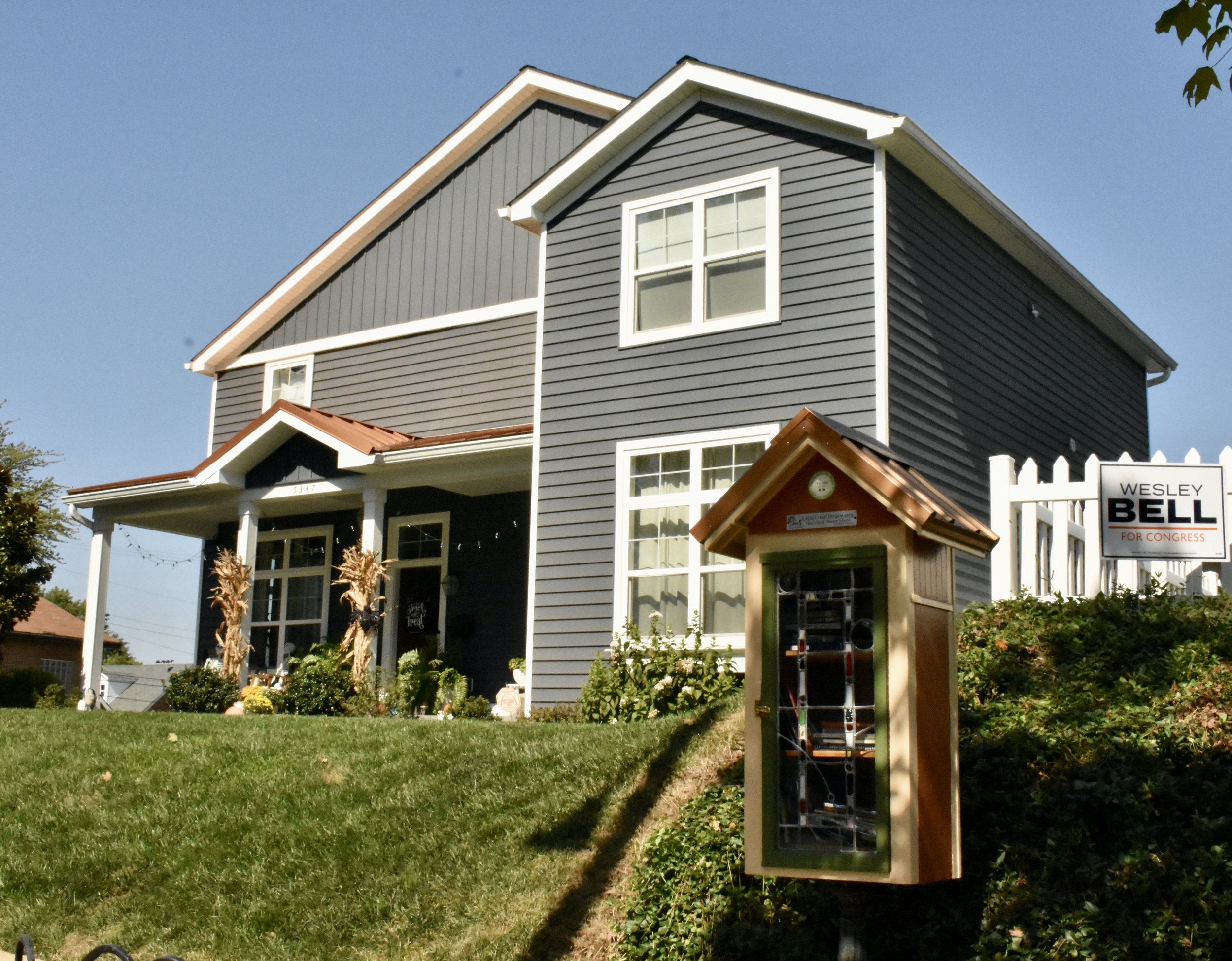
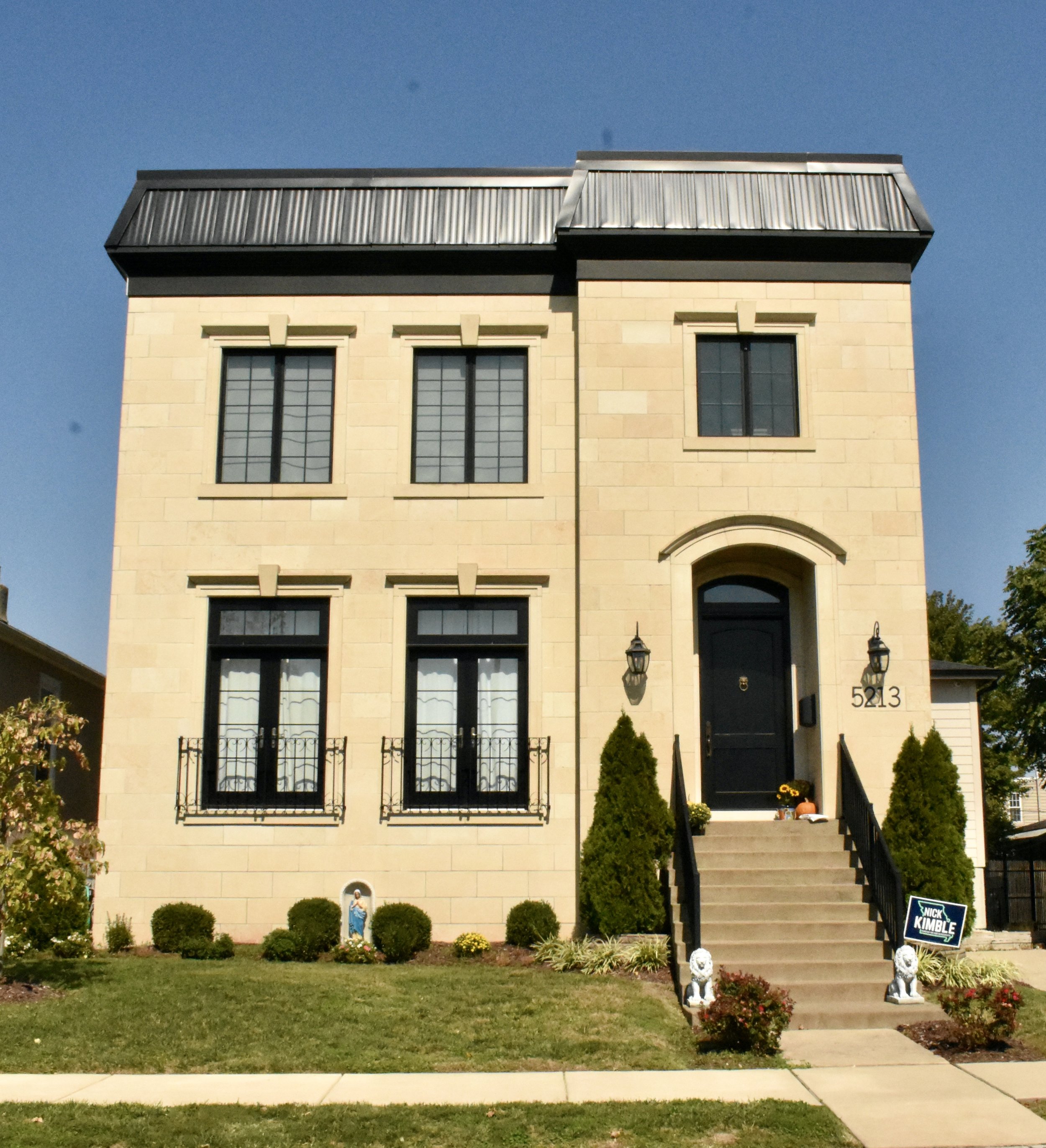
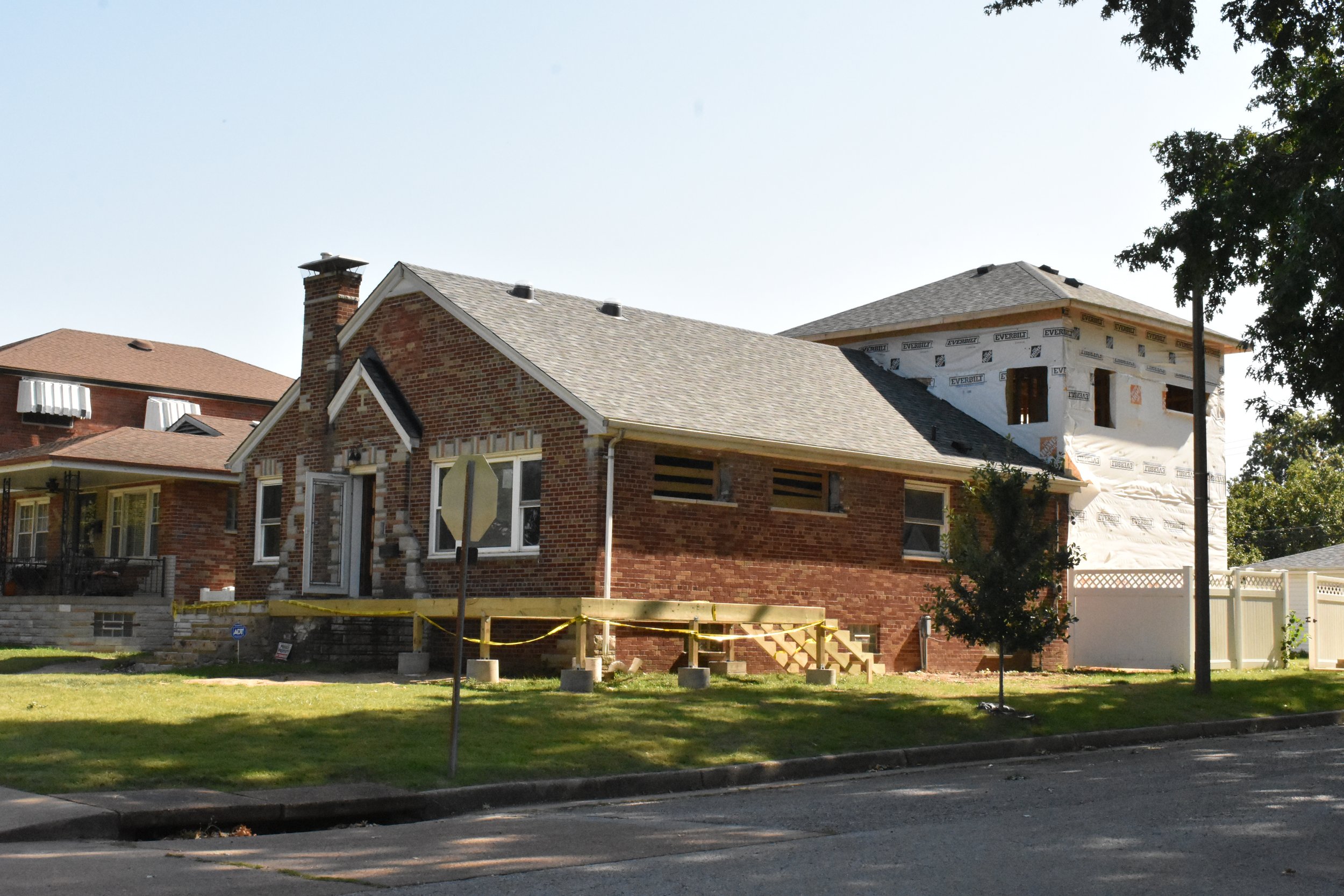
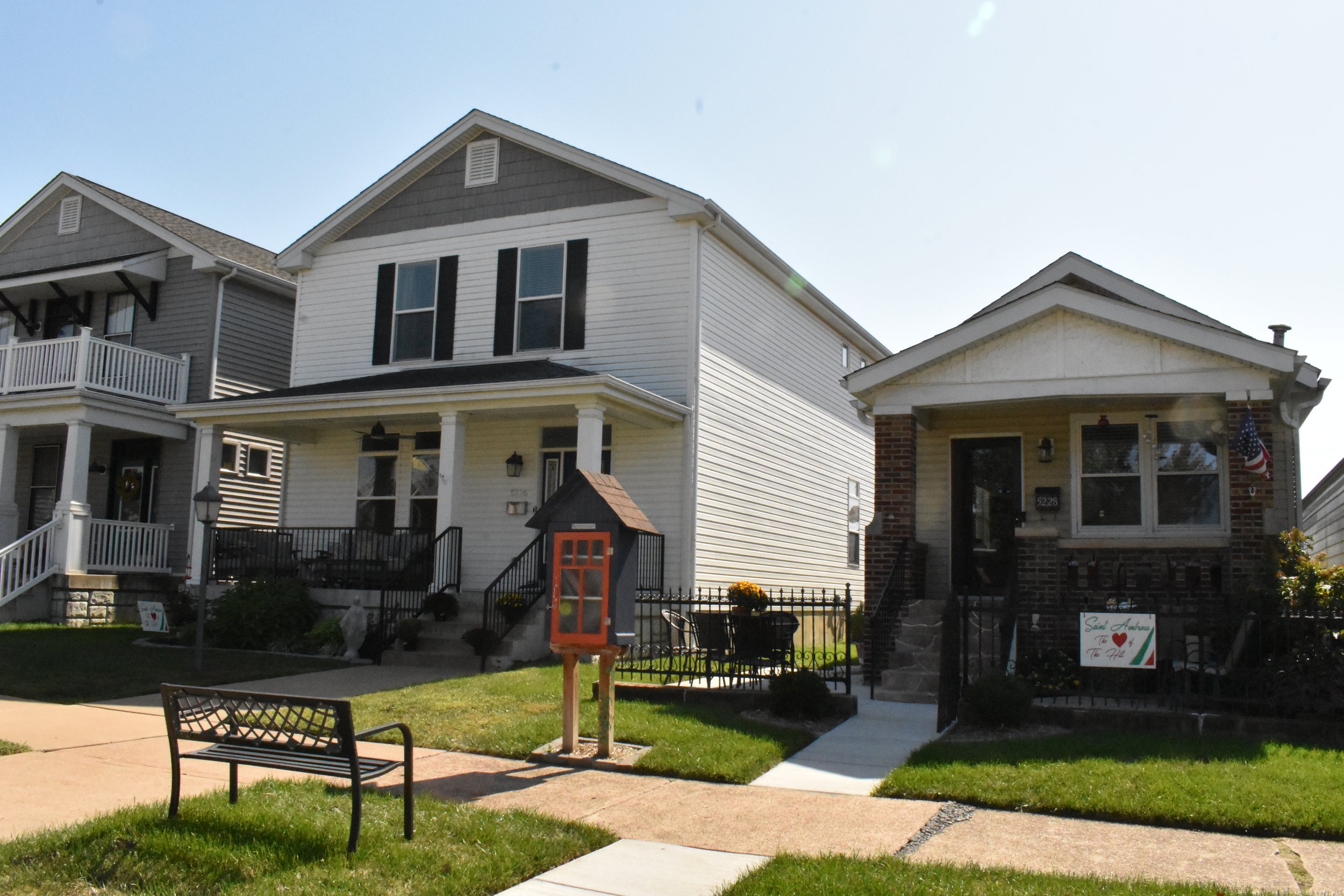

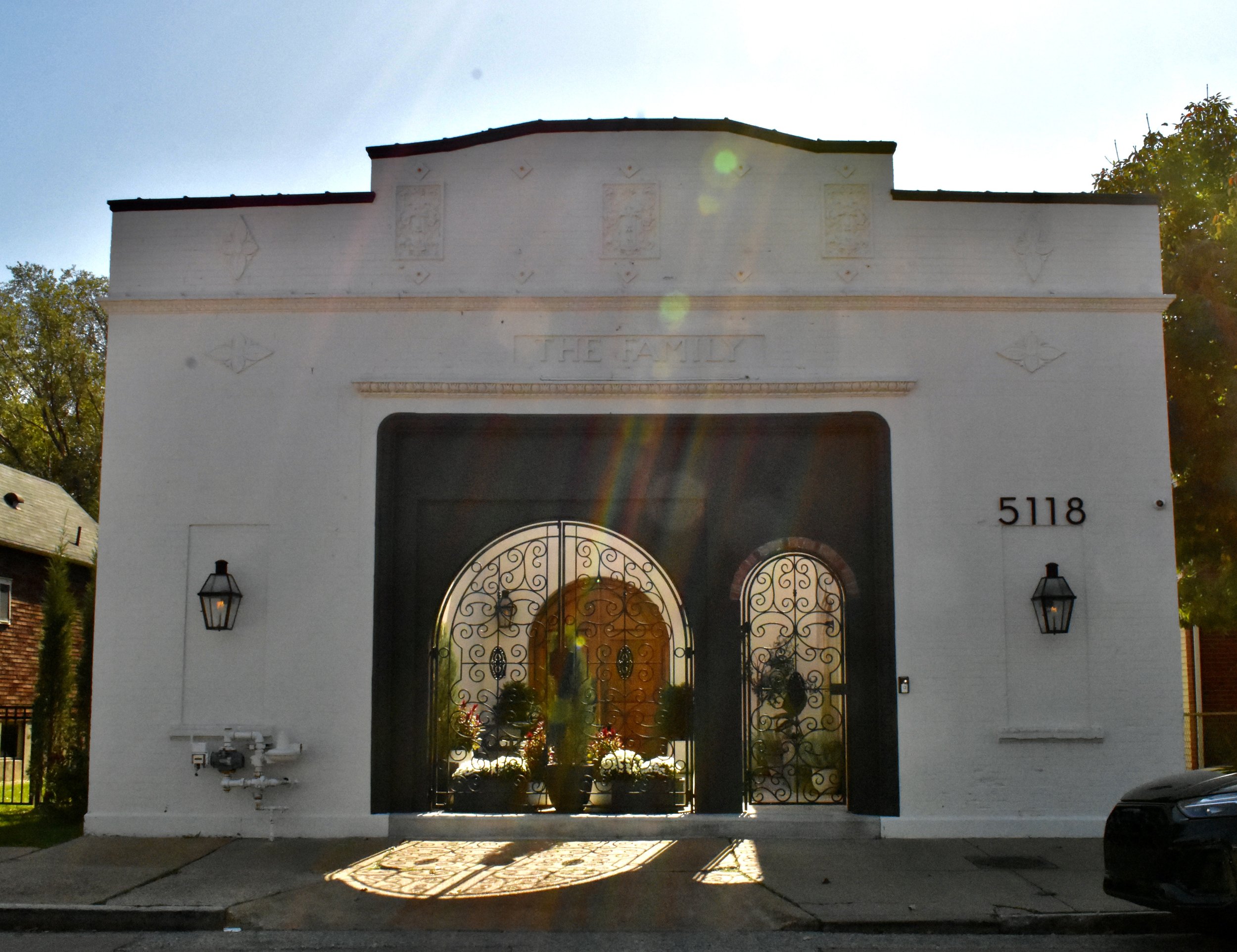
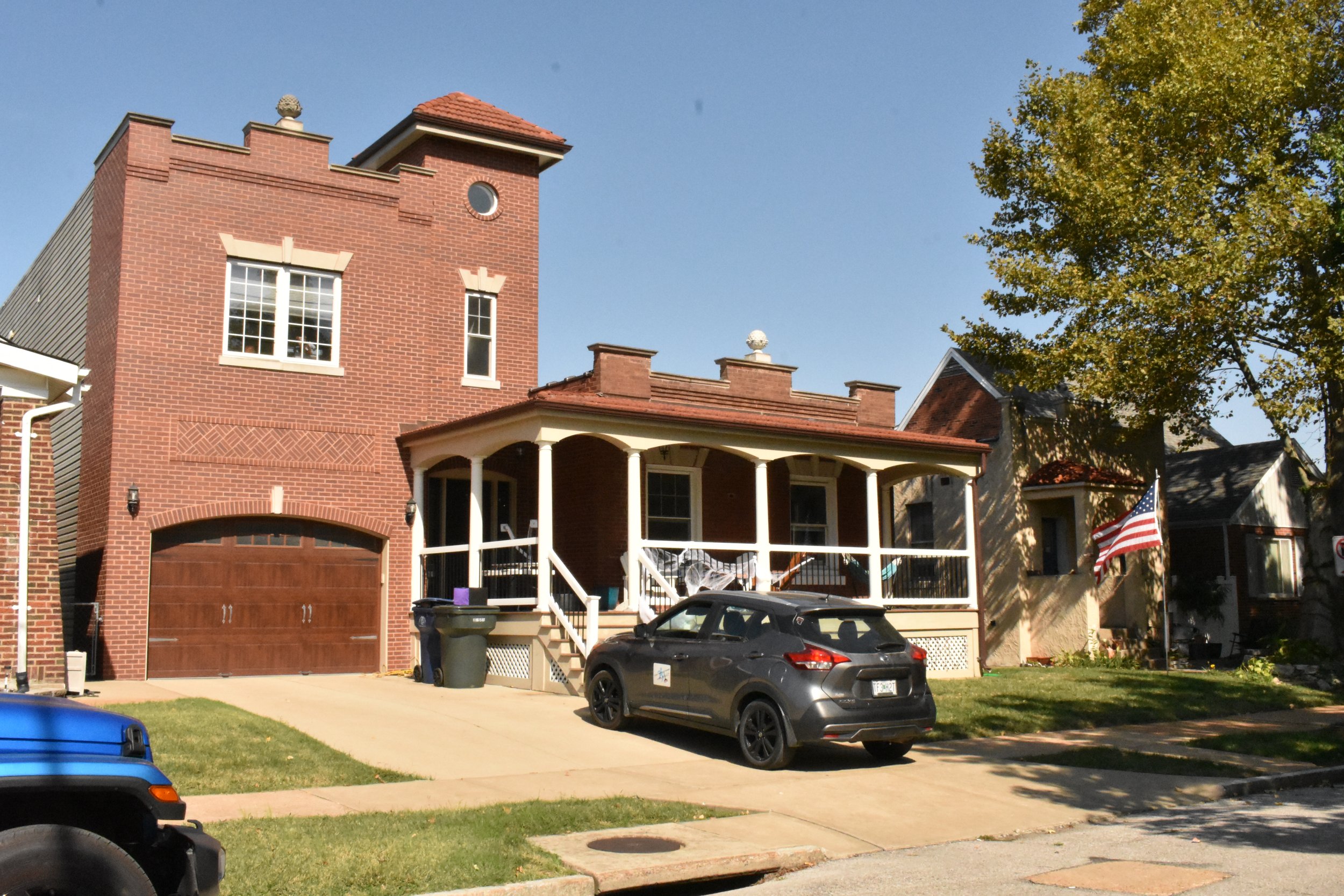

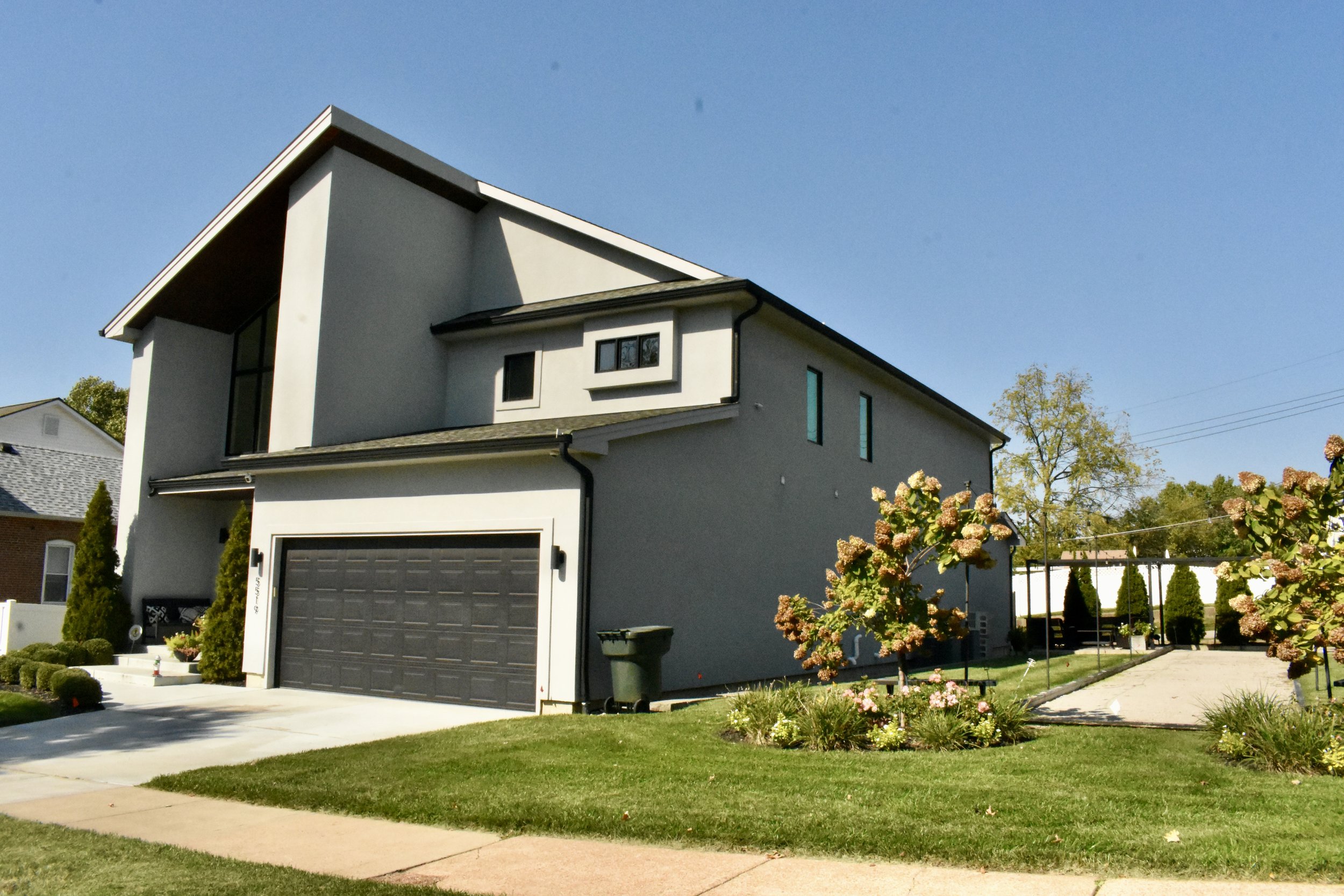
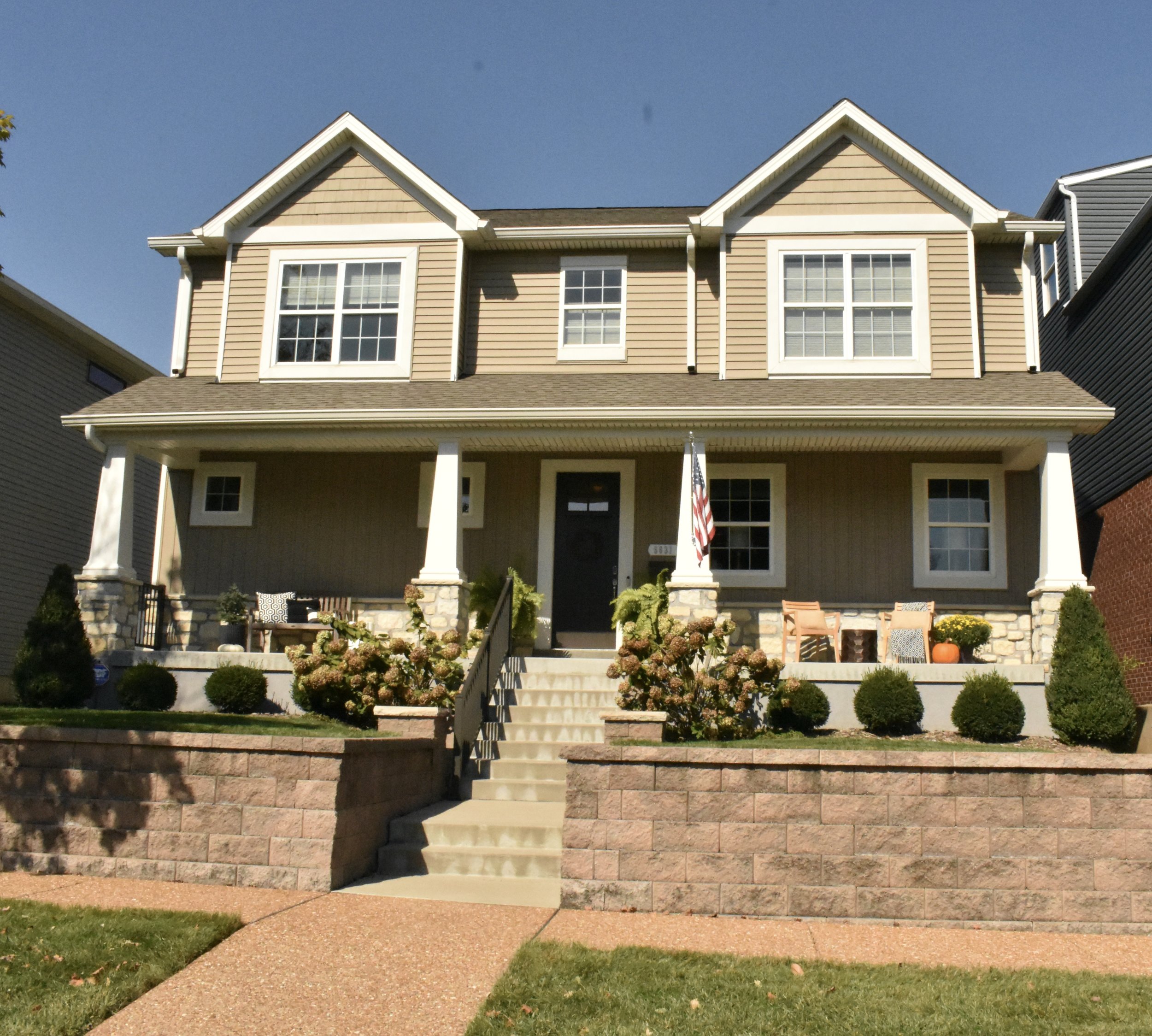
The most noticeable change might be La Collina, a new housing development that respects the rectilinear street grid and brings back alleys! I love the density and aded residential, but the suburban builder made some serious city mistakes, like mailboxes on the street (our mail delivery is by foot in St. Louis, duh) and they put utility boxes in the front yards like they do in suburban developments. They also cut some corners on design that wold have fit in so much better. But hey suburban builders are suburban builders.
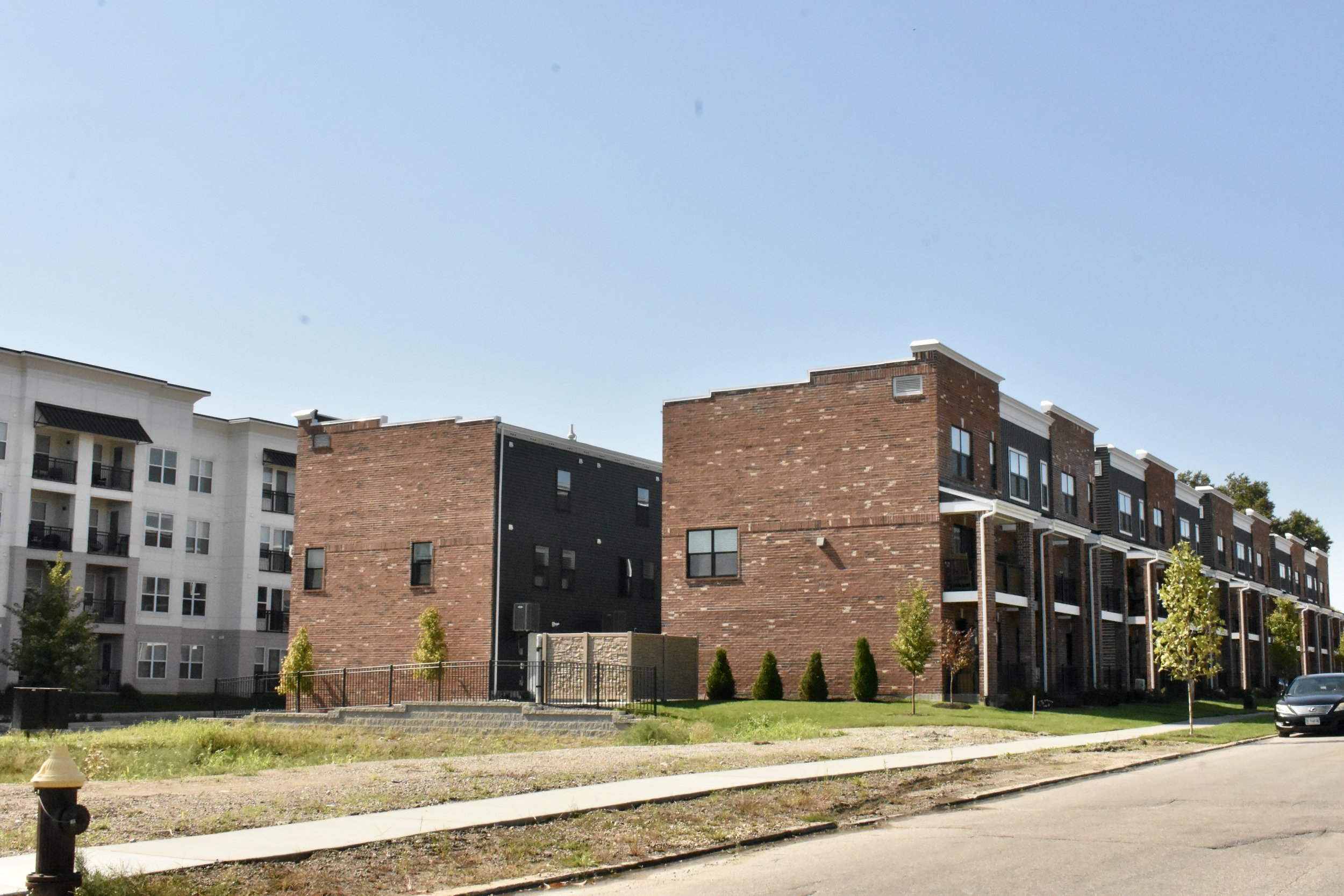
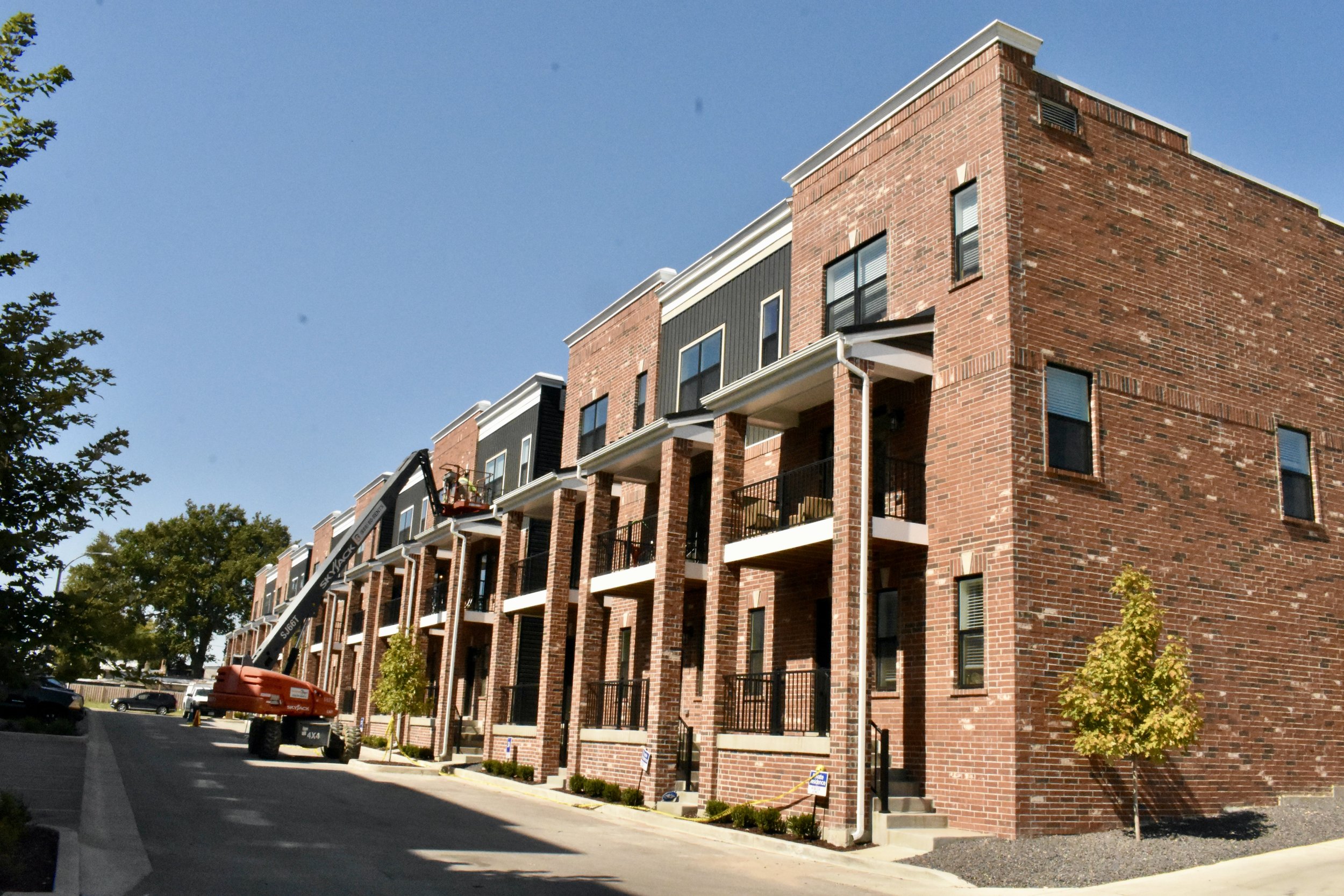
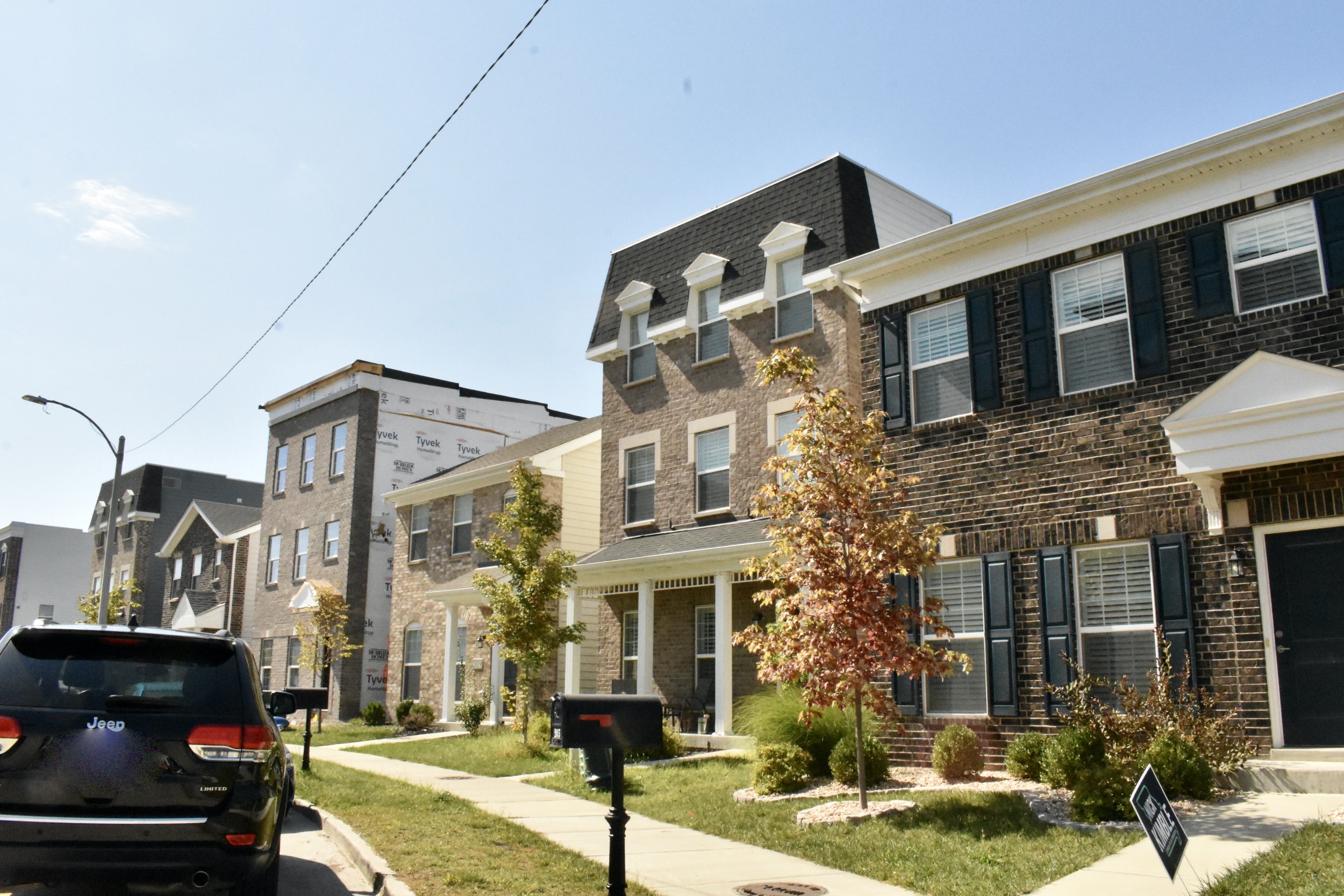


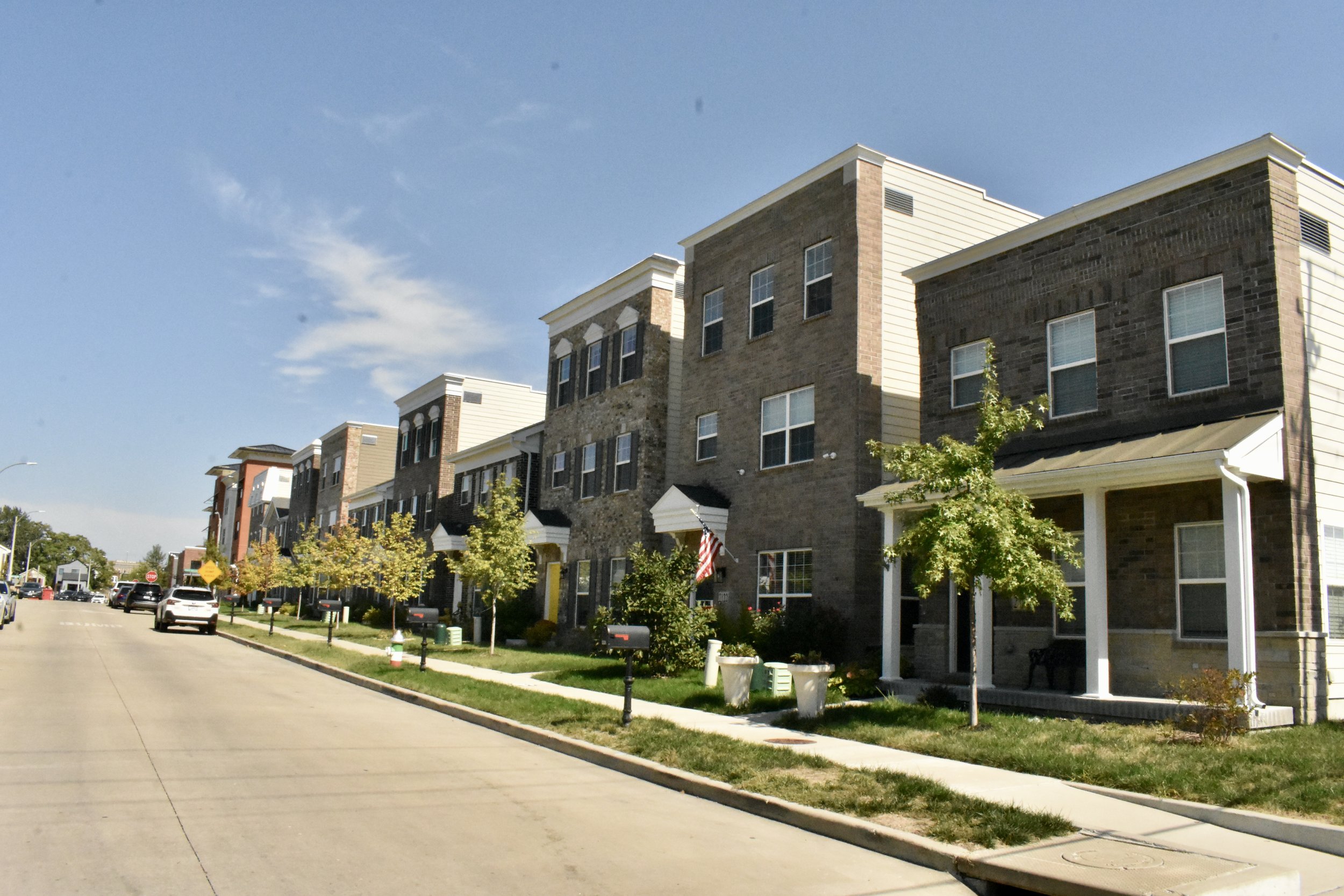
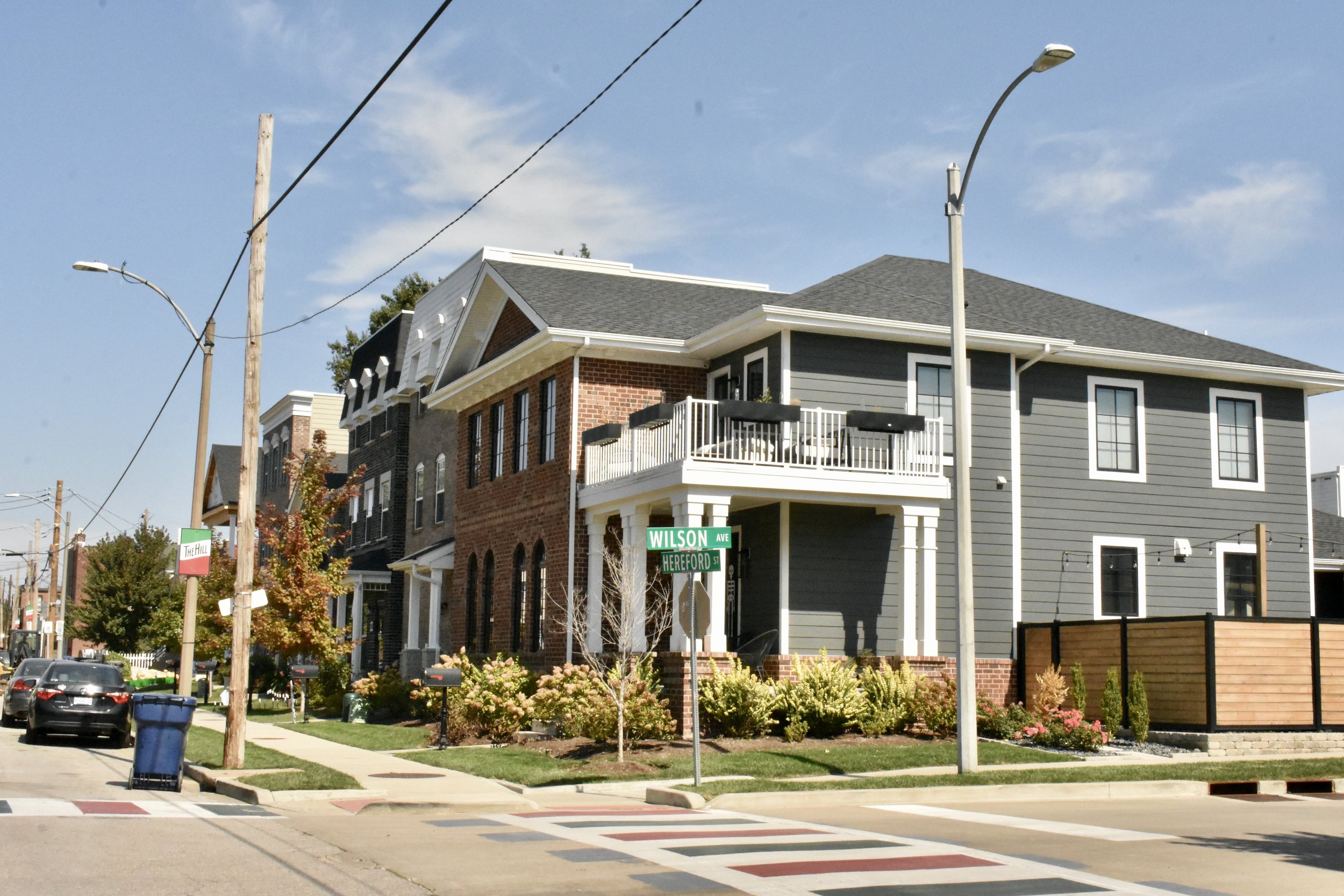
Overall, I welcome it and it seems to be better than the decade’s past attempts at modern housing with cul-de-sacs, driveways and trash service on the sidewalks. La Collina is still adding more housing as of this tour.
Another lovely addition in the past decade is Piazza Imo, a gorgeous space with seating, chess and a fountain, hand-sculpted from marble, imported from the Apuan Mountains in the Carrara region of Italy.
This space is perfect and so “the Hill”. It was opened with help from citizen and business donations.
May I recommend getting a couple scoops of gelato and walking out the back door onto the piazza.
You just can’t beat it. A welcomed addition to the Hill.

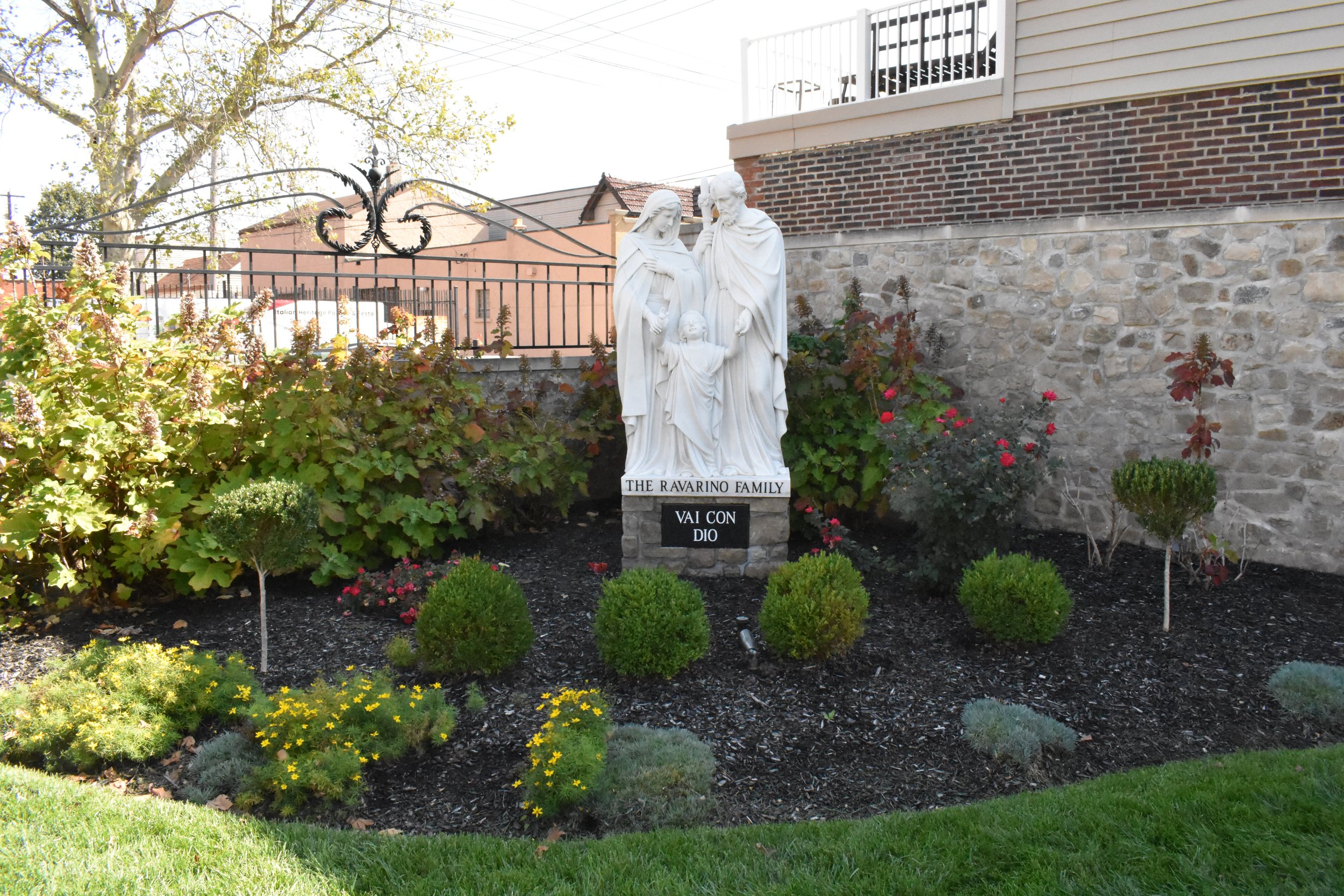
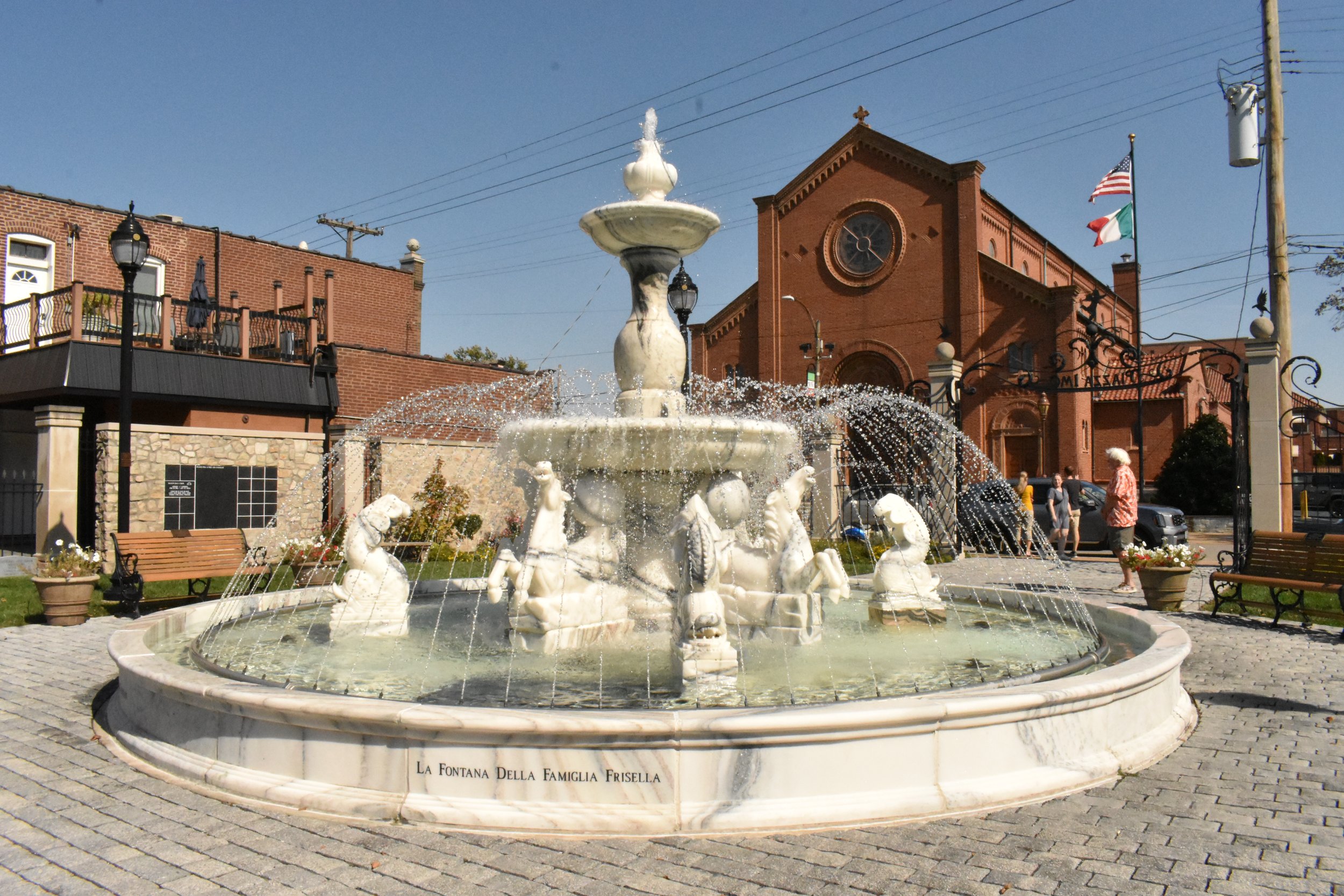
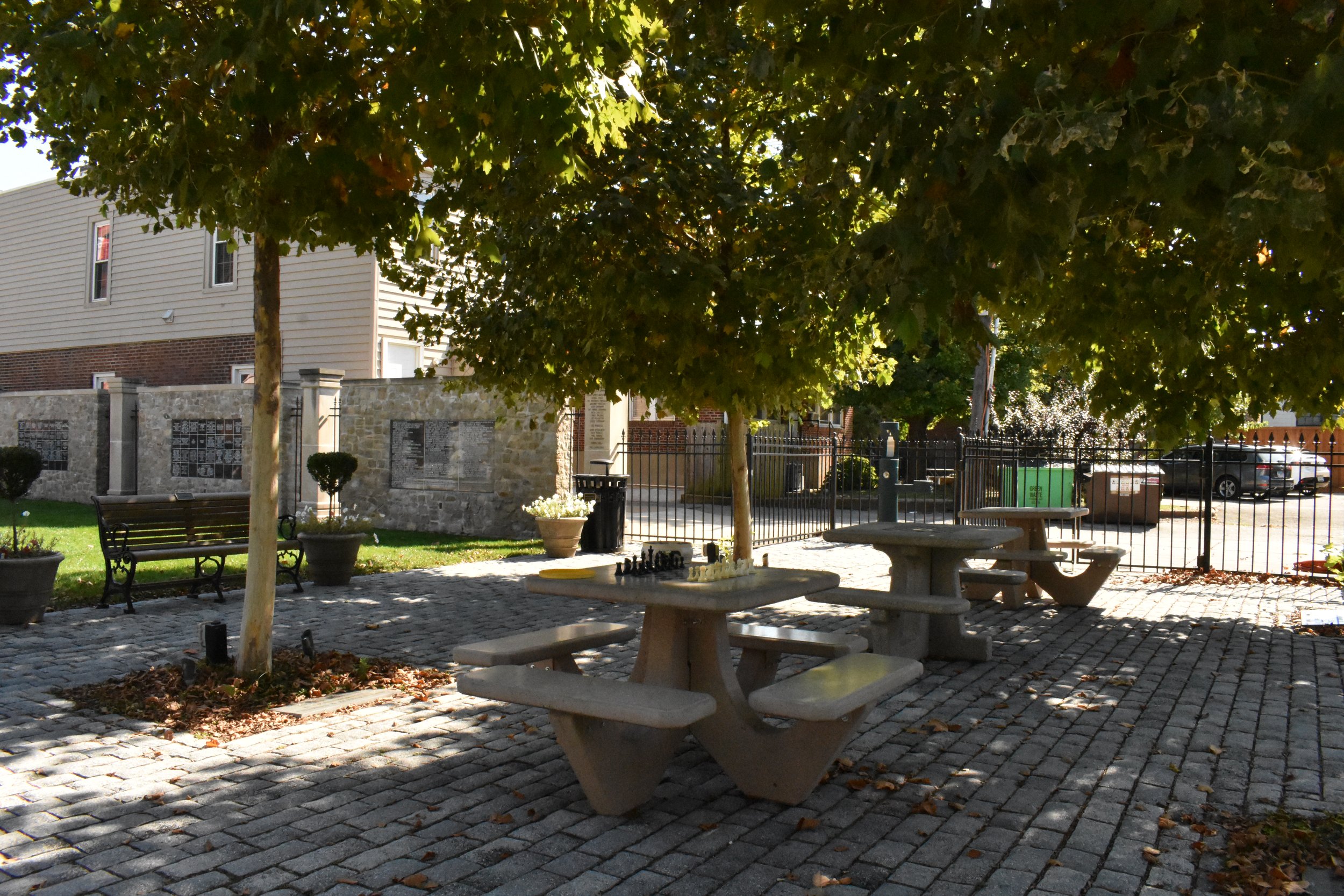
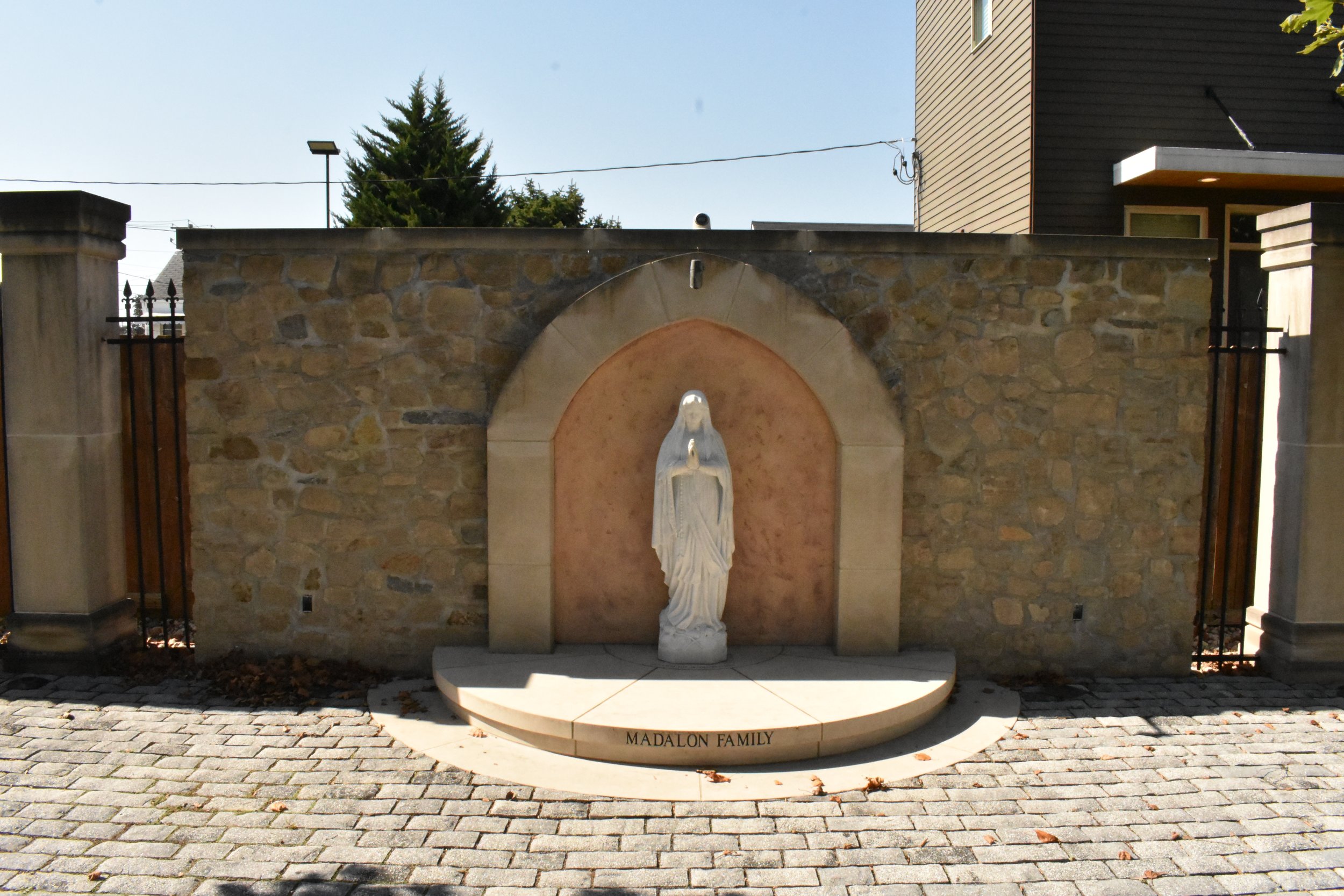
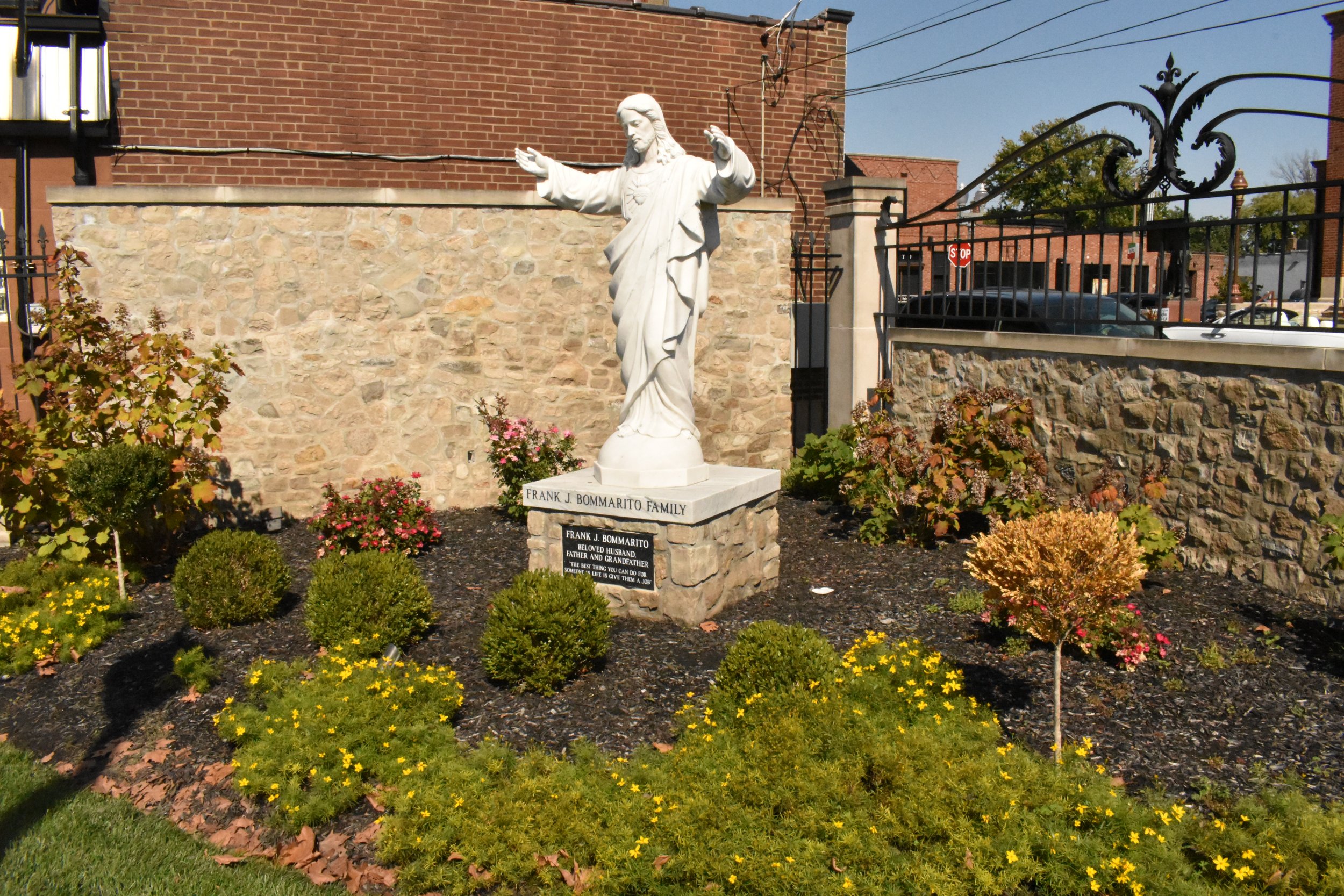
What Are The Future Needs?
Try to control the most aggregious examples of ugly new construction. While that is subjective, you know it when you see it. The Hill is too important to let fall into suburban laziness.
The biggest improvement would be developing the long vacant lot at Shaw and Boardman just northwest of Rigazzi’s. Imagine a 4 story brick building a la the new one on Spruce. It has been a hideous, vacant lot since for as long as I can remember. Owner? Suburban of course. Imagine a brick, 4 or 5 story apartment building with street-level retail. I’ll use the newish infill on Spruce, downtown as an example of what would be a huge improvement.
Thank you for reading.
Additional St. Louis City Talk Reading



















